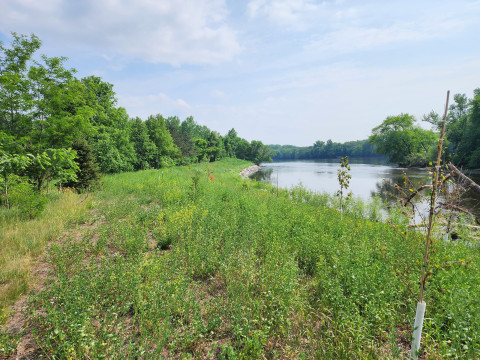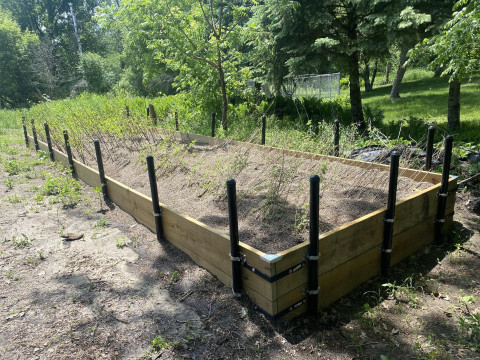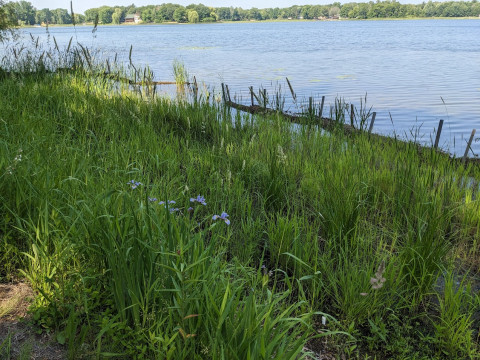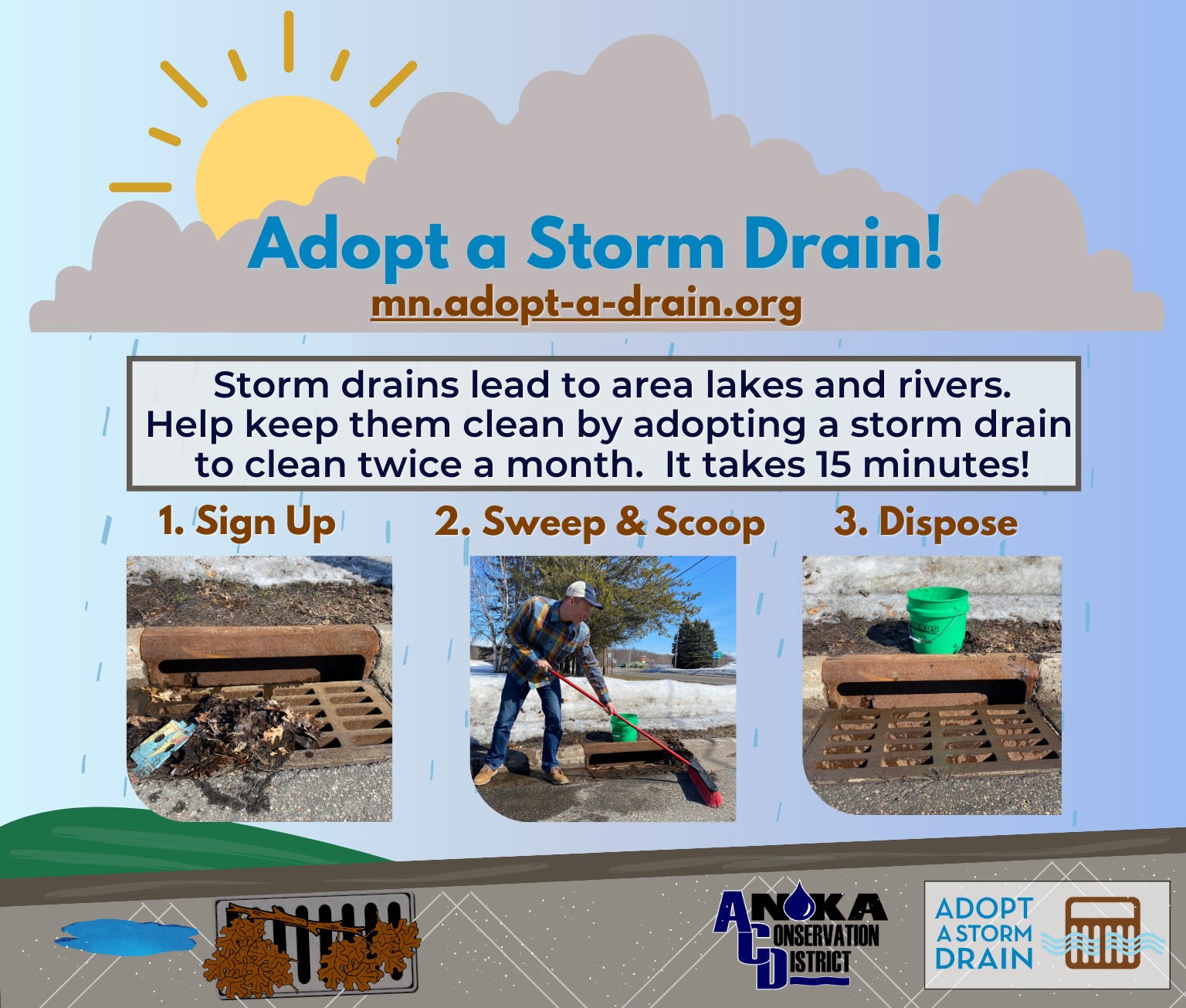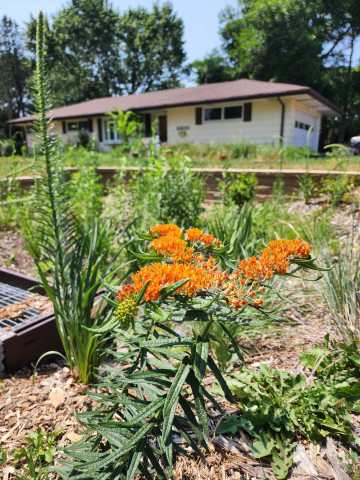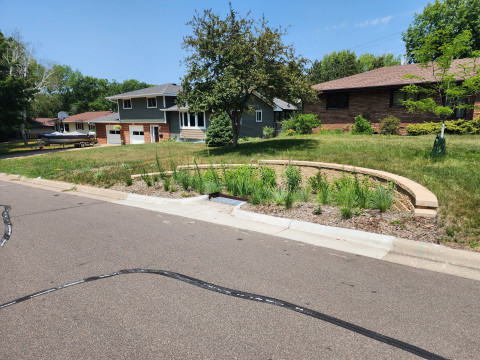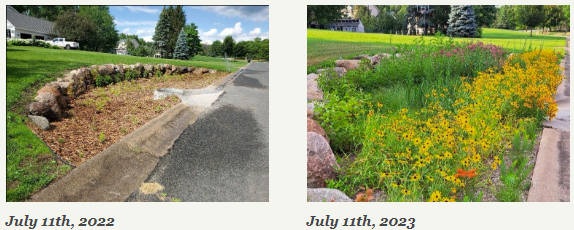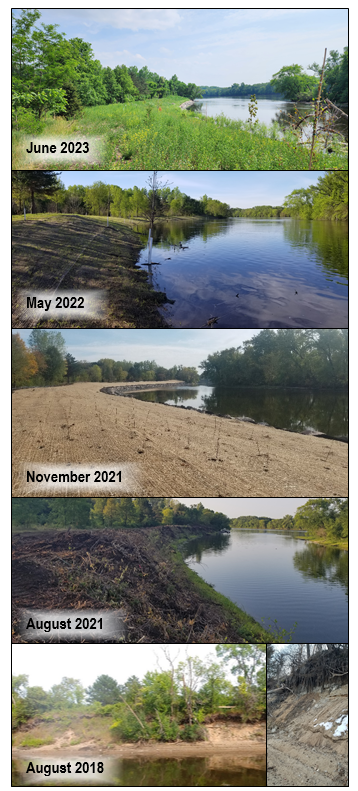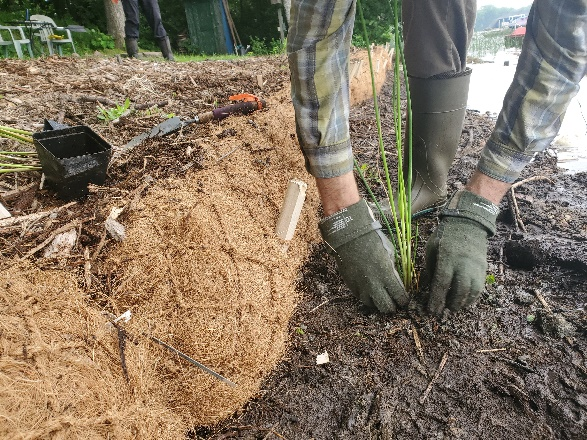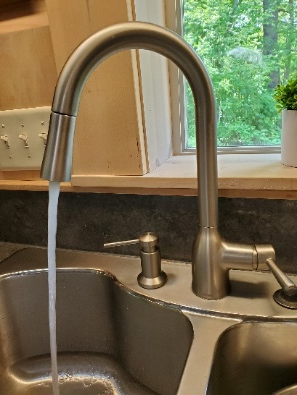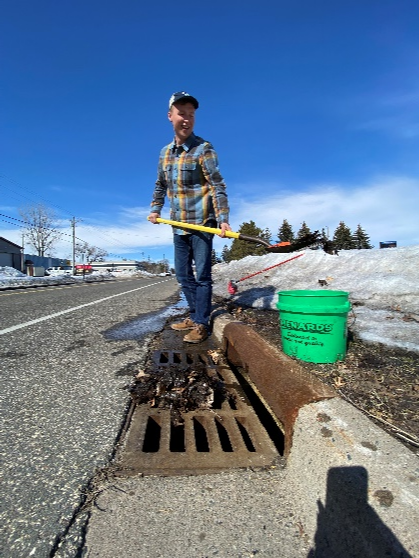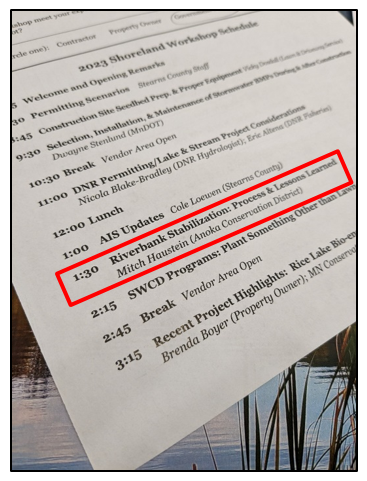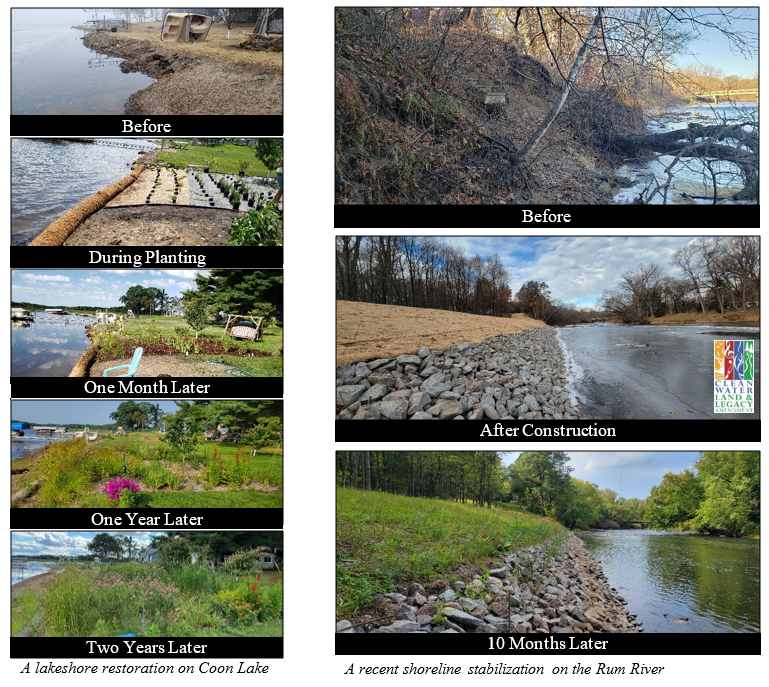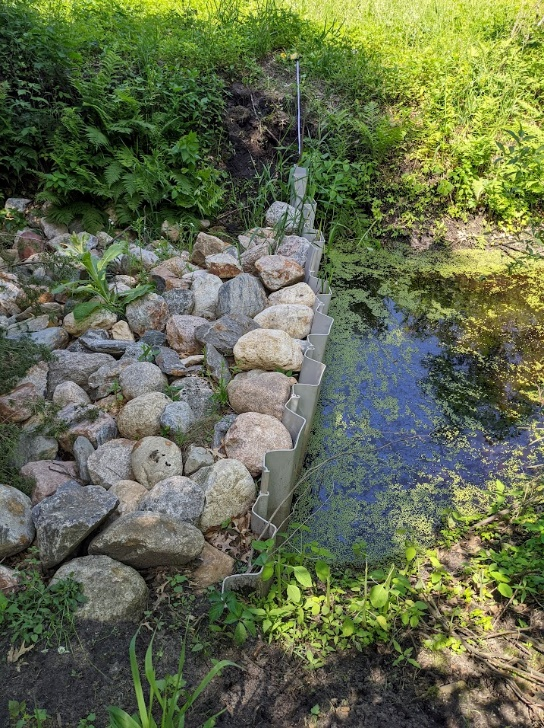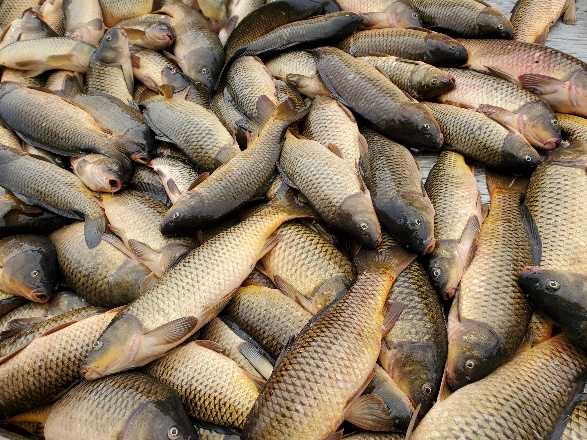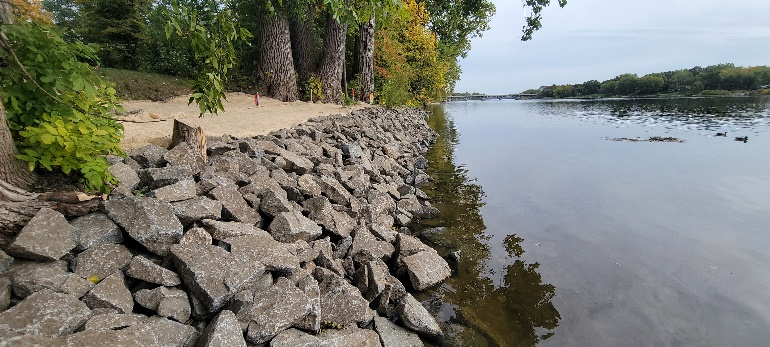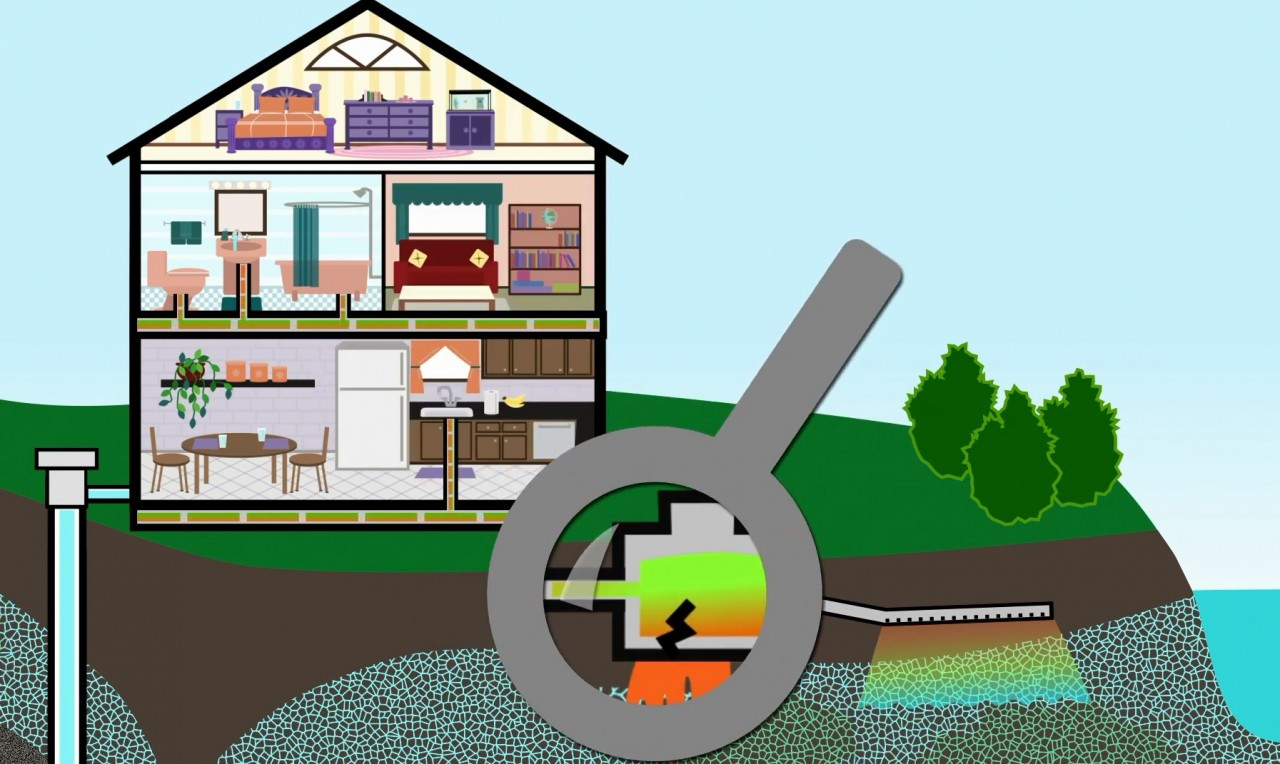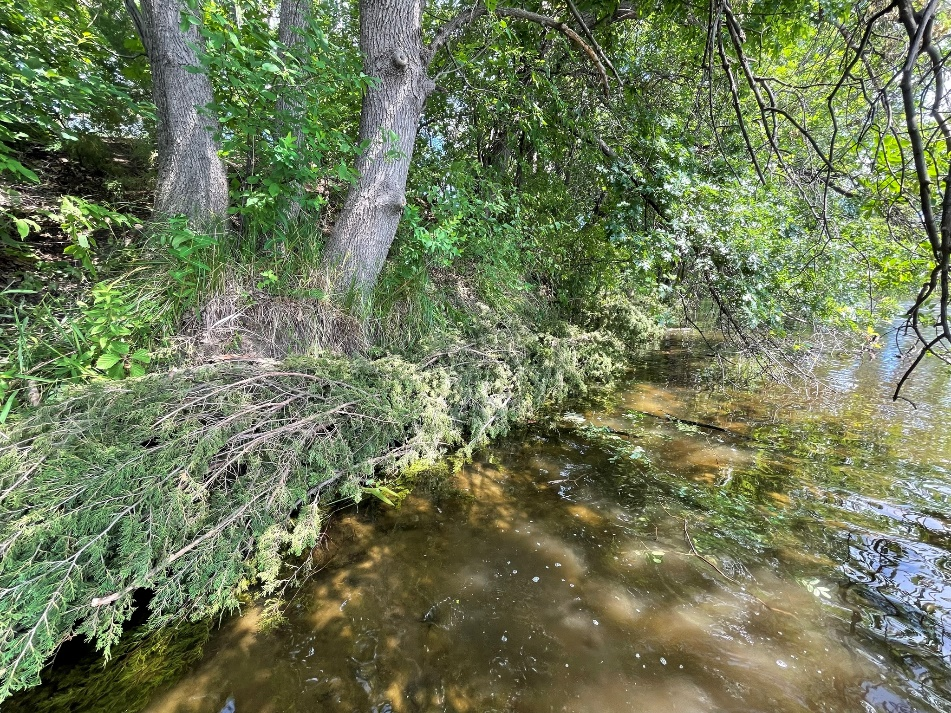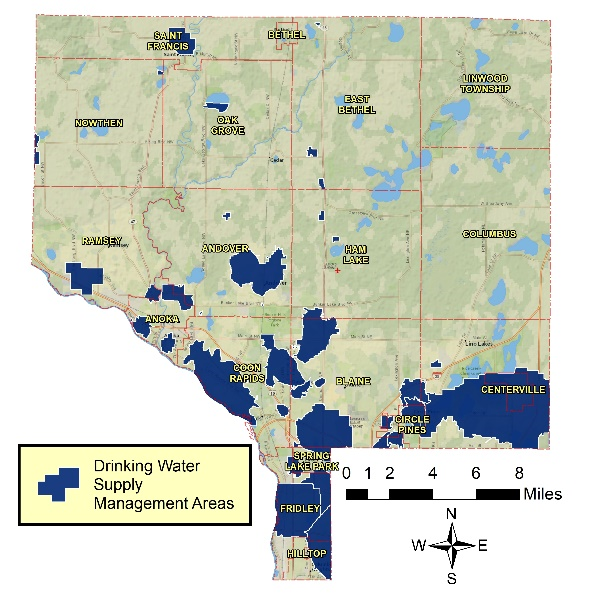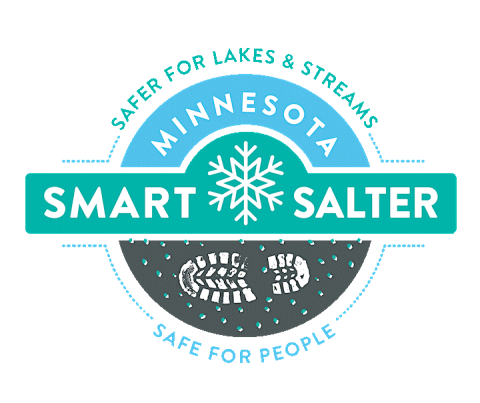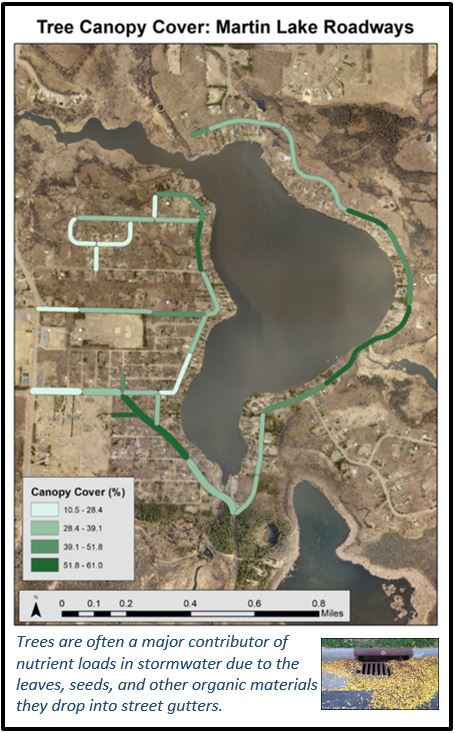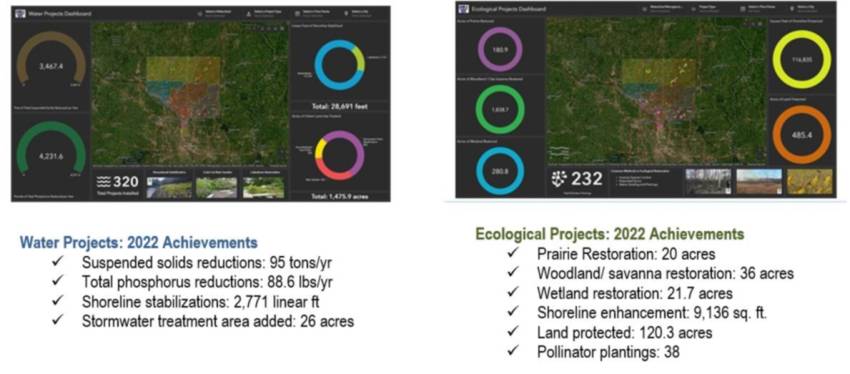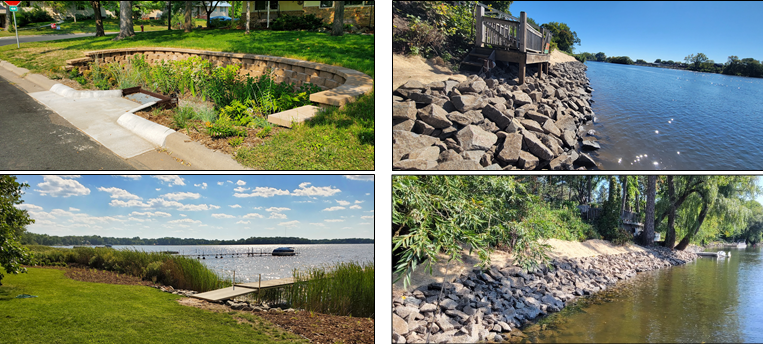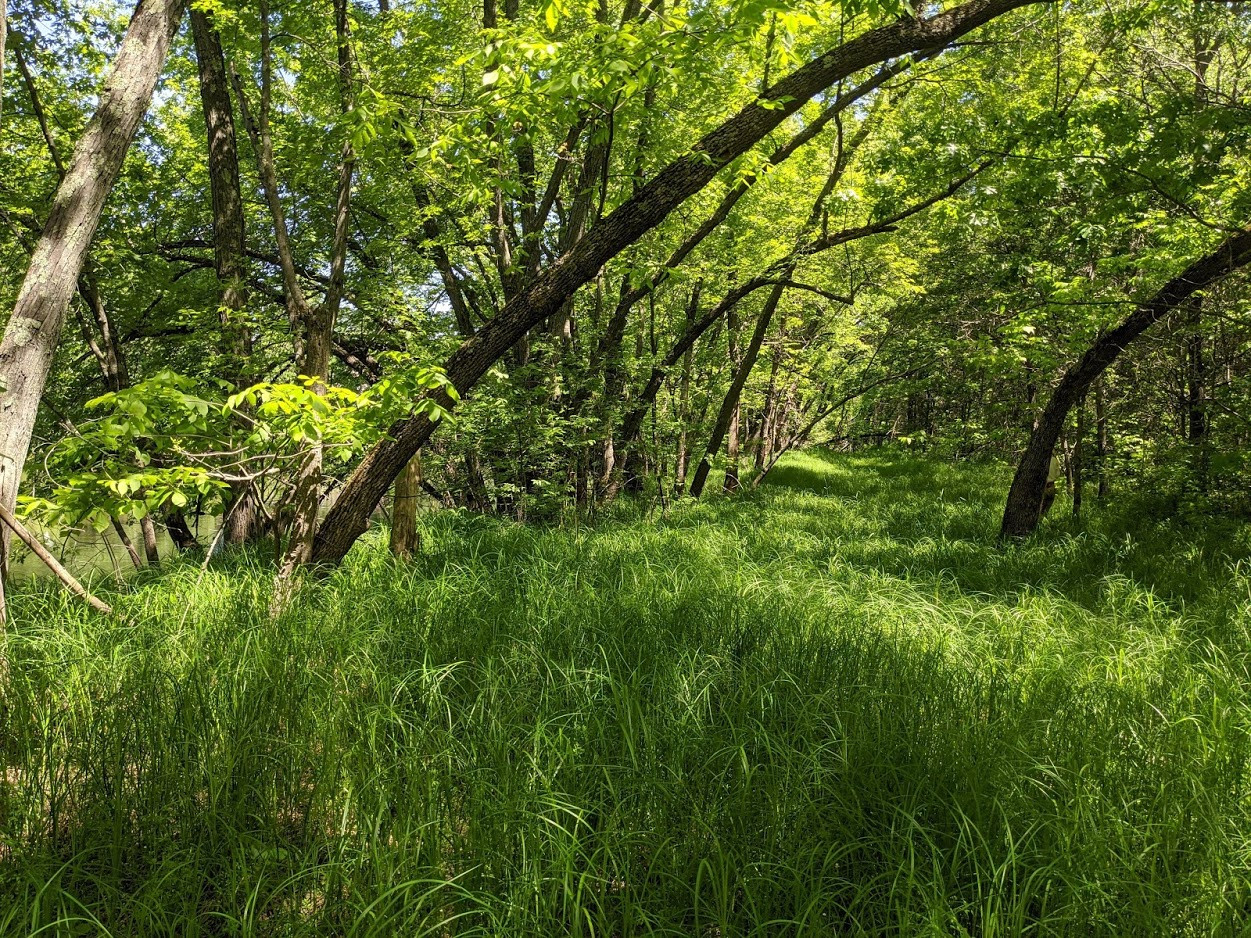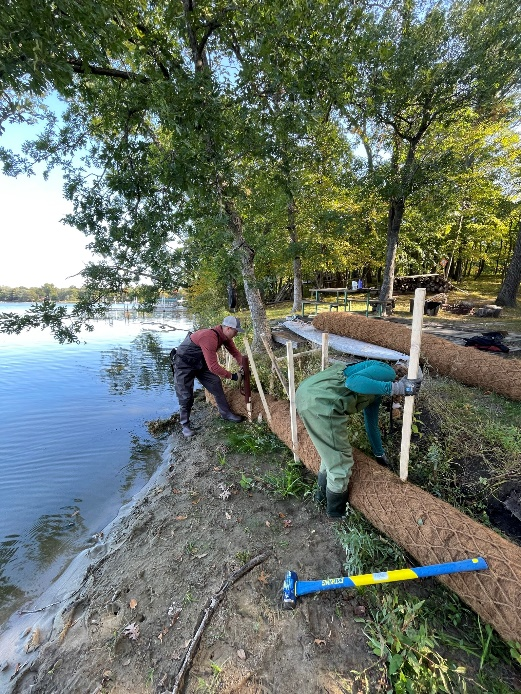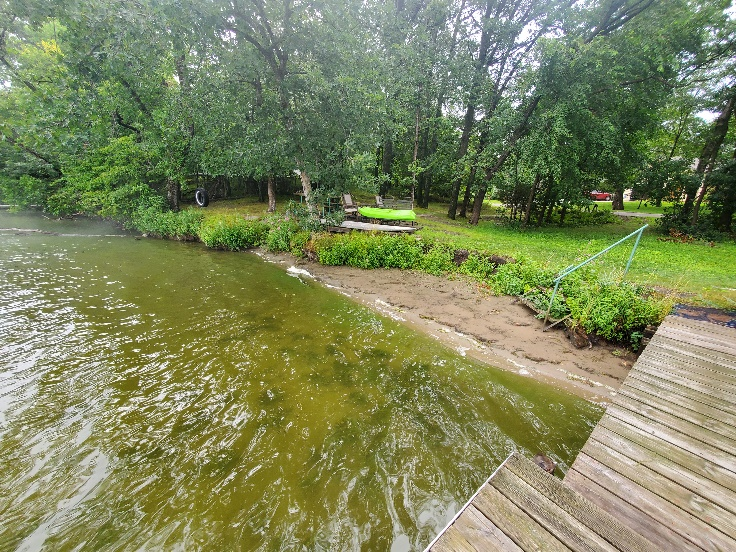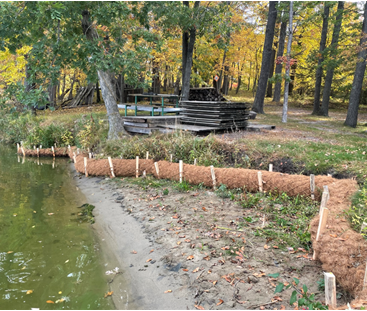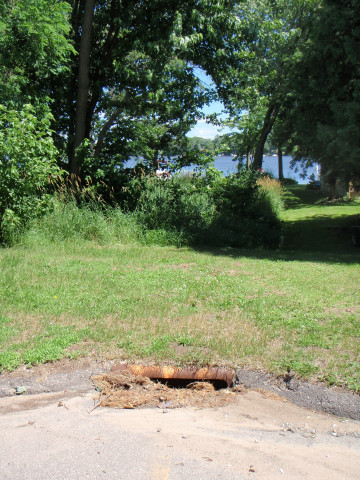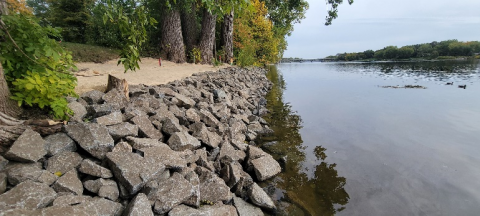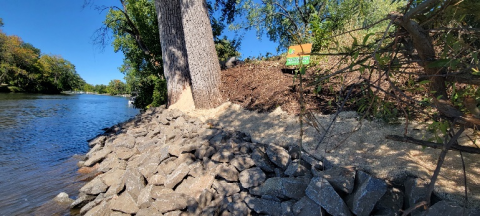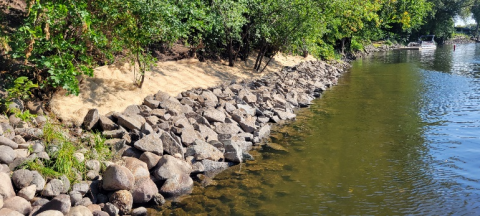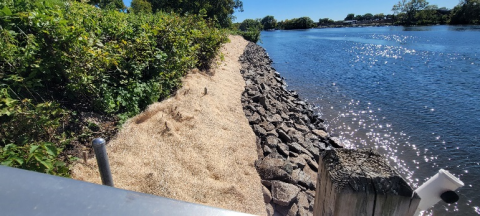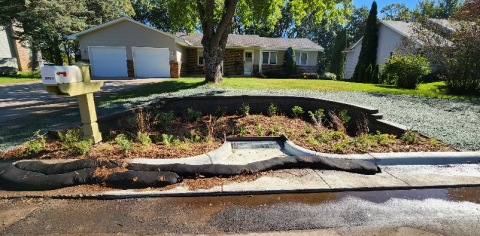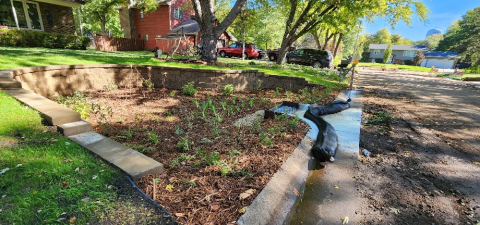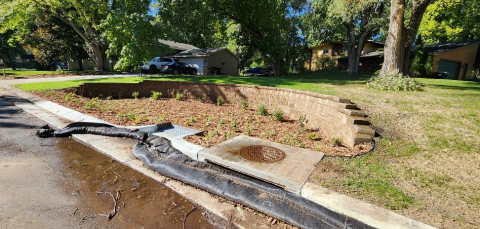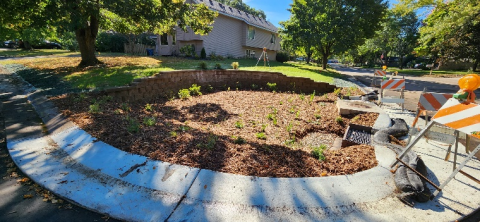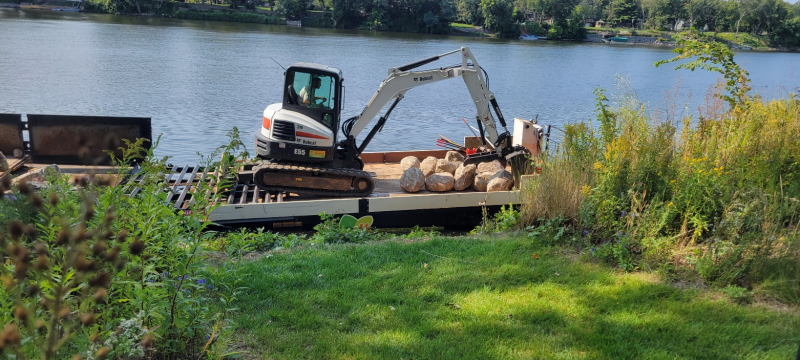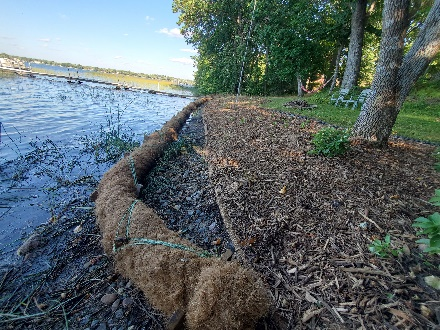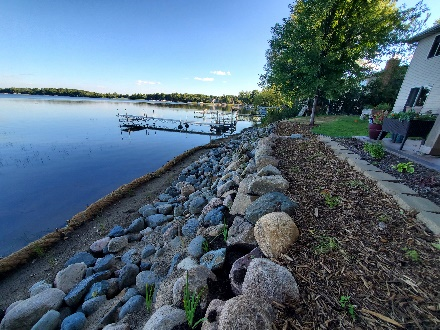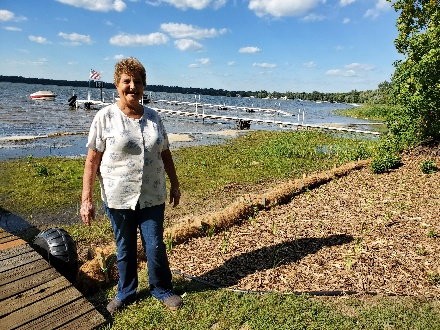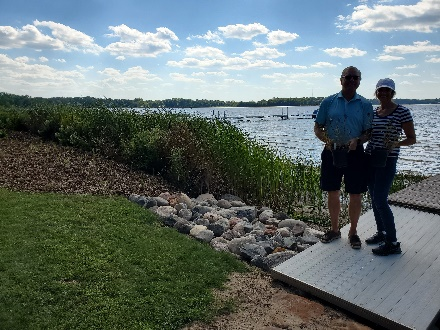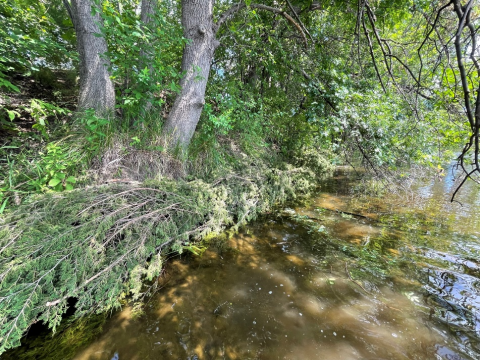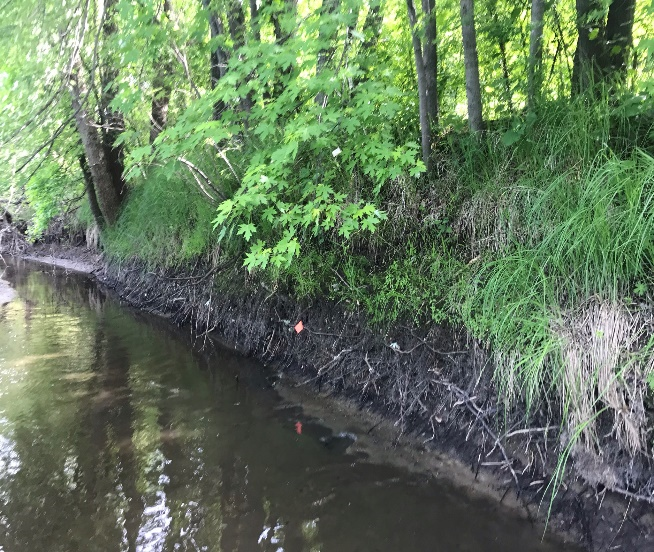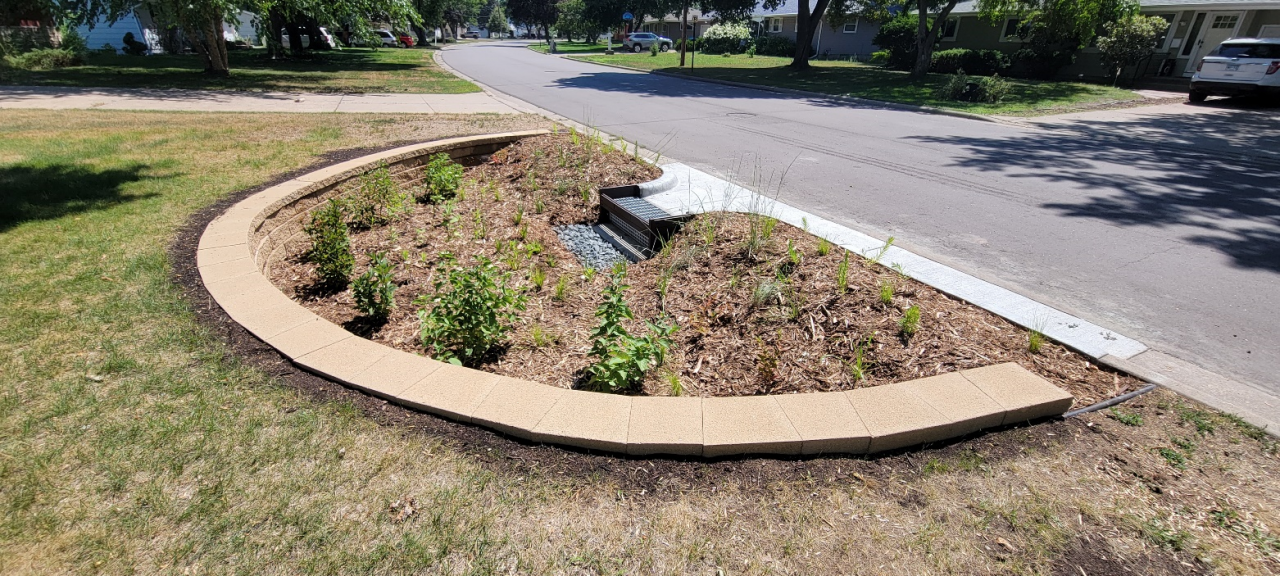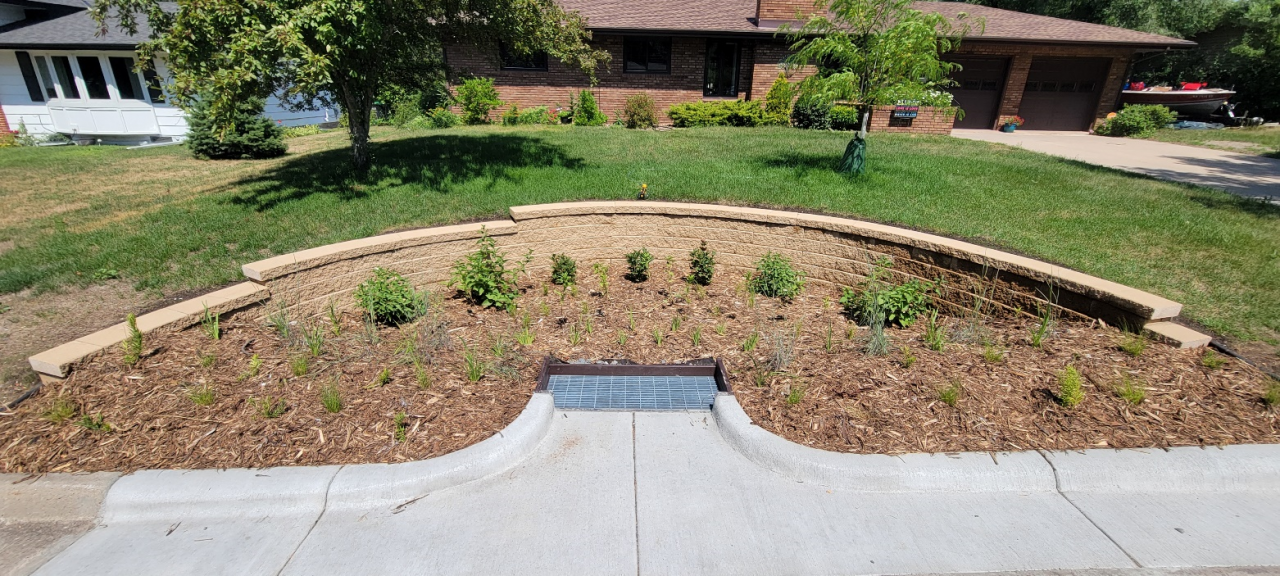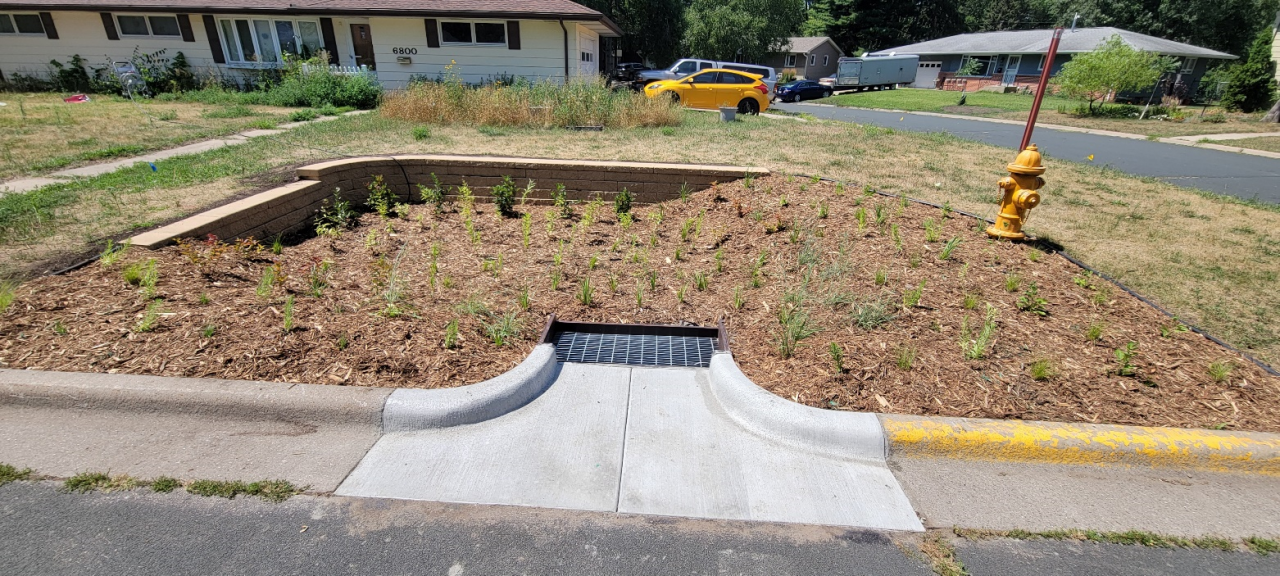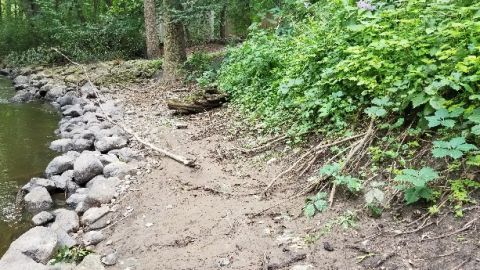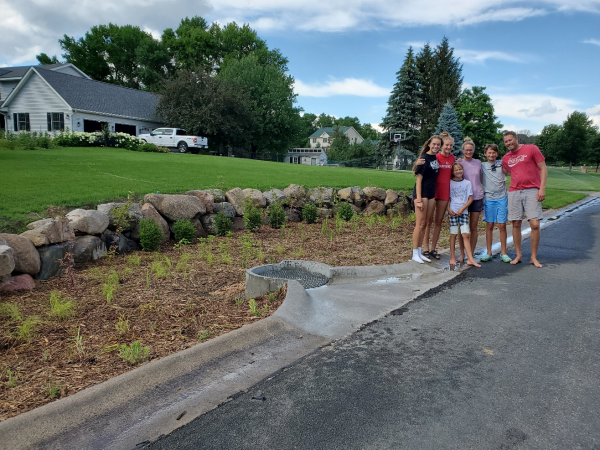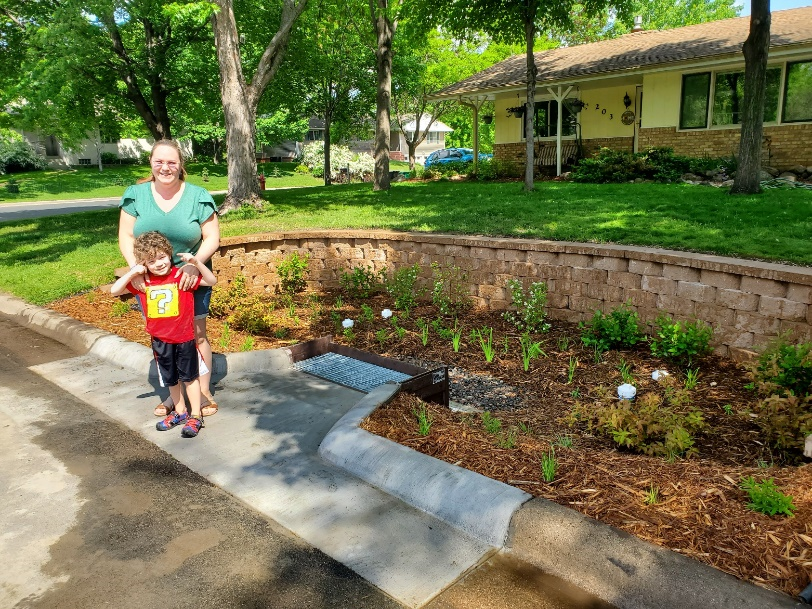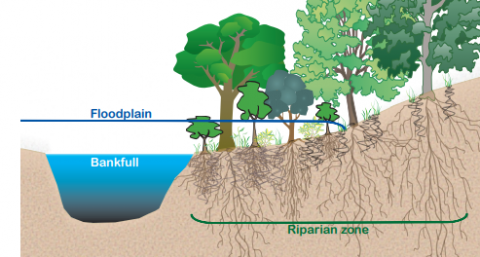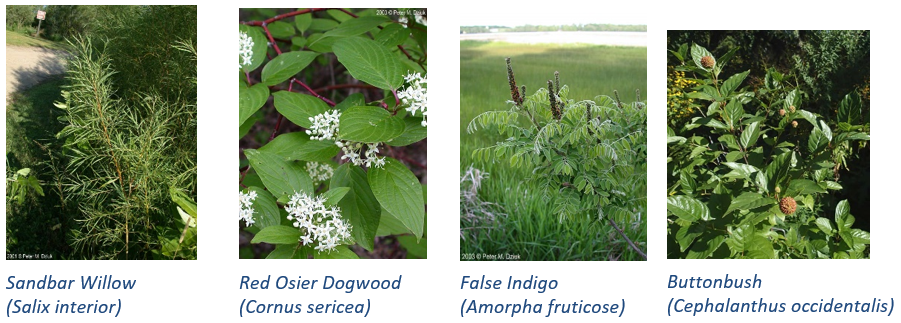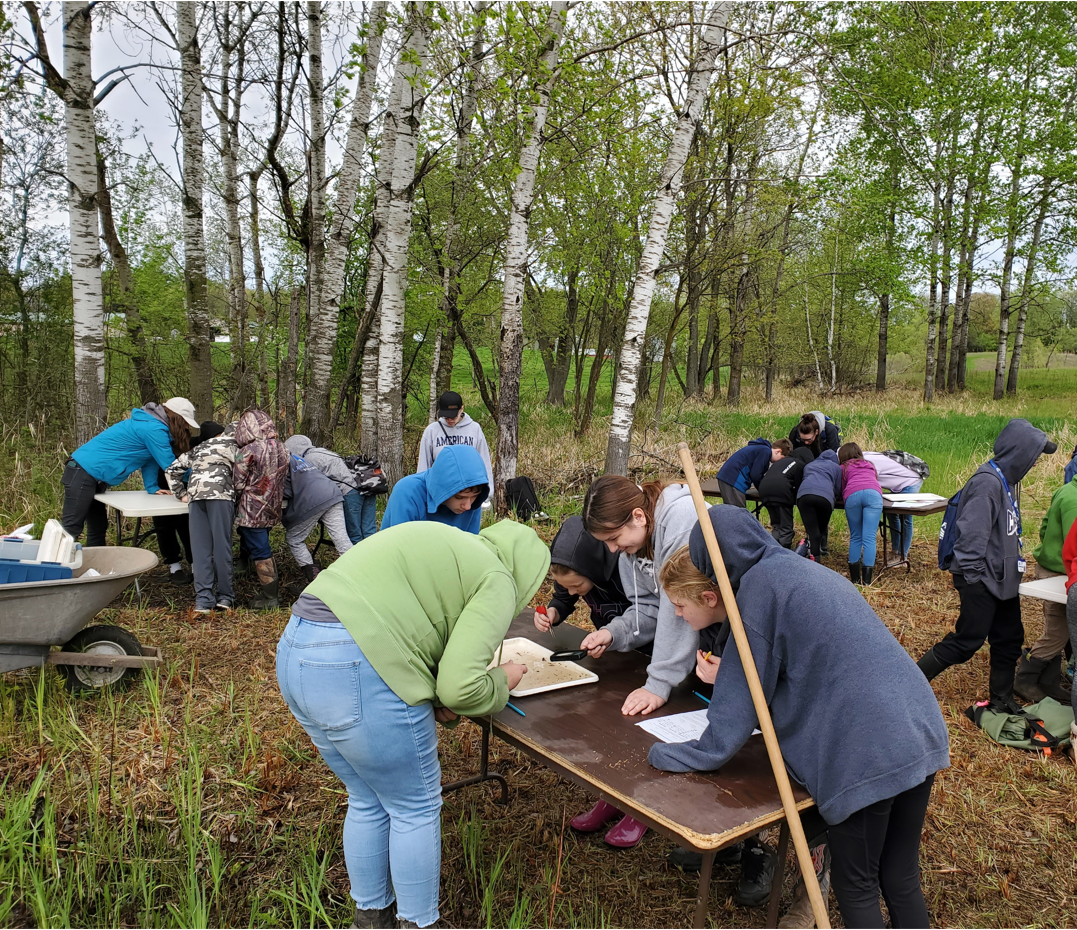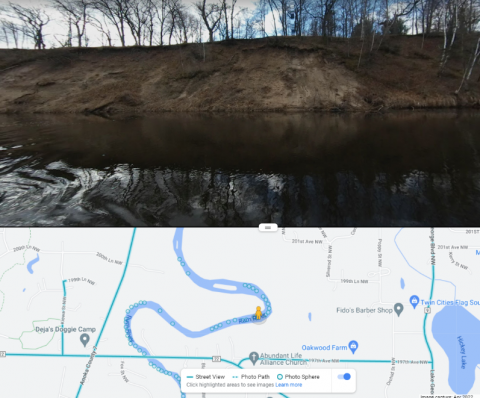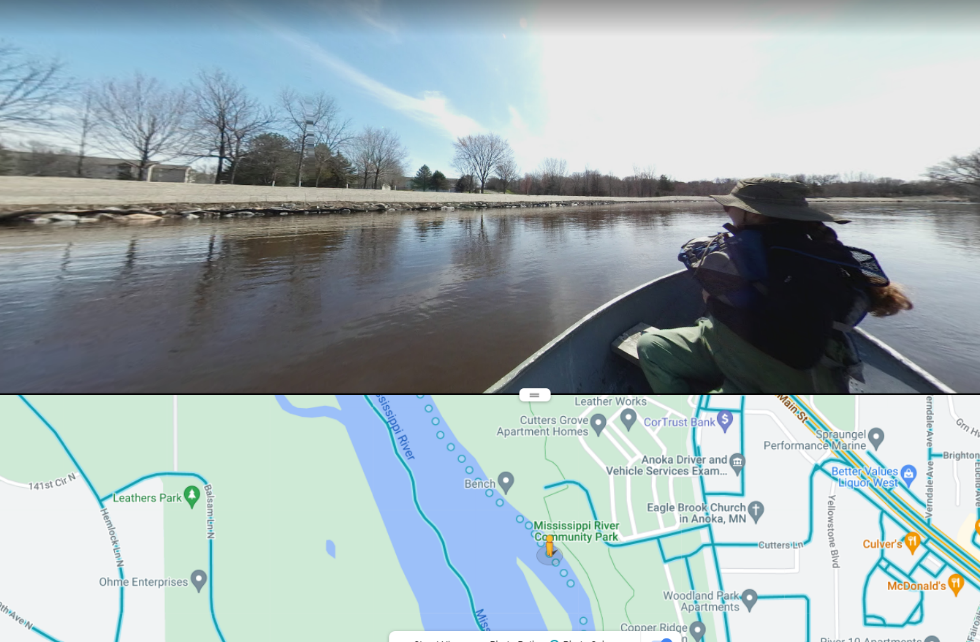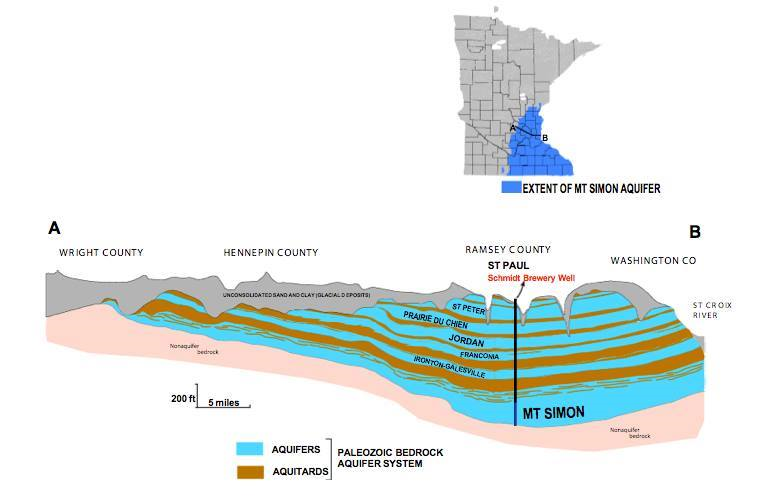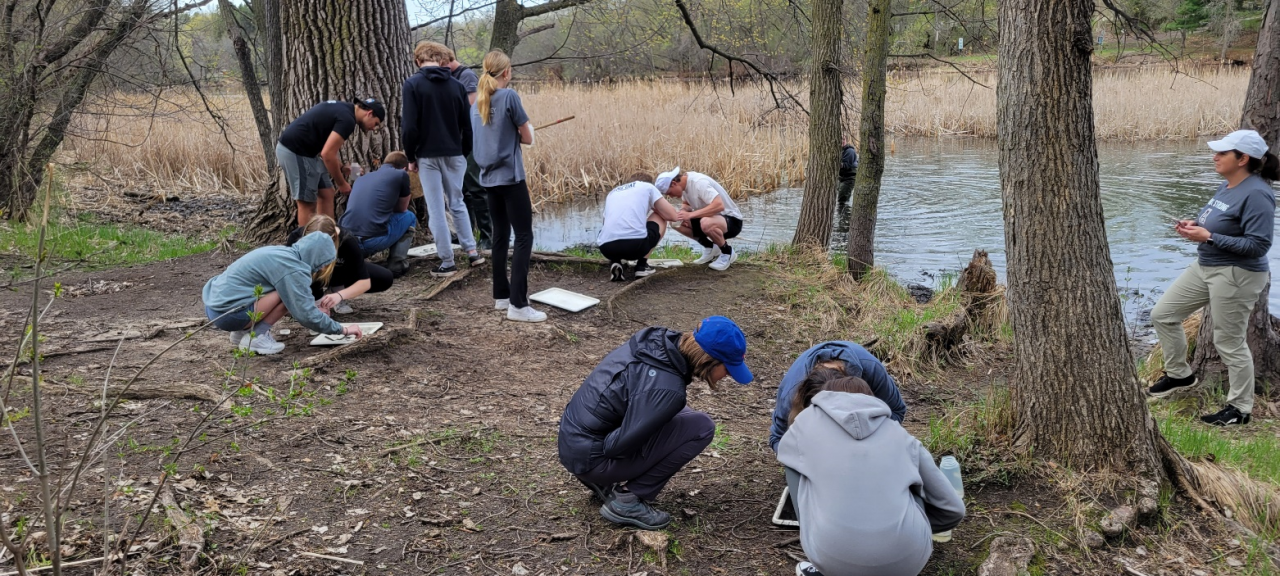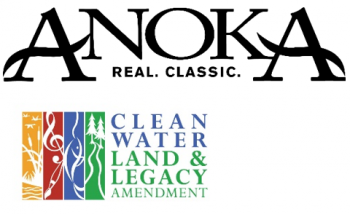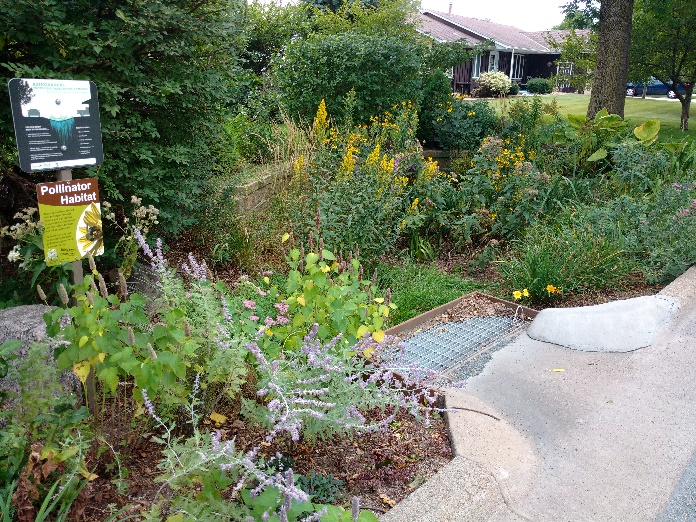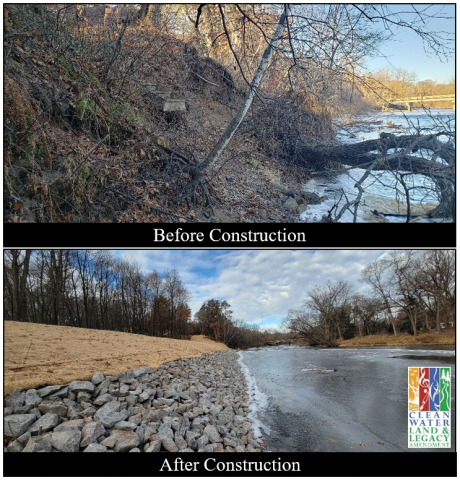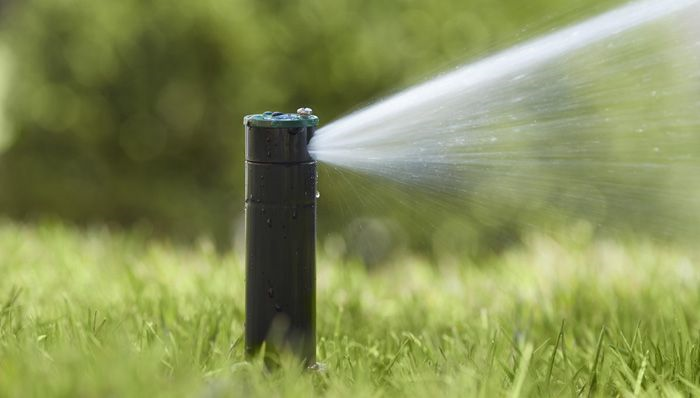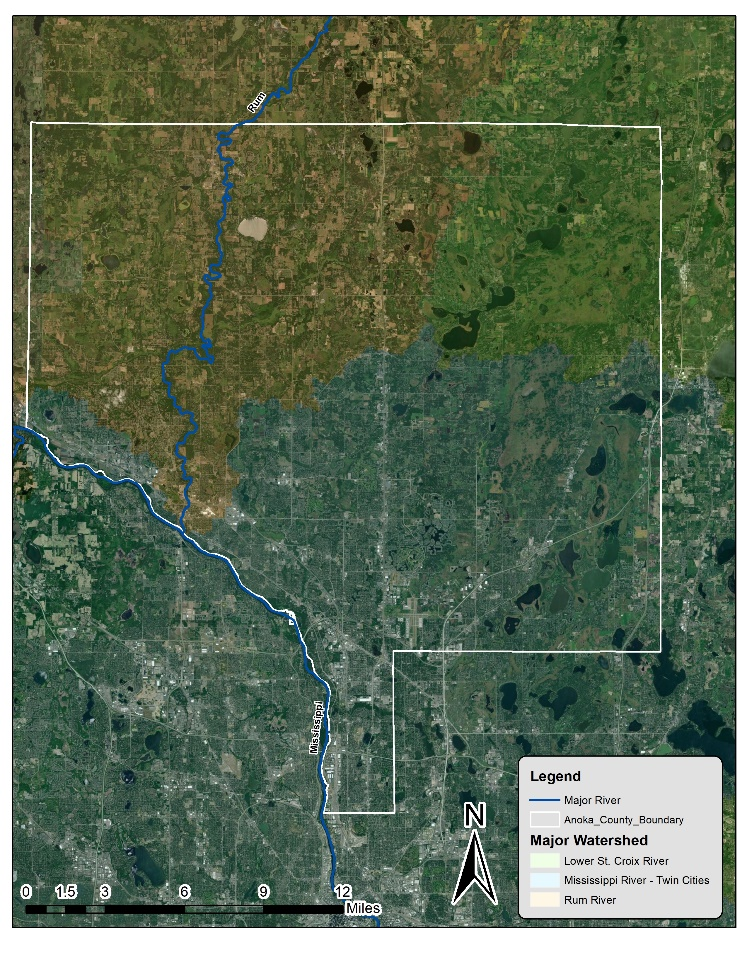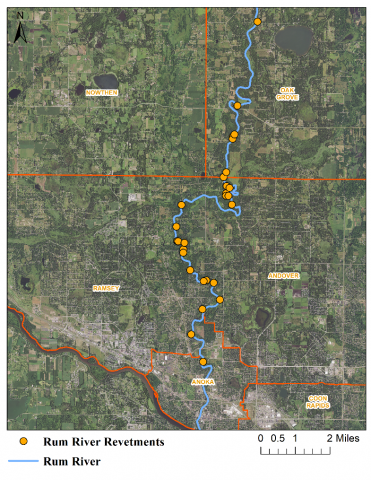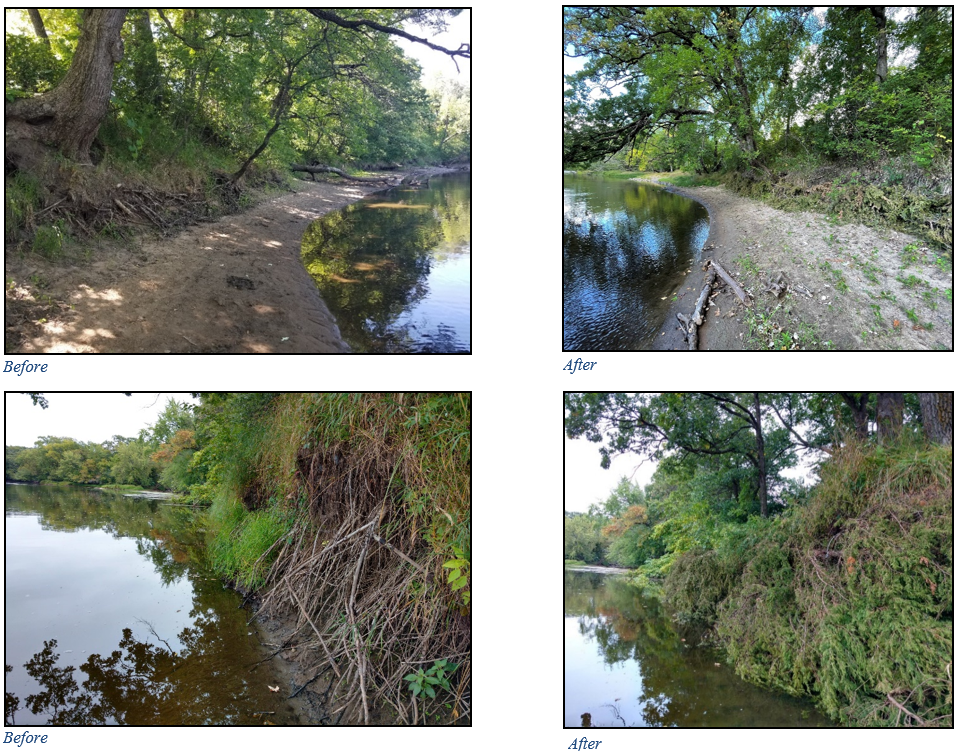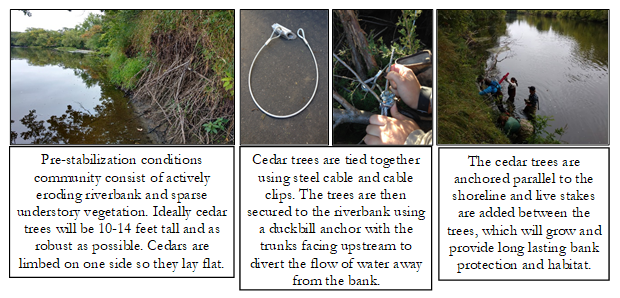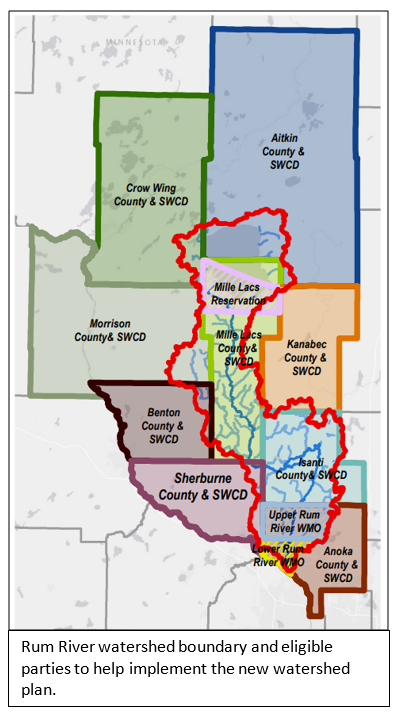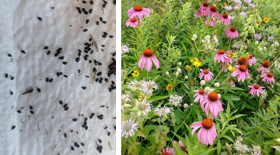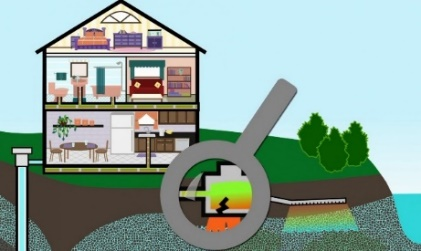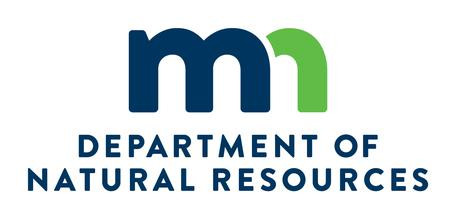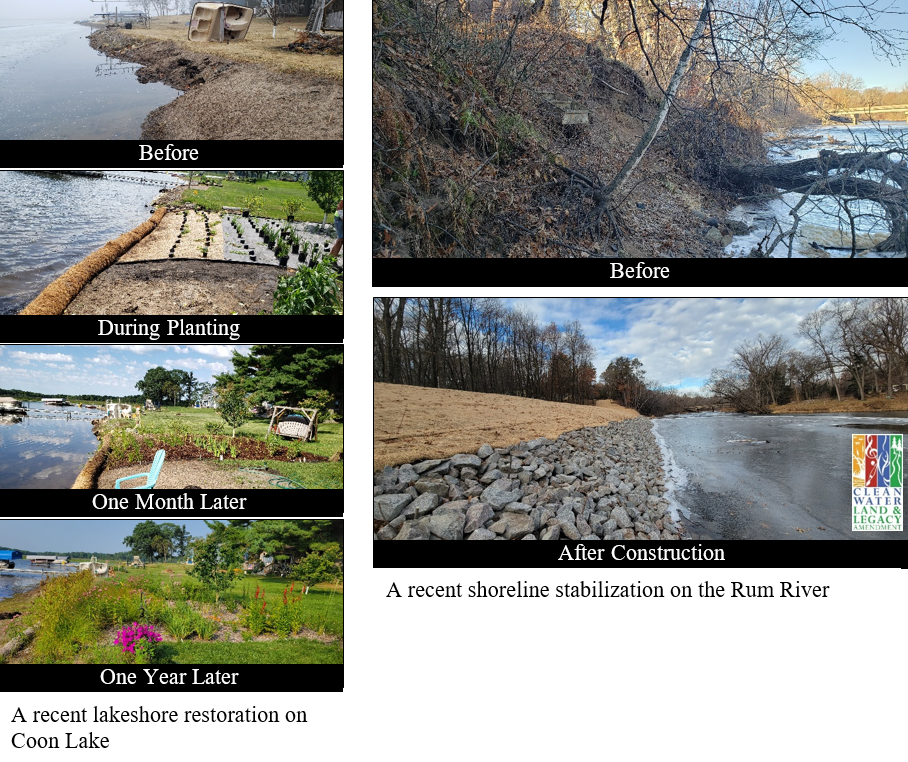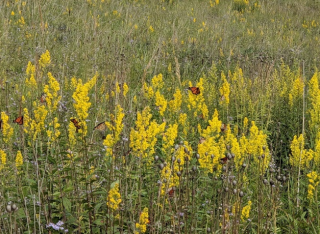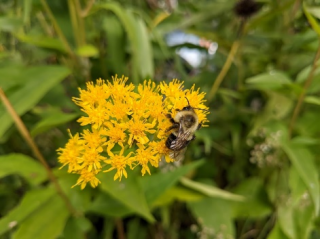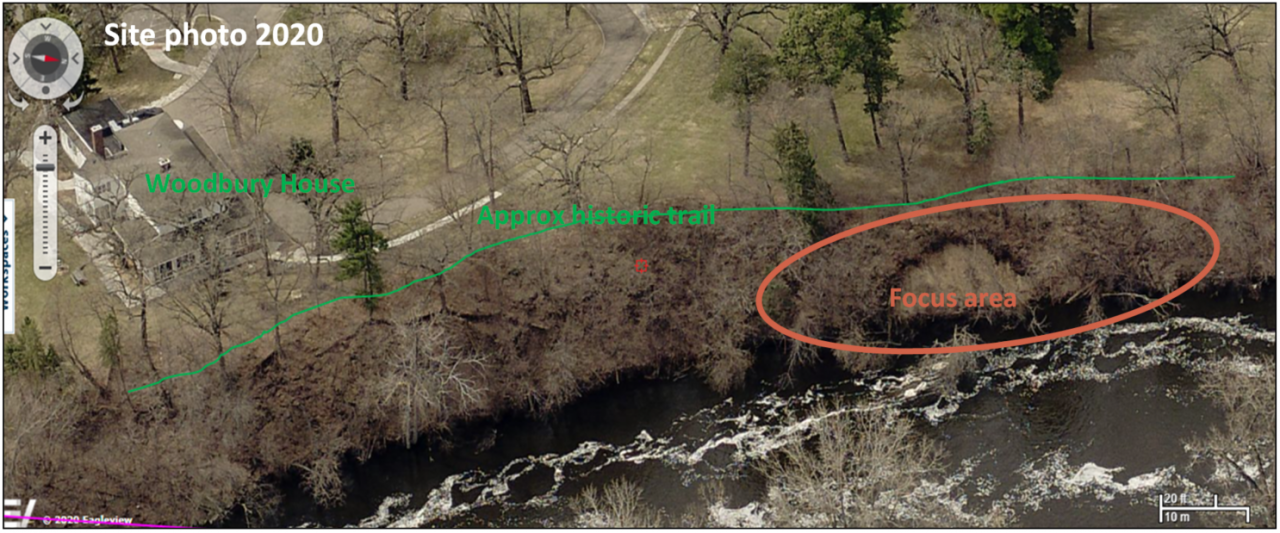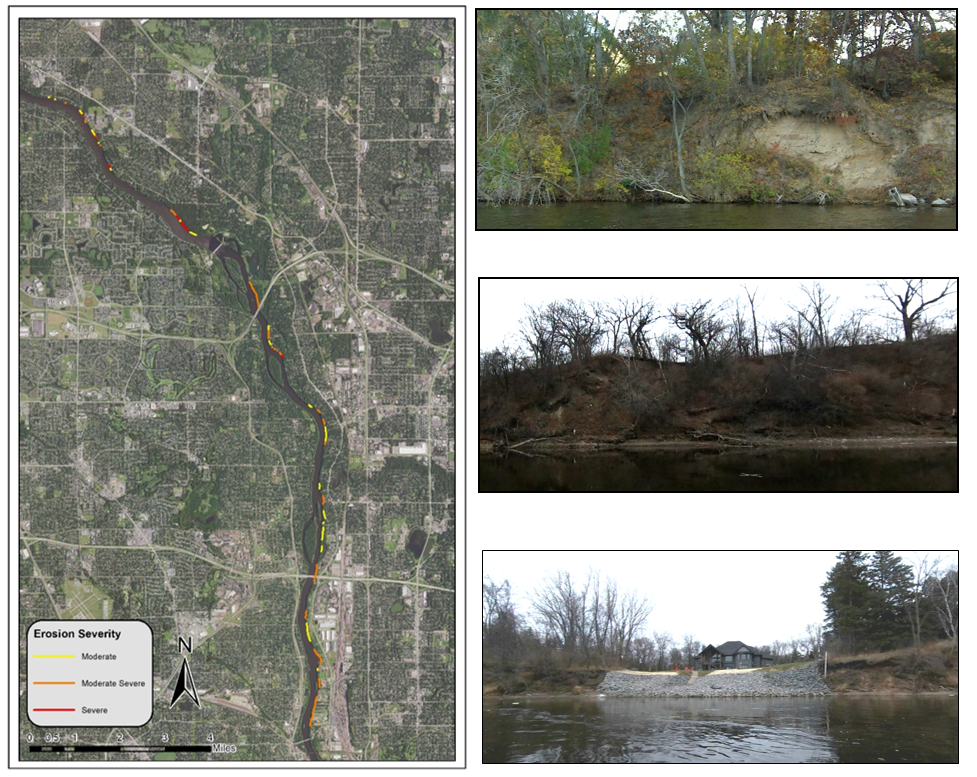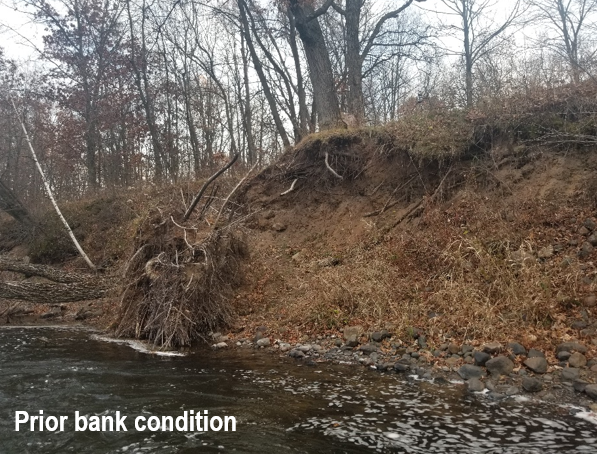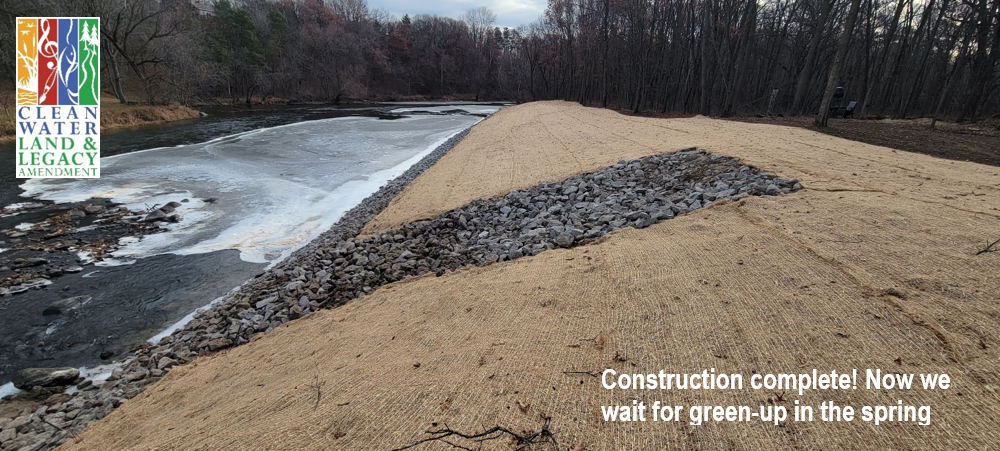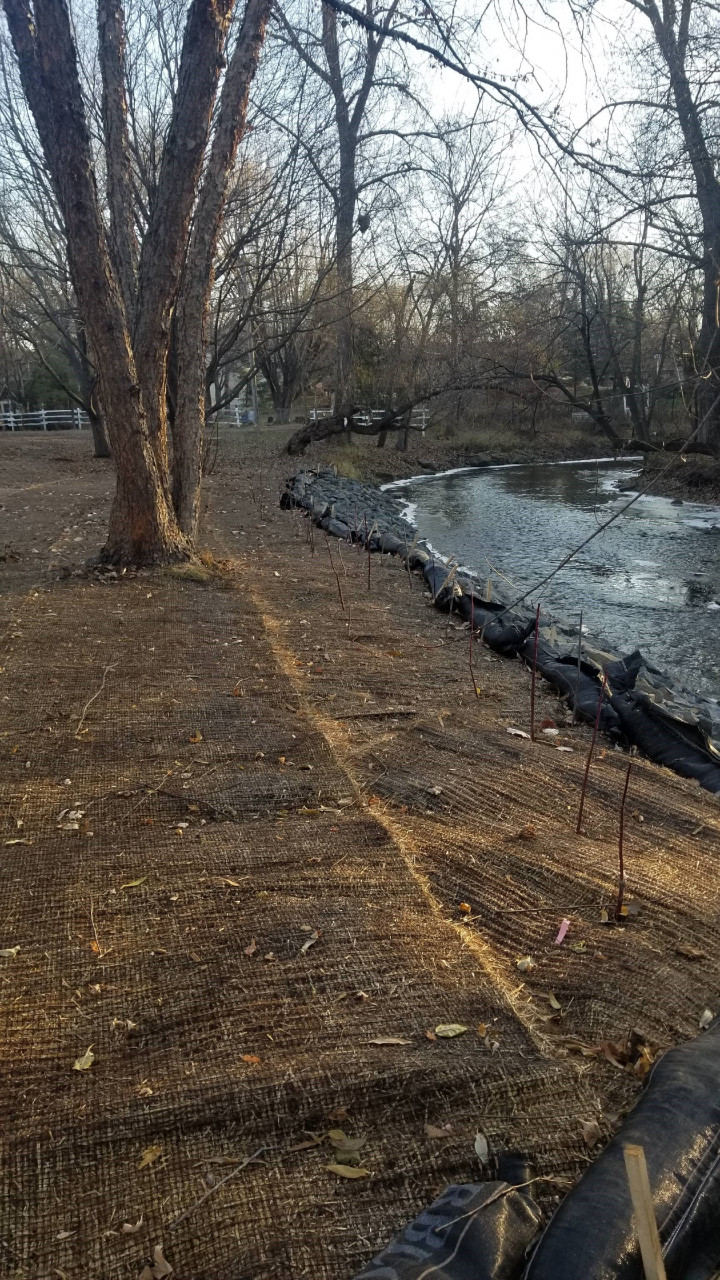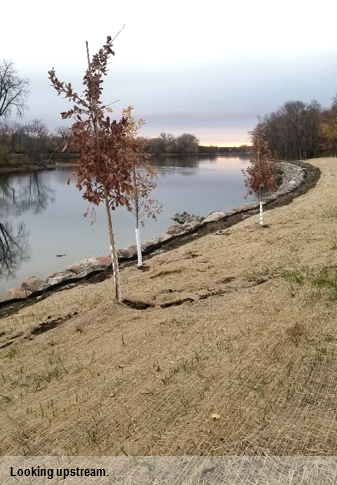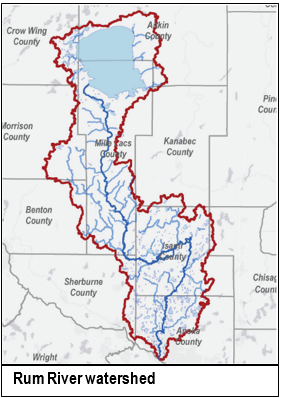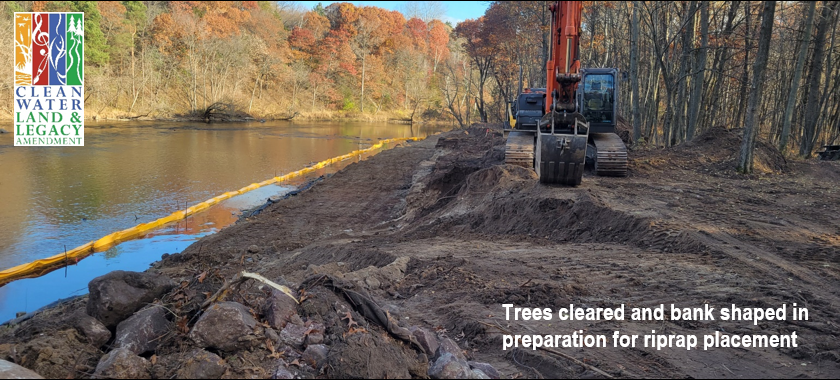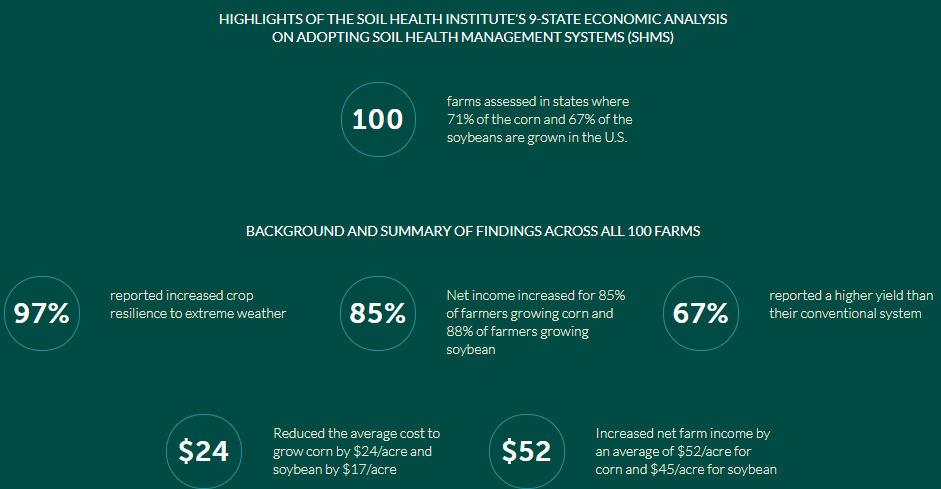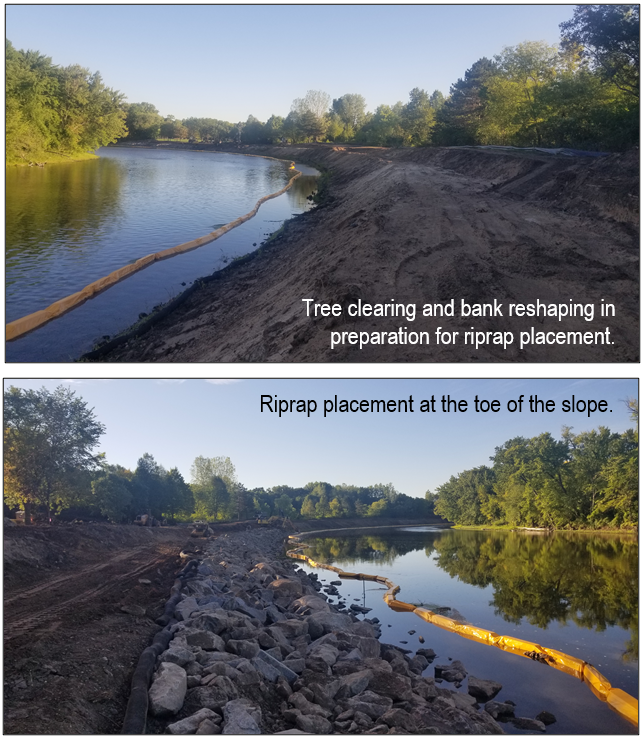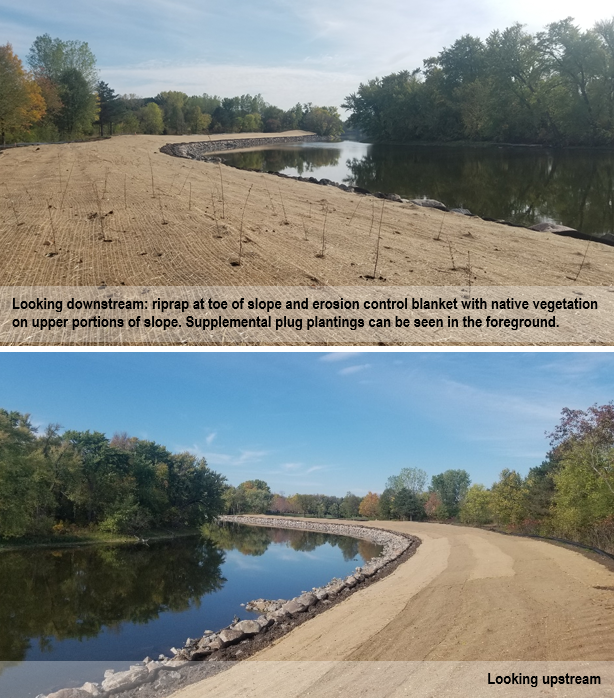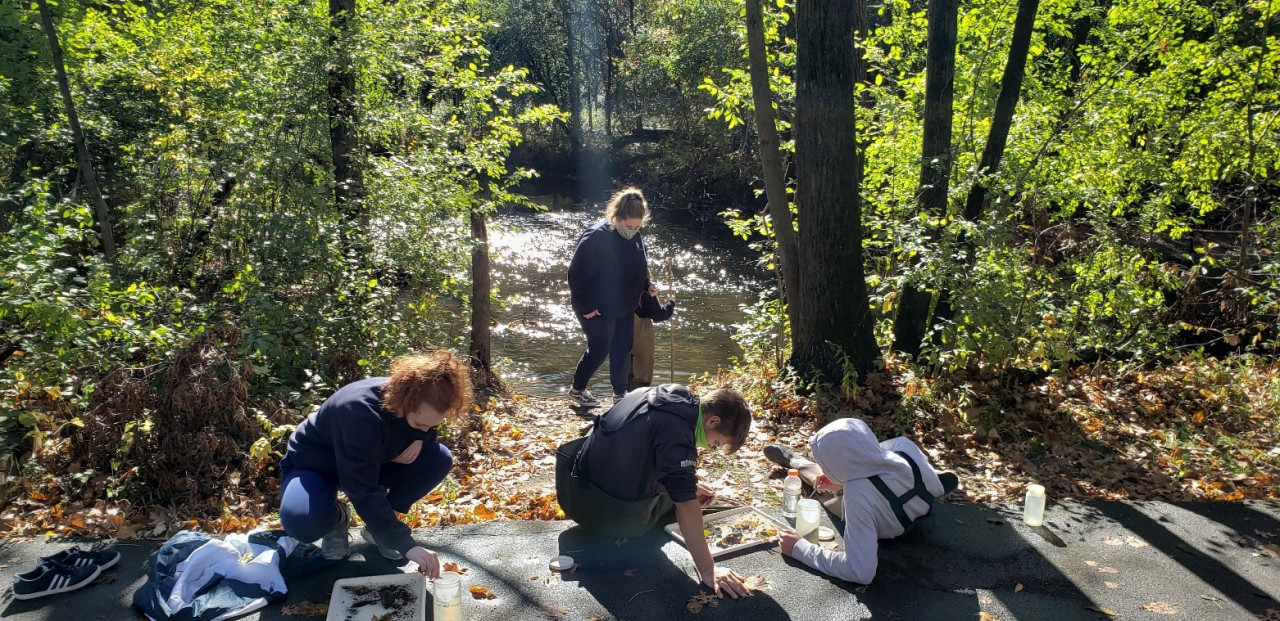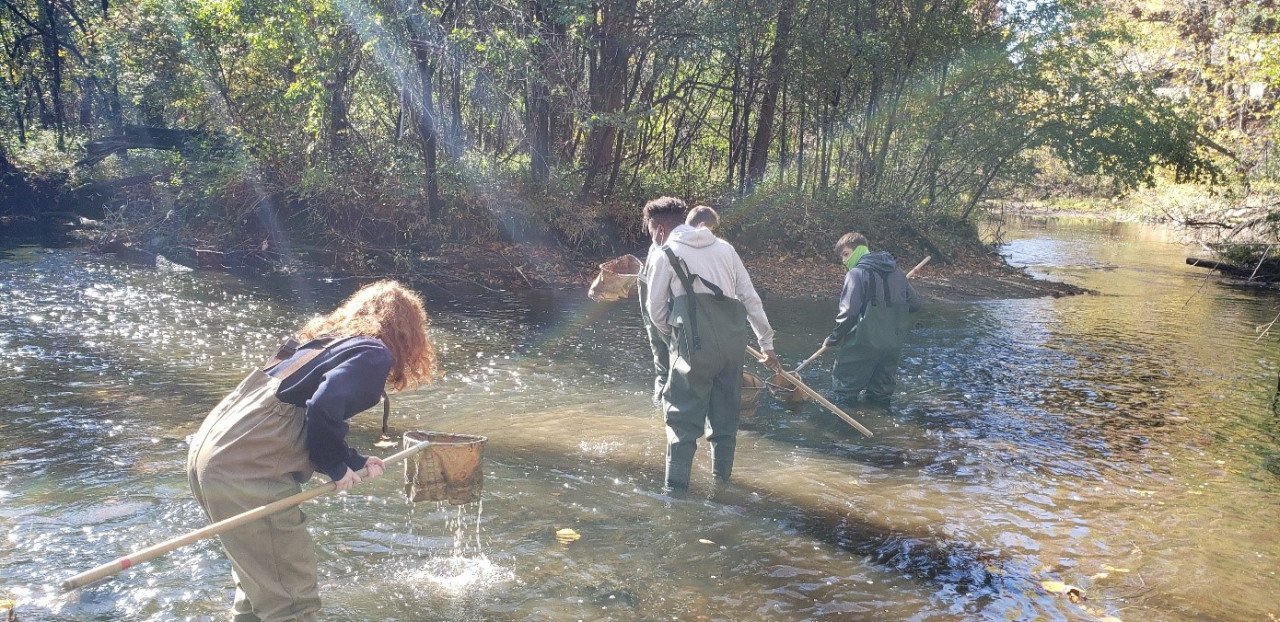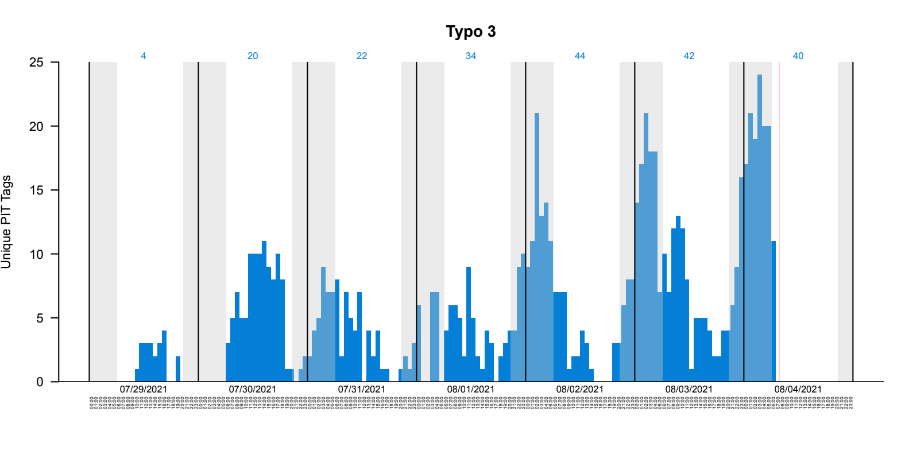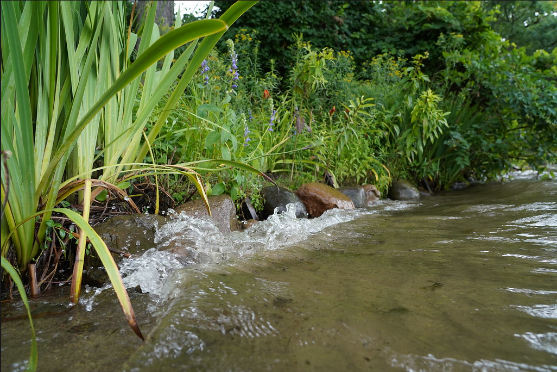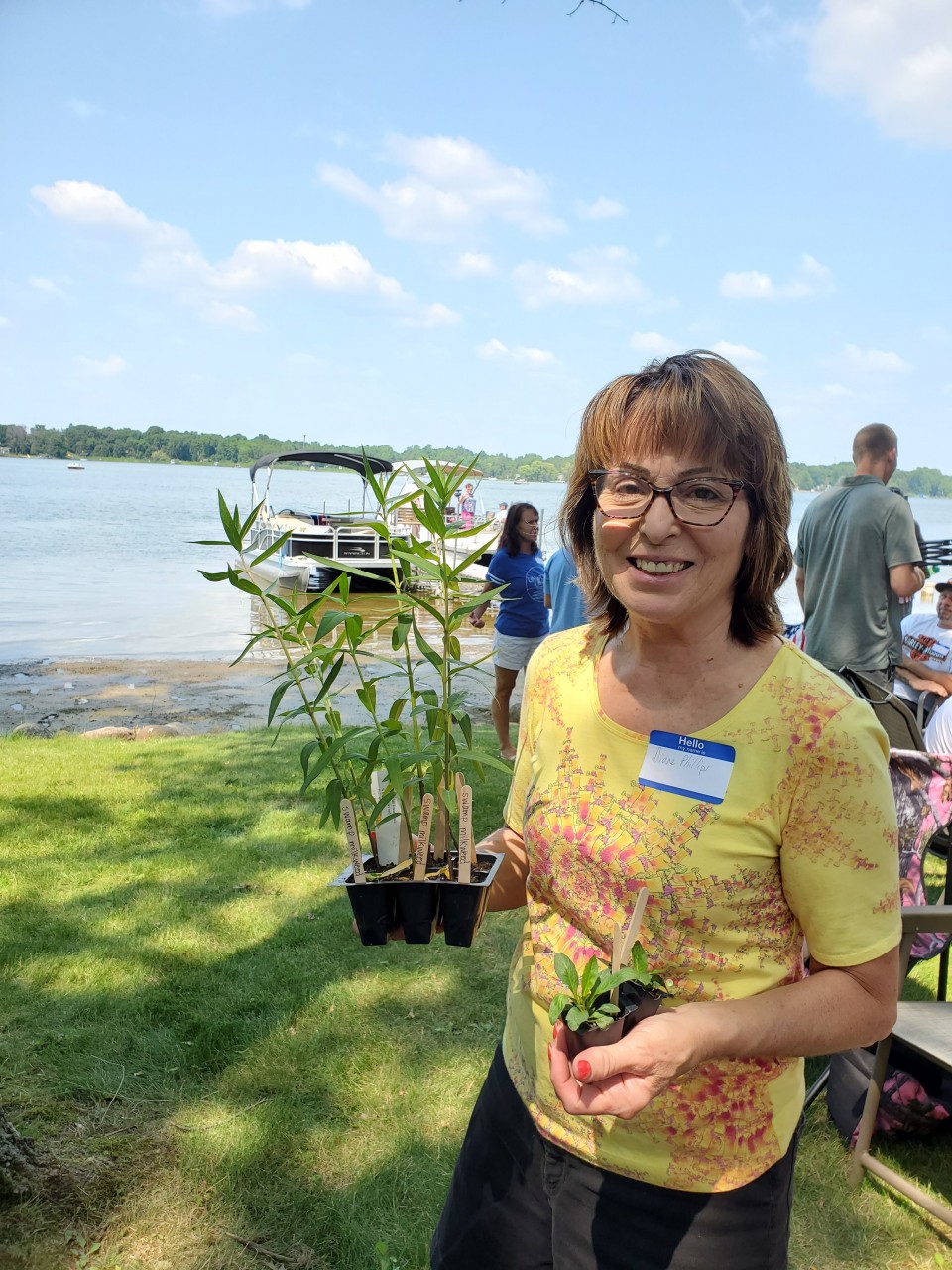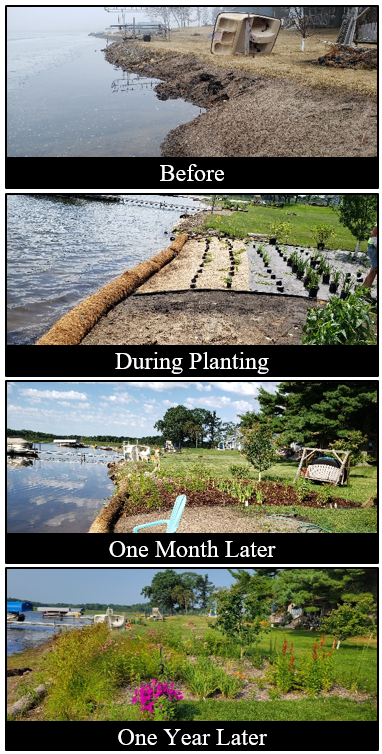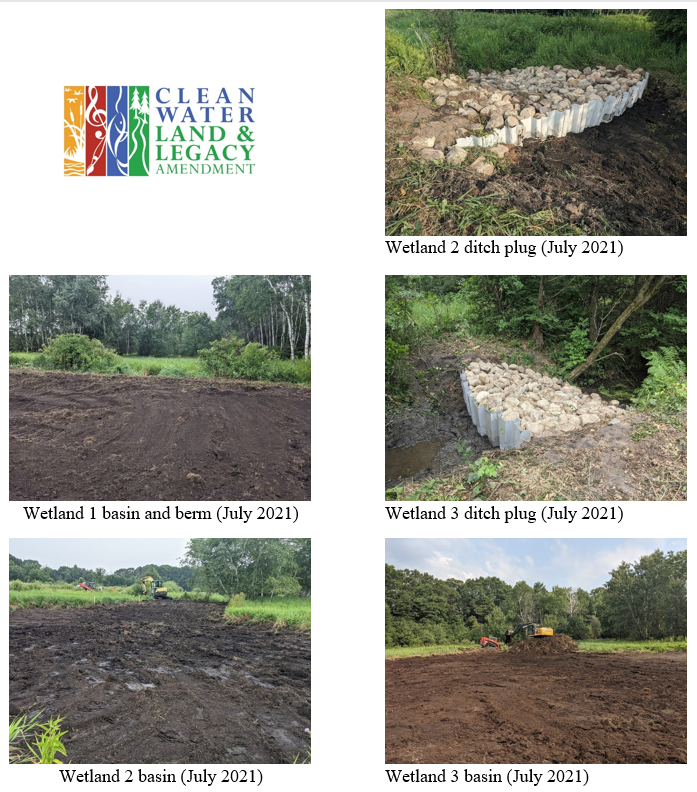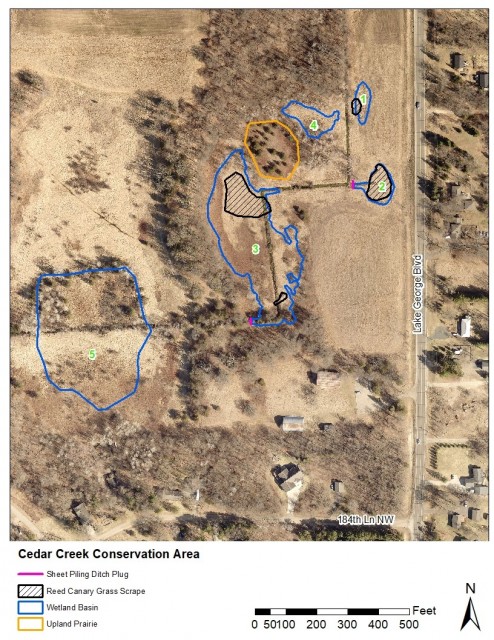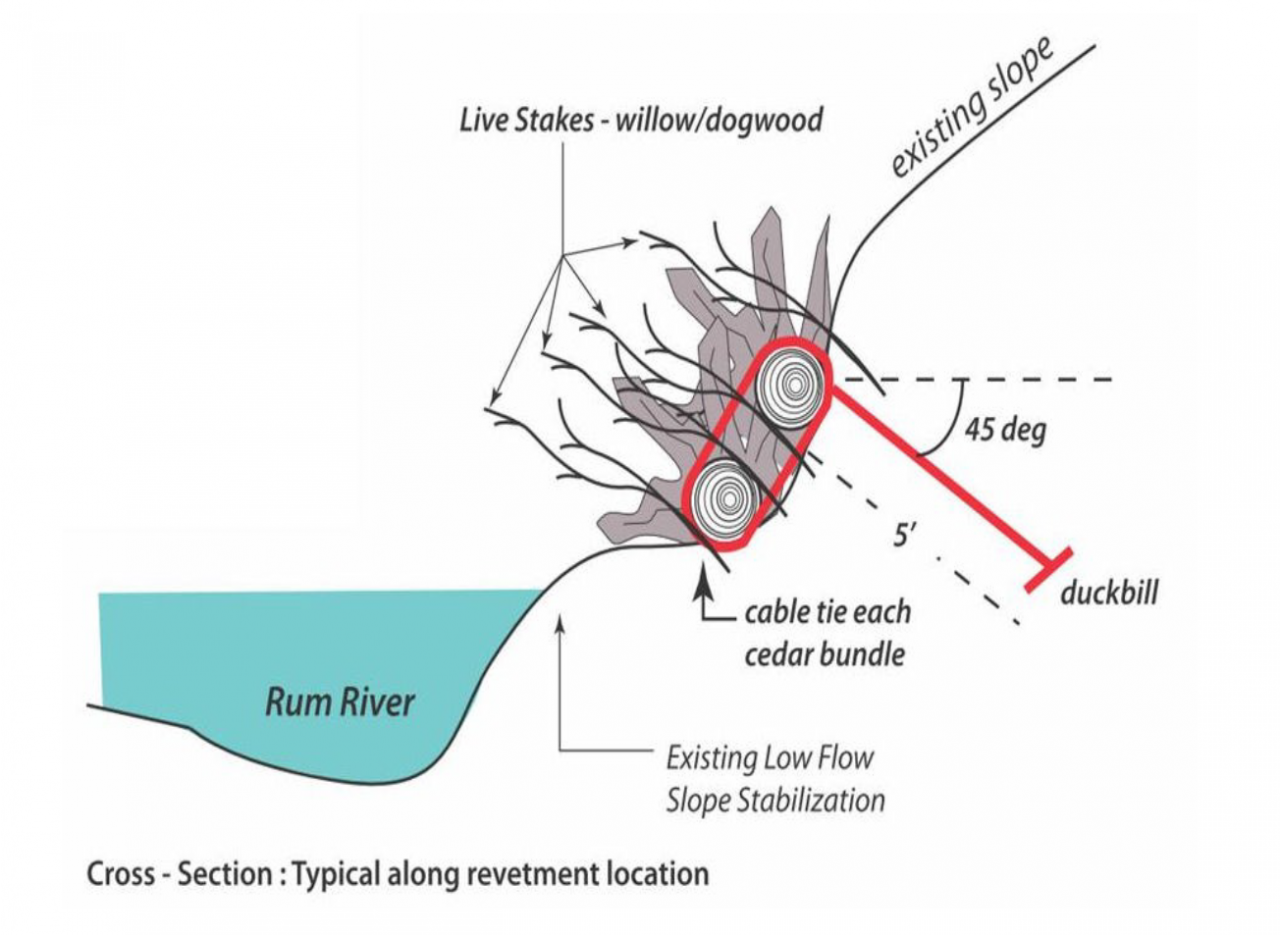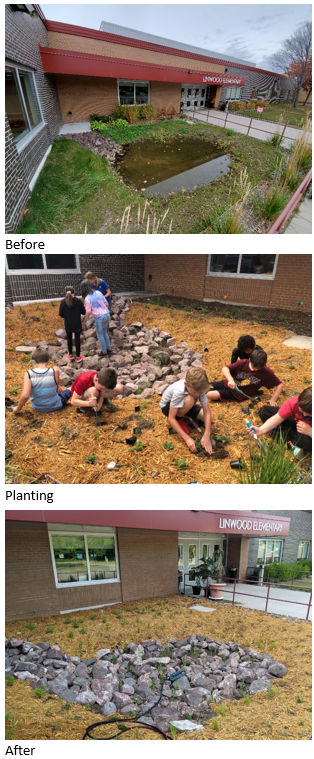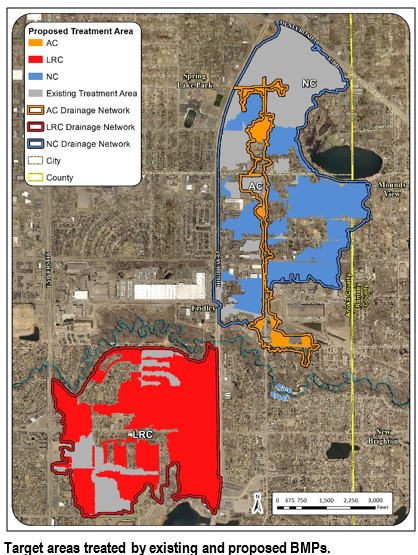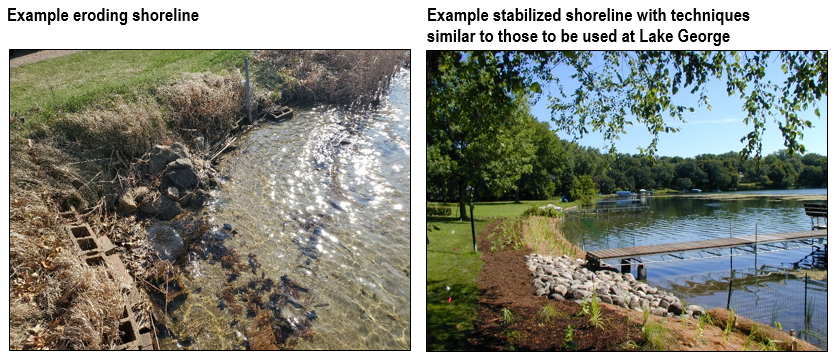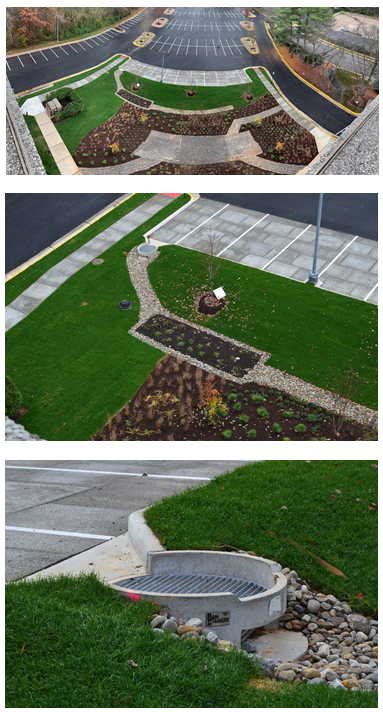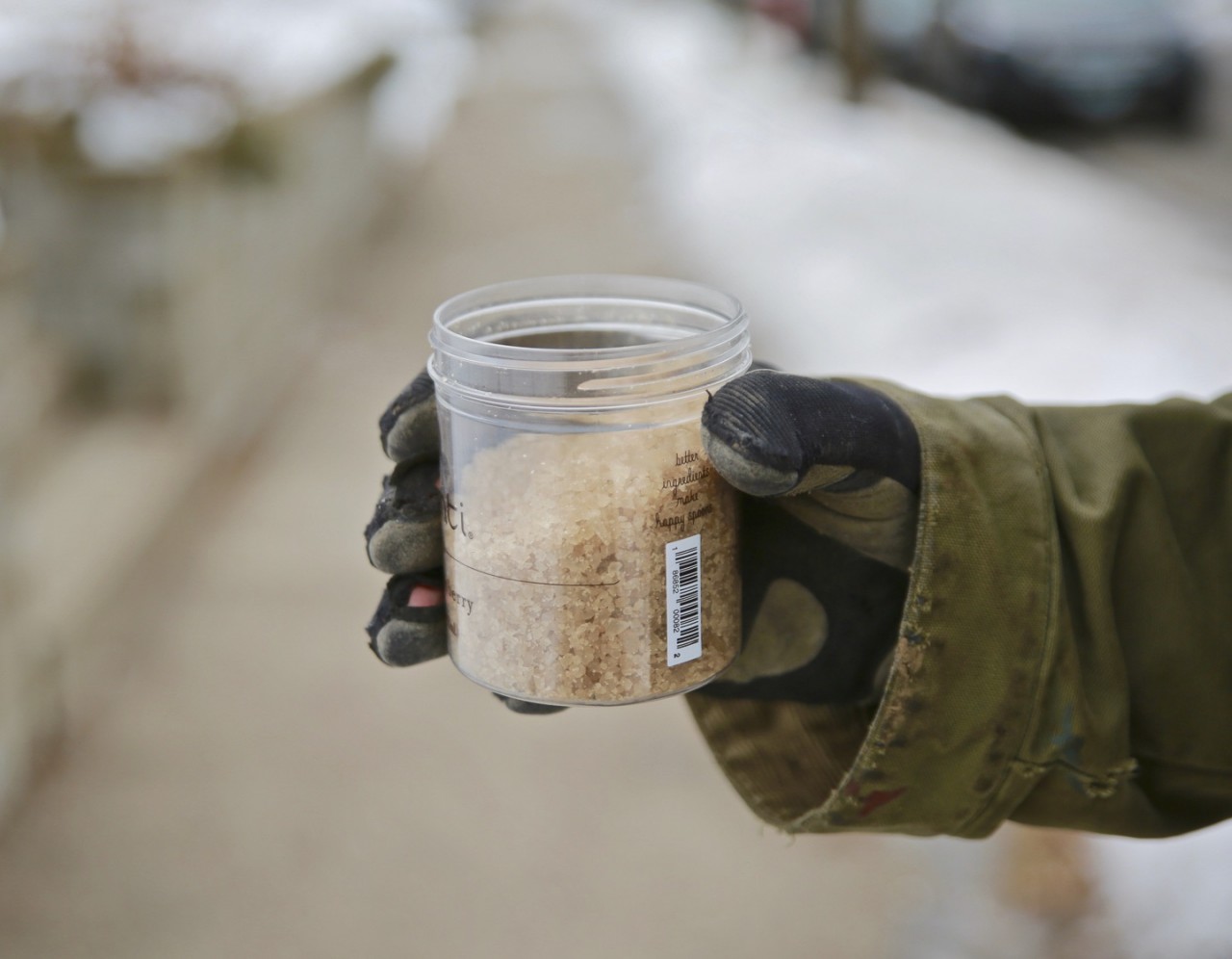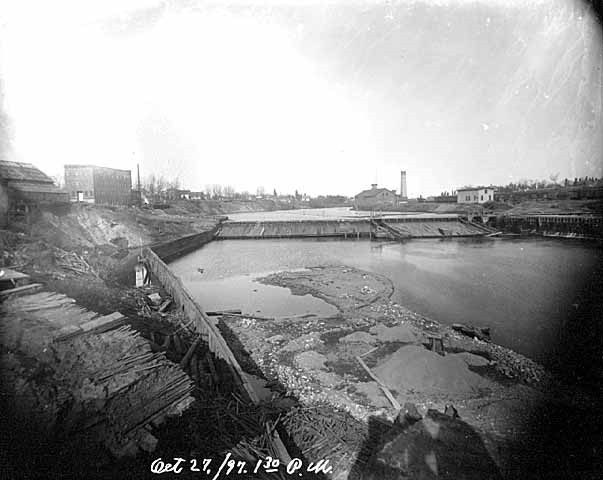Get involved in improving water quality by adopting a storm drain! Preventing trash, leaves, and debris from entering storm drains keeps local lakes and rivers cleaner. All it takes is 15 minutes, twice a month. Learn more and sign up by visiting mn.adopt-a-drain.org.
Unusable or unwanted chemicals are considered hazardous waste when their disposal poses an environmental or health threat. When disposed of in the garbage, down the drain or on the ground, some household chemicals can threaten our environment, harm garbage collectors or hurt you. Most household hazardous wastes are hazardous because they are flammable, corrosive or toxic.
Characteristic words indicate the type of hazard posed by a product - flammable, corrosive or toxic. Look for the signal words on the label. Signal words - caution, warning, danger, poison - indicate the product's degree of hazard. The facility accepts household hazardous waste from residents of Anoka, Carver, Dakota, Hennepin, Ramsey, and Washington counties. Businesses, schools and other organizations may NOT use the HHW facility. There is no charge to use the site. Bring identification, such as a driver's license, as proof of residency.
For more information on hazardous waste, contact the Anoka County Hazardous Waste Facility. Below is a brief list of just some of the accepted household items.
|
Six curb-cut rain gardens were installed approximately one-year ago and have been capturing runoff and its associated pollutants ever since. With each rainfall, runoff flowing in the street gutter is redirected into the rain gardens via a cut in the curb. Following a rain event, the water that enters the rain gardens is able to soak into the ground, which better mimics the natural hydrology before impervious surfaces (e.g. roofs, driveways, roads, etc.) and storm sewers directed runoff directly to Rice Creek. The rain gardens are able to store water and are filled with native species that were carefully selected for the site-specific conditions (e.g. light, soil type, and moisture).
Cumulatively, the six rain gardens are estimated to infiltrate 455,000 gallons of water, as well as remove 605 pounds of sediment and two pounds of phosphorus loading to Rice Creek annually. The native plants help to maximize infiltration and provide the co-benefit of pollinator habitat. One additional rain garden is located adjacent to a trail entrance into Locke County Park, providing an excellent public education opportunity.
These rain gardens were installed in partnership with the landowners, the City of Fridley, and the Rice Creek Watershed District. ACD provided design services and construction oversight.
The rain garden shown in the pictures below was planted last summer and as you can see, it didn't look like much at the time. Now, it looks beautiful and is full of flowers which pollinators love! This rain garden captures curbside runoff from 6.5 acres of neighborhood which previously went untreated to the Rum River. The native plant's roots create channels through the soil and reduce compaction, ensuring a maximum amount of water can infiltrate into the ground. The homeowners who worked with ACD to make this rain garden a reality, kept weeds at bay, and provided irrigation for the new plants during drought conditions!
Project funding was from the Clean Water, Land, and Legacy amendment, and the Lower Rum River Watershed Management Organization. To see other rain gardens installed throughout Anoka County, please see the virtual project tour on ACD's website.
For more information on rain gardens in Anoka County contact Mitch Haustein at
High water levels combined with strong winds impacted lakeshores throughout Minnesota this spring. In some cases, already-eroding and unprotected shorelines receded by multiple feet. In others, existing structures such as timber retaining walls were damaged – drastically compromising the land above. These occurrences highlight the importance of lakeshore practices that create resilient, stable, and healthy shorelines. ACD is working to maximize technical and financial resources to assist landowners with their shoreline restoration needs.
Martin Lake, located in northern Anoka County, was particularly impacted by spring flooding. Fortunately, grant funds were recently secured to provide assistance with restoration and stabilization efforts on this lake. Many landowners are interested in addressing erosion and improving wildlife habitat on their shorelines; in total, ACD staff met with residents at 20 different properties. Properties providing the greatest opportunities for water quality and ecological benefits will be selected for partial funding through available grants, and recommendations/ guidance will be provided for the remainder.
If you notice erosion on your shoreline or otherwise want to enhance its resiliency and ecological value, check out our "Our Lakeshore Connection" animated video to learn more: https://www.youtube.com/watch?v=dwjAoRwLrmM
Or contact Breanna Keith at
Approximately 1,500 feet of severely eroding riverbank in Mississippi River Community Park was stabilized in late 2021. The project included tree clearing, bank reshaping, riprap, erosion control blanket, seeding, and planting of a variety of native plant species.
Since installation, the site has been subjected to high water in 2022 and 2023. Both the riprap on the lower elevations of the bank and the vegetation on the upper elevations have successfully stabilized the site.
Moving forward, you may observe some vegetation maintenance to help the native species establish. Some examples include supplemental planting of native species and mowing to a height of approximately 6" to limit weed species from dispersing seed.
The project was funded by a Clean Water Fund grant, a Watershed Based Funding grant, and match from the City of Anoka.
For more information about the project contact Mitch Haustein at
Shorelines are some of the most valuable real estate. Both financially and ecologically. The Anoka Conservation District (ACD) has stabilized nearly 4.5 miles of eroding stream or riverbank and 1 mile of lakeshore over the years. When possible we use natural materials, a technique called bioengineering, to create stable, beautiful places that benefit lake or river health.
Near-record snowfalls in winter 2022-23 gave way to spring flooding that impacted many shorelines. Making matters worse, just after ice out there were several days of strong north winds. South shores of our bigger lakes took a beating. The shorelines most impacted were those that are mowed to the edge and without other protections such as riprap. Some of ACD's fall 2022 shoreline bioengineering projects were impacted because the vegetation had not had time to mature.
In recent weeks ACD staff have repaired damaged projects, including at Lake George (see photos).One of the beauties of bioengineering is that a few people with basic tools can make quick work of repair. After growing and establishing this summer, these lakeshores will be ready for whatever next spring brings.
Shoreline homeowners interested in creating stable, ecologically-friendly shorelines can contact Jamie Schurbon, Watershed Projects Manager at 763.434.2030 x210 or
Congrats to the Martin Lakers Association on their efforts to improve water quality. At their recent annual meeting 81% of member households contributed $7,000 to the group's Water Quality Fund.23 households gave $100 or more. Of this amount, $3,000 was a match provided by the Wally & Nancy Olson family in memory of Nancy. The Martin Lakers Association has used the funds to partner with the Anoka Conservation District on numerous projects including stormwater pond enhancements, rain gardens, carp management, and more that have approached $1M.Lake associations, citizen groups, and landowners are critical partners of ACD in most of what we do.
For more information contact Jamie Schurbon at
Unlike city water, water from private wells is not tested unless the homeowner tests it, which all are encouraged to do. To make it easy, Anoka County Public Health and Environmental Services Department offers testing. The homeowner collects the sample and delivers it to the government center in Anoka. Test kits can be picked up at most city halls. Costs are about $17 for each contaminant, with nitrates and coliform bacteria as the usual minimums to test.
For more information see www.anokacounty.us/water.
Recent extreme flooding has highlighted the dynamic and powerful nature of flowing water. If you live on a river or even a smaller stream, you've likely witnessed these characteristics and their impacts firsthand. With flood waters receding, now is a great time to assess the condition of your riverbank and consider stewardship and stabilization approaches that will help protect your property and the water you live on. Fortunately, we've created a brand new resource to help guide you through this process – the "Our Riverbank Connection" animated video!
Living by a creek, stream, or river provides many benefits and a unique opportunity to support water quality and wildlife. It also comes with some challenges such as erosion, which can eat away at your land over time. In this video, you will learn how to create a river-friendly lawn and riverbank that also protects your property by reducing or repairing losses from erosion. Video topics include:
- Recommended lawn care practices
- Signs of erosion and factors that may make your bank more susceptible to it
- Creating a well-vegetated bank
- Bank stabilization approaches to address active erosion
- Project planning and construction – what to expect
Watch "Our Riverbank Connection" here: https://www.youtube.com/watch?v=Et9wLuIrRuA
Want to learn more about streams and rivers and how you can help them, even if you don't live on their banks? Watch Part 1 of the "Our River" Installment – "Our River Connection" – here: https://www.youtube.com/watch?v=rdQEcmLyQJI
A design has been finalized to stabilize 650-feet of eroding Rum Riverbank at Dellwood River Park in St. Francis. Erosion of the riverbank is causing numerous trees to fall into the river and is threatening a popular walking trail. The project design, currently in the permitting phase, features three primary protection measures;
- 1) Two severely eroding zones of riverbank encroaching on the trail will be built back out, armored with rock riprap, and potentially have large tree root-wads added to provide in-stream habitat elements. The riprapped length of bank will total approximately 180-feet in length.
- 2) Three bendway weirs constructed of rock will protrude at a 45° into the river. These low-lying, linear features will be submerged under the water, and will push flow and erosive scour back toward the middle of the channel, rather than along the outer bank. The bendway weirs will also add variable flow areas and habitat value in the channel. These will be great features to cast around for any fisher folks from shore!
- 3) And finally, the less severe eroding areas of riverbank will be armored with cedar trees in a technique called a "cedar tree revetment". Cut eastern red cedars will be cabled together in a shingled fashion along the bank and secured with earth anchors driven into the soil. This is a bioengineering approach that is softer and less expensive than rock which should help the bank stabilize, vegetate, and stabilize over time before the cedar trees eventually rot away.
For more information contact Jared Wagner at 763.434.2030 ext.200 or
The Anoka Conservation District is offering incentive grants to agricultural producers who use land management practices that benefit water quality and soil health. Eligible agricultural practices include cover crops, no-till, strip-till, conservation-tillage, prescribed grazing, nutrient management, and others. Available funding varies by the type of practice. A three-year commitment is required by the landowner to qualify for the program.
For more information about this great opportunity, contact Jamie Schurbon at 763-434-2030 ext. 210 or
The Anoka Conservation District (ACD) is seeking volunteers to adopt-a-drain. A storm drain, that is. But not just any drain – we're looking for volunteers to adopt drains that directly discharge into Linwood, Fawn, Coon, or Martin Lakes. ACD will be partnering with local lake associations to help with promotion and outreach. Adopt-a-drain is also available elsewhere in Anoka County and the state. Homeowners who adopt-a-drain will clean sand, leaves and other debris away from the drain periodically to help keep the lake clean.
Adopt-a-drain is a roaring program in many communities but is just getting started around these lakes as a collaboration between the Sunrise River Watershed Management Organization and ACD. Volunteer to Adopt-a-drain at https://mn.adopt-a-drain.org/.
For more information about the adopt-a-drain program, contact Logan Olson at 763-434-2030 ext. 180 or
Starting this spring, Linwood Township will be changing its approach to street sweeping in order to benefit water quality in Linwood and Martin Lakes. The Anoka Conservation District (ACD) worked with Linwood Township to study local roads and drainage networks and modeled different street sweeping options. They found that simply doubling the amount of street sweeping would result in approximately five times the pollutants from entering the lakes.
To achieve these benefits, the township will stop sweeping some streets that don't drain to the lake, add some street segments that do drain to the lakes, and increase the sweeping frequency of those streets from once annually to four times a year.
The study was fully funded by the Lower St. Croix (LSC) Partnership. ACD is receiving additional grant dollars from the LSC to partially fund the increased cost to the township.
For more information about this program, contact Jamie Schurbon at 763-434-2030 ext. 210 or
Anoka Conservation District staff were invited to provide a presentation at the annual Stearns County Shoreland Workshop. The workshop is required for contractors conducting shoreland work in Stearns County to ensure an understanding of permit requirements and best practices. Stormwater and Shoreland Specialist, Mitch Haustein, provided a 45-minute presentation to approximately 120 attendees. Topics included site prioritization, funding, partnering with landowners, design, permitting, bidding, construction, project closeout, and establishment and maintenance. Lessons learned were also shared throughout the presentation. The presentation was very well received by attendees.
ACD Contact: Mitch Haustein, 763.434.2030 x150,
The Anoka Conservation District (ACD) currently has a number of grant opportunities available for addressing shoreline erosion along streams and lakes in Anoka County. If you have noticed your lakeshore migrating backwards over time, or perhaps you once had a low walkable area along your river frontage that is now gone, ACD may be able to help design and even fund a project to protect your property.
The first step is a site visit to your property by ACD staff. Now is a great time to reach out to the district and plan a site visit for the spring. ACD staff will assess erosion problems, provide professional advice, and determine if your shoreline might qualify for financial assistance through one of our various grant programs. Shoreline restorations don't just benefit your property but also help improve water quality in your lake or river and enhances habitat for wildlife.
For more information contact Jared Wagner, 763.434.2030 x200,
Anoka County is rich in wetlands that provide countless benefits to the county's ecological and water resources. Wetlands capture and filter floodwater and runoff, provide habitat for aquatic and terrestrial species, and help recharge the groundwater supply. Anoka County has lost approximately half of its original wetlands since European settlement. Historically wetlands have been drained and filled to create more useable land for agriculture and rural development. Many regulations exist to protect wetlands today, but a history of impacts combined with present-day challenges such as invasive vegetation, increasing demands for housing and suburban development, and altered hydrology threaten what remains.
For these reasons, the Anoka Conservation District (ACD) has increased efforts to identify wetland protection and restoration opportunities. An inventory of restorable wetlands was recently completed for two priority watersheds in the county including the Ford Brook watershed and the Rum River direct drainage watershed. Altogether, approximately 70 potential wetland restoration sites were identified across both private and public lands. In the coming months, ACD will conduct outreach and explore these possible opportunities in more depth, with the goal of restoring hydrology and native vegetation at one or more sites in 2024.
ACD has enhanced wetland habitat via vegetation management for several years, but hydrologic restorations are a relatively new endeavor which require careful planning, holistic approaches, and multi-agency collaboration. In 2022, five acres' worth of wetlands on public land were successfully restored by plugging drainage ditches which restored previous hydrology conditions and managed current vegetation such as the invasive reed canary grass to improve habitat with a diversity of native species.
For more information contact Brenna Keith,
- Carp are an invasive species that degrade water quality. ACD coordinated the removal of 14,518 carp from Martin and Typo Lakes to improve habitat and water quality. Project partners included the Sunrise River WMO, the Martin Lakers Association, and Linwood Township.
- Twelve rain gardens were installed to improve water quality by reducing volume and pollutants in stormwater runoff before it reaches priority waterbodies. Project partners included landowners, the Cities of Anoka, Fridley, and Ramsey, the Lower Rum River WMO, and the Rice Creek Watershed District.
- 14 lakeshore stabilization projects were installed throughout Anoka County. The projects reduce shoreline erosion and provide wildlife habitat. Partners included landowners, the Sunrise River WMO, the Rice Creek Watershed District, and the Upper Rum River WMO.
- Eleven streambank stabilization projects were completed on the Rum and Mississippi Rivers. These sites have had significant and accelerating erosion issues due to sustained high water and increased recreation on the rivers.
- Over 5,000 linear feet of Cedar Tree Revetments were installed along the Rum River. These projects were in partnership with the Anoka County Parks Department and Conservation Corps, MN.
- ACD partnered with landowners to provide funding assistance for the replacement of 4 failing septic systems and the sealing of 20 wells which present a threat to surface and groundwater resources.
Unused wells can serve as direct conduits for surface contaminants to reach our aquifers. The Anoka Conservation District was awarded a grant in 2020 through the Clean Water Fund to help eligible landowners seal unused wells located within Anoka County, targeting vulnerable groundwater areas such as Drinking Water Supply Management Areas (DWSMAs). This program has been extended to run through 2023 in order to continue to help local residents with the cost of sealing an unused well on their property!
A well is defined as "not in use," when the well is not functional, cannot readily pump water, or has not been operated on a daily, regular or seasonal basis. A "not in use" well has not been sealed by a licensed well contractor. A well that is "not in use" (i.e., "abandoned") must be repaired and put back into use, permanently sealed by a licensed well contractor, or the owner must obtain a maintenance permit for the well. In many cases, placing an old well back into use is not practical.
If your house was built before public water was available, the property may have one or more wells. Wells can be located either inside or outside a residence.
Indoors look for:
- Glass block or concrete patch in an exterior step.
- Wells are often housed in a small room in the basement, many times under exterior concrete steps.
- Pipe sticking up out of the floor in your basement, or a concrete patch in the floor where the well was located.
Outdoors look for:
- Low spot or sunken area in the ground.
- Metal, wood, or concrete cover or manhole.
- Areas that stay wet can be caused by an unsealed flowing well.
- Windmill, an old shed or well house, or an old pump.
- Dug wells typically appear as a ring anywhere from 1 foot or several feet in diameter, made of concrete, tile, bricks, or rocks.
- Pipes 1 to 8 inches wide above, at, or below the surface may indicate a well.
Visit the ACD website today to get more information or to download an application to apply. If you are unsure if you have a well on your property or questioning if you would qualify for funding simply contact our office.
ACD Contact: Kris Larson,
Salt (chloride) is toxic to freshwater plants and animals, threatens our Minnesota fishing economy and heritage, and causes expensive damage to bridges and other infrastructure. To date, 54 lakes and streams in Minnesota are impaired by chloride and nearly 40% of shallow monitoring wells in the Twin Cities area have chloride concentrations that exceed the water quality standard.
This interactive workshop is specifically designed for local decision-makers such as city councilmembers and county commissioners and will provide action steps and recommended policy changes to reduce salt pollution in our communities without impacting public safety. Co-hosted by the Lower St. Croix Watershed Partnership with Minnesota Pollution Control Agency, Lake Superior Coastal Program, and We are Water Minnesota. Funding comes from the Clean Water Fund and Environment and Natural Resources Trust Fund.
Register here: MPCA Smart Salting for Community Leaders Workshop Tickets, Thu, Mar 9, 2023 at 11:00 AM | Eventbrite
The learning environment for this class is an interactive online format. Instructors will teach class online in real-time. Participants will interact with instructors and other participants through live chats, polls, and class discussion using the WebEx platform. We require attendees to actively participate in the online interactive class in addition to completing a survey after attending.
Can't attend? Check out this Low Salt – No Salt Toolkit for local government.
Street sweeping doesn't just improve the appearance and function of your neighborhood's roads; it's also one of the most cost-effective ways to reduce nutrients, sediment, and other pollutants entering our lakes, rivers, and wetlands. Common materials such as leaves, yard waste, sand, road salt, vehicle fluids, litter, and other debris accumulate in street gutters and have nowhere to go other than down the storm drain and, eventually into local waterways – flushed in by water during snowmelt and storm events.
Many cities complete street sweeping twice per year: once in the spring to remove solids from winter road treatment, and again in the fall to remove fallen leaves. However, gaps in sweeping schedules give these pollutants time to re-accumulate and flush into storm drains (and thus downstream waterbodies) before they can be removed. Increasing the frequency of street sweeping can greatly reduce pollutant loads in stormwater, which is why the Anoka Conservation District has added enhanced street sweeping considerations to its "water quality toolbox".
Enhanced street sweeping analyses combine area-specific information such as tree canopy cover and storm sewer networks with research-based pollutant recovery estimates to improve recommendations for the timing, frequency, and location of street sweeping. This approach has recently been applied in the direct drainage watersheds for Martin and Linwood lakes.
Find more information about the benefits of street sweeping here: MN Stormwater Manual: Street Sweeping
ACD Contact: Breanna Keith,
Rivers are essential resources and provide an immeasurable list of services that are critical for many ways of life throughout the world. Minnesota is home to many important river systems, such as the Mississippi River, that provide services which help sustain life and provide resources to help human economies thrive.
Minnesota's rivers endured decades of intensive impacts as the state industrialized, commonly used as a dumping grounds for untreated waste and modified extensively to make navigation easier. Our treatment of rivers has improved significantly in the years since, but human activity continues to impact them today. River systems are extremely complex in nature and many of the negative impacts caused by human activity go unrecognized or are misunderstood. Fortunately, there are many ways we can minimize our impacts and help restore our rivers to good health.
The Anoka Conservation District has proudly released a new animated video to help understand how rivers function and the role humans play in keeping them healthy. "Our River Connection" video brings you on a journey through a breadth of river topics, such as river formation, natural river behavior, current and historical human impacts, and actions we can take to protect them today. This video is suitable for a wide range of audiences, with narrative and visuals that are approachable and easy to digest. When you're done watching the video, you can take the companion quiz or explore the links in the video description to learn more.
ACD Contact: Breanna Keith,
When projects are installed, ACD staff calculate and document the benefits produced by them. Measurable benefits for water resource improvement projects include metrics such as nutrient and sediment reductions to local waterbodies. For ecological projects, the total area restored or enhanced is quantified. Until recently, these numbers lived in project-specific documentation, but they can now be viewed altogether in ACD's new interactive projects dashboards.
With dashboards, you can explore the cumulative benefits produced through projects such as habitat restorations, streambank stabilizations, pollinator plantings, and stormwater best management practices. Many projects have multiple benefits; for example, rain gardens trap and filter polluted stormwater while also providing habitat for pollinators. Altogether, these tools provide a user-friendly way to track achievements within and across years.
You can apply filters based on location, date range, and project type. For example, selecting the "Last Year" option in the date range dropdown will give you a summary of all conservation benefits achieved in 2022. Pan throughout the map and click on the points to learn more about individual projects. The gauges will adjust to summarize the benefits produced by the projects you're viewing.
ACD Contact: Breanna Keith,
The Anoka Conservation District, in partnership with the Sunrise River Watershed Management Organization, are poised to receive a $78,500 State Clean Water Fund Grant. The application scored 4th highest among 47 project applications statewide. The grant will fund shoreline stabilizations including native plant buffers. Target lakes are Martin, Linwood, and the Coon Lake Basins with work expected to begin in 2023 and 2024.
ACD Contact: Jamie Schurbon,
This past year, ACD was again busy installing projects that benefit water quality in Anoka County! In total, 33 individual water quality projects were installed in 2022, including:
- 12 curb-cut rain gardens, treating 25.9 acres of urban area draining to the Rum River and Rice Creek.
- 9 streambank stabilization projects, and 2 streambank buffer plantings protecting and enhancing over 2,000 linear feet along the Rum and Mississippi Rivers.
- 10 Lakeshore stabilizations and buffer plantings along 824 feet of lakeshore on George, Martin, Linwood, and Fawn Lakes.
Collectively, these projects will reduce annual pollutant loading to the receiving waterbodies by 94.9 tons of total suspended solids, and 88.6 pounds of total phosphorus. To see all of our projects, watch for our new Water and Ecological Project Dashboards, coming soon to our website!
ACD Contact: Jared Wagner,
Anoka Conservation District and other SWCDs are working together to prioritize parcels and enroll willing landowners in BWSR's Reinvest in Minnesota (RIM) Reserve in the Rum River Watershed. The RIM Reserve program compensates landowners who are willing to give up development rights on their land in perpetuity to permanently preserve the natural landscape. The Rum River flows from Lake Mille Lacs to the Mississippi River through diverse landscapes and land uses. Protecting priority lands will benefit water quality and Twin Cities' drinking water supply, as well as improving wildlife habitat and connectivity.
ACD is grateful to the families in northern Anoka County who just recently enrolled their land in BWSR's RIM program. Those families cherish the natural state of their land and the Rum River. Thanks to them, 149 more acres of land will be protected.
That's how much chloride is released into the environment annually in Minnesota. The biggest sources (in order) are road deicing salts, synthetic fertilizer, and household water softening. Perhaps it should be no surprise we find them increasing in essentially all Twin Cities streams and rivers.
A just-released study from the Metropolitan Council shows increasing chlorides in 18 Twin Cities streams and rivers they monitored. They looked at data from 1999-2019, including data collected by the Anoka Conservation District. Of 18 streams, 17 have a trend of increasing chlorides. Locally, our Rum River has that trend but thankfully low chloride concentrations so far compared to other streams. Chloride tends to be highest in areas with the highest road density.
A few tips to reduce deicing salt and still have good footing:
- Shovel first.
- Use the right amount. Salt works most efficiently (for chemistry reasons) with ~2 inches between salt granules. That means 12 oz. covers a 20 foot driveway or 10 sidewalk squares.
- Don't salt below 15 degrees. Sodium chloride doesn't work below that temperature.
See the full Metropolitan Council report at https://metrocouncil.org/Wastewater-Water/Services/Water-Quality-Management/Water-Monitoring-Pubs/2022-Chloride-Report.aspx
In May of 2022, the Rum River reached its highest peak flow since 2001 following torrential rain events in Isanti and Mille Lacs Counties. The roadway to the boat ramp in Rum River Central Regional Park in Anoka County was inundated under feet of water. When the floodwaters receded, 90 linear feet of bank had completely washed out, threatening the roadway and boat ramp, and leaving and exposed eroding bank dumping sediment into the river. This section of washed out riverbank was stabilized using a Flexamat PLUS articulated concrete mat at the toe, and a regraded and native-seeded slope above. A rock barb installed at the downstream end will provide in-channel habitat for fish and invertebrates while also kicking flow out away from the boat ramp.
The Flexamat articulated concrete was chosen for this project because an immediately adjacent project installed in 2015 is still holding very successfully, even after the flooding. An advantage of Flexamat vs. rock is that the Flexamat has void spaces that allow vegetation to grow between the blocks, masking the concrete during low water conditions, and providing additional habitat benefit. Traditional riprap does not allow this vegetation growth, and can look like a rock wall during low water.
In the spring, we will add bare root seedlings of shoreland tree and shrub species to the project site. The native grasses and sedges seeded into the bank will begin to grow, and the whole bank will establish deep-rooted native vegetation which will keep the soil anchored for years to come. A video short of this project can be found on ACD's YouTube page: https://www.youtube.com/shorts/eUHBV5TSNi8. To see other streambank stabilization projects installed throughout Anoka County, please see the virtual project tour on ACD's website.
The Anoka Conservation District (ACD) recently installed a 70-foot lakeshore restoration project to mitigate active erosion at a property on the east side of Martin Lake in northern Anoka County. This section of property is heavily used by the family and was a priority to keep intact. The shoreline had receded/eroded back, with certain areas experiencing severe undercutting caused by wave action. These vulnerable sections could lead to additional property loss in the future and contribute to pollutant loading into Martin Lake, further degrading water quality.
As designed, this project should stabilize the shoreline and allow new vegetation to become established from existing native sources. It is estimated that the project will prevent 1.3 pounds/year of phosphorous from entering the waterbody throughout the life of the project.
Coir logs are designed entirely of natural materials that are made to biodegrade into the soil overtime. The material is inexpensive, durable, and able to be shaped uniquely to the shoreline. Coir logs can be purchased in different densities, lengths, and diameters, depending on the erosion situation. Compared to other types of erosion control practices, coir logs are low in cost and can be installed by landowners without professional guidance. These practices are also easy to maintain because landowners can fix individual sections that may be damaged over time.
Coir logs protect against wave action and allow banks to stabilize while encouraging vegetation growth. Sections of coir logs are installed in a continuous line near the bank and secured into place using wooding stakes which will also naturally degrade. Aquatics plants are commonly planted into the coir log to provide more enhancement.
This project was funded by the landowner and the ACD cost-share program. ACD provided project administration, design services, and project installation.
Martin Lake in Linwood Township has been classified as "impaired" since 2004, with an excess of phosphorus being a leading cause of its degradation. This particular water contaminant often comes from plant material and fertilizer, and it only takes a pound of phosphorus to create up to 500 pounds of algal growth in a lake. The subsequent two decades since 2004 have seen an array of water quality improvement projects implemented on Martin Lake's shores and in its waters. As a result, phosphorus levels have been inching closer and closer to Minnesota's water quality standard over the last few years, and a de-listing may be on the horizon if these trends persist.
Storm drains can be a significant source of leaves, grass clippings, and other pollutants to the lakes that they drain to. Luckily, Minnesota is home to the successful Adopt-a-Drain program which provides a way for people to select local drains to personally keep free of debris and protect local water sources. Up until this summer, the drains leading to Martin Lake had not been mapped and available for adoption on Adopt-a-Drain's website.
As part of ACD's work to improve Martin Lake's water quality, we have remedied this and created a map and flyer to promote these drains to people who live in the neighborhoods along the lakeshore. Through sharing these resources with the lake association and local Facebook groups, 11 drains leading to the lake have now been adopted! Thanks to the people who have volunteered, less debris will be getting into the lake from the surrounding streets, which will help Martin Lake in its journey to getting de-listed in the future. We hope to see more people along the lake join the cause now that these drains are available for adoption!
If you're interested in supporting your local water bodies by adopting a drain, check out https://mn.adopt-a-drain.org/ to get started.
Construction is complete on six streambank toe stabilization projects on the Rum and Mississippi Rivers in Anoka. These sites have had significant and accelerating erosion in recent years due to sustained high water and recreational watercraft. Most of the sites lie between two popular boat launches on the rivers.
Cumulatively, over 720 linear feet of eroding riverbank was stabilized. The primary stabilization technique is rock riprap installed on the lower portion of the slope, with a seeded and blanketed vegetative zone above the rock. The primary immediate goal of these projects was to halt the backwards march of the riverbanks by stabilizing the lower portion (or toe). An additional vegetation component is planned for these sites in the following year(s) to help stabilize the upper slope, which is only subject to wave action during the highest water periods. This vegetative zone will be comprised of native woody species, as well as grasses, sedges, and forbs, to enhance the habitat and aesthetic value of the shorelines, while also providing deep root structure to anchor the soil in place above the rock.
The projects were done via barge from the water, a first for ACD-managed projects. Many of these sites had been on our inventories, but were not cost-effectively constructible from land. With a contractor that can install projects from the water, concerns about equipment access between buildings and site restoration on individual properties are non-factors. Beyond stabilizing these six eroding shorelines, we are hopeful that this new construction technique opens up more potential streambank stabilization projects that would have otherwise not been possible or cost-effective from land. To see these and other streambank stabilization projects installed throughout Anoka County, please see the virtual project tour on ACD's website.
Four rain gardens were installed in a northern Anoka neighborhood as part of the City's 2022 Street Surface Improvement Project. Collectively, these gardens will capture nearly 10 acres' worth of stormwater runoff (over 700,000 gallons annually) which would otherwise drain untreated to the Rum River. Through this, sediment loading to the river will be reduced by 969 pounds/year, and total phosphorus loading will be reduced by 3 pounds/year.
Each garden provides additional ecological benefits through the planting of a diverse range of native species, creating several hundred square feet of rich pollinator habitat within the Rum River corridor. Species planted included butterfly weed, cardinal flower, swamp milkweed, red-osier dogwood, dwarf bush honeysuckle, and several others.
| Funding for project design was provided by the Metropolitan Conservation Districts Engineering and Technical Assistance Program, and funding for construction was provided by the City of Anoka and State Watershed-based Implementation Funding. |
Construction is beginning on six streambank stabilization projects on the Rum and Mississippi Rivers in Anoka. These sites have had significant and accelerating erosion in recent years due to sustained high water and recreational watercraft. Most of the sites lie between two popular boat launches on the rivers.
Cumulatively, over 720 linear feet of eroding riverbank will be stabilized. The primary stabilization technique will be rock riprap on the lower portion of the slope, with a seeded and blanketed vegetative zone above the rock. This vegetative zone will be comprised of native species of grasses, sedges, and forbs to enhance the habitat and aesthetic value of the shorelines, while also providing deep root structure to anchor the soil in place above the rock.
The projects will be done via barge from the water, a first for ACD-managed projects. Many of these sites had been on our inventories, but were not cost-effectively constructible in a typical fashion from land. With a contractor that can install the project from the water, concerns about equipment access between buildings and site restoration on individual properties are non-factors. Beyond stabilizing these six eroding shorelines, we are hopeful that this new construction technique opens up more potential streambank stabilization projects that would have otherwise not been possible from land.
Project updates will be provided as construction progresses. To see these and other streambank stabilizations projects already installed throughout Anoka County, please see the virtual project tour on ACD's website.
Four rain gardens are being installed in a northern Anoka neighborhood as part of the City's 2022 Street Surface Improvement Project. Collectively, these gardens will capture nearly 10 acres' worth of stormwater runoff (over 700,000 gallons annually) which would otherwise drain untreated to the Rum River. Through this, sediment loading to the river will be reduced by 969 pounds/year, and total phosphorus loading will be reduced by 3 pounds/year.
Each garden will provide additional ecological benefits through the planting of a diverse range of native species, creating several hundred square feet of rich pollinator habitat within the Rum River corridor.
The Anoka Conservation District has completed work with six landowners on Lake George to correct shoreline erosion and install native plant buffers. 483 linear feet of shoreline were treated with rock rip rap, coconut fiber biologs, shoreline plantings, or other techniques. The result is 5.9 fewer pounds of phosphorus and 4.8 fewer tons of sediment entering the lake each year.
Lake George water quality is a priority. The lake is heavily used by the public due to a large county park and many homes on its shores, and good water quality. That water quality has been experiencing a slow decline over time. Projects such as these help maintain water quality and also add near-shore habitat that benefits fish and other wildlife. The recently installed projects are further intended to be demonstrations of lake-friendly landscaping for other shoreline homeowners.
The six project sites were selected from amongst 34 homeowner who expressed interest. Sites were chosen based on degree of erosion, benefit to the lake, and other factors. Funding was from a Watershed Based Implementation Funding grant to the Anoka Conservation District with matching funds from the Upper Rum River Watershed Management Organization and landowners.
Cedar tree revetments are a cost-effective bioengineering practice that can be used to stabilize actively eroding riverbanks. ACD staff in partnership with the Conservation Corps of Minnesota (CCM) installed a cedar tree revetment in Rum South Regional Park in the City of Anoka in July 2022.
Erosion at the site was dominated by bank undercutting-- the beginning stage of a more serious issue. Excessive erosion along riverbanks threatens property, contributes sediment and nutrients to the receiving water body, and eliminates wildlife habitat.
Installation of the 550-foot revetment and live bare-root plants will slow or stop the erosion and reduce the likelihood of a much larger and more expensive project being needed in the future. Cedar brush was also installed to provide additional soft armoring. Not only do revetments help protect against erosion, they also provide excellent habitat.
Pollution reduction from this project is estimated to prevent 24.75 tons of sediment and 21.03 pounds of phosphorus from entering the Rum River annually!
Funding for this project was provided by the Conservation Partners Legacy and a CCM crew labor grant funded by the Clean Water, Land, and Legacy Amendment. ACD provided project management and construction oversight throughout the process.
"Try it, and you'll like it. The first one's free." A free trial can be just what's needed to break through to new customers. At the 2021 & 2022 Linwood Lake Improvement Association annual picnics, the Anoka Conservation District distributed nearly 200 native shoreline plants to be planted all around the lake at 25+ different properties.
Native plants can mean "weeds" to some folks. Or just out of the comfort zone. But the right plant in the right place is beautiful and effective. On shorelines there are a variety of native plants that are the perfect choice– beautiful, strong, and well-adapted to the wet. Good habitat too. They're key to a stable shore and healthy lake.
Thanks to Minnesota Native Landscapes, Inc. who provided the giveaway plants this year. ACD offers technical help and grants for those wanting to do a larger shore stabilization or buffer project.
Construction is complete for six rain gardens at residential lots in the Rice Creek Terrace neighborhood in the City of Fridley. These rain gardens were placed at high priority locations to intercept and treat stormwater before it enters Rice Creek. The locations were identified during a Lower Rice Creek Stormwater Retrofit Analysis conducted by ACD in partnership with the City and the Rice Creek Watershed District. The rain gardens were funded by the RCWD's water quality cost share program and the City of Fridley. Landowners have all agreed to long-term maintenance of the gardens to ensure optimal and continuing stormwater treatment.
Cumulatively, the six rain gardens are estimated to infiltrate 455,000 gallons of water, as well as remove 605 pounds of sediment and two pounds of phosphorus loading to Rice Creek annually. All six rain gardens are vegetated with native plants to maximize infiltration and provide the co-benefit of pollinator habitat. Additionally, one rain garden is located immediately adjacent to a trail entrance into Locke County Park, providing an excellent public education opportunity.
Over the next two to three years, the native plant plugs will get much bigger, filling the gardens with color and life. To see other rain gardens already installed throughout Anoka County, please see the virtual project tour on ACD's website. See photos of all six new rain gardens above.
If you live on water, whether it be a lake, river, creek, or stormwater pond, low water during the summer months can provide a great opportunity for you to conduct a quick inspection of your shoreline condition. The very bottom of your shoreline, where it meets the water, is called the toe and is the most critical part for stability.
Low water often exposes the toe of the slope and allows you to identify areas of concern. For example, you might observe undercutting, where the lowest portion of the bank has been scoured away by flowing water or wave action. When problems are caught early, the solutions are often much simpler and cheaper. Addressing erosion concerns early also helps prevent more severe bank failures down the road.
Another good time to inspect your bank is in the fall once leaves have fallen and before snowfall. You can inspect the upper portions of your bank for problems like rutting from concentrated overland flow over the top of the bank.
If you have any questions about your shoreline or think a site visit may be warranted, please contact ACD staff. We're here to help.
Six rain gardens are being installed at residential lots in the Rice Creek Terrace neighborhood in the City of Fridley. These rain gardens are being placed at high priority locations to intercept and treat stormwater before it enters Rice Creek. The locations were identified during a Lower Rice Creek Stormwater Retrofit Analysis conducted by ACD in partnership with the City and the Rice Creek Watershed District. The rain gardens are being funded by the RCWD's water quality cost share program and the City of Fridley. Landowners have all agreed to long-term maintenance of the gardens to ensure optimal and continuing stormwater treatment.
Cumulatively, the six rain gardens are estimated to infiltrate 455,000 gallons of water, as well as remove 605 pounds of sediment and two pounds of phosphorus loading to Rice Creek annually. All six rain gardens will be vegetated with native plants to maximize infiltration and provide the co-benefit of pollinator habitat. Additionally, one rain garden will be located immediately adjacent to a trail entrance into Locke County Park, providing an excellent public education opportunity.
Watch for additional updates as construction is finalized. To see other rain gardens already installed throughout Anoka County, please see the virtual project tour on ACD's website.
Six new rain gardens are being installed this summer in Anoka and Ramsey to benefit the Rum River. The first was highlighted in June. The second is now complete! It is located on Oneida Street in Ramsey.
Each curb-cut rain garden captures water from the neighborhood streets, driveways, roofs and other surfaces. Prior to these projects the stormwater was discharged directly to the Rum River without treatment. Rain gardens are ideal in built-out neighborhoods where space is not available for stormwater ponds or other larger practices.
Six new rain gardens will be installed this summer in Anoka and Ramsey to benefit the Rum River. The first of them, on Washington Street, was completed the first week of June. Each curb-cut rain garden captures water from the neighborhood streets, driveways, roofs and other surfaces. Prior to these projects, the stormwater is discharged directly to the Rum River without treatment. Rain gardens are ideal in built-out neighborhoods where space is not available for stormwater ponds or other larger practices.
Funding for two rain gardens is a state Clean Water Fund grant and the Lower Rum River Watershed Management Organization. Funding for the other four is the City of Anoka as part of their 2022 street renewal project.
Last year, over 3,000 linear feet of cedar tree revetments were installed on the banks of the Rum River in Anoka County. While the cedar trees themselves will help capture sediment and prevent further erosion throughout the coming years, the re-establishment of native riparian vegetation is essential for promoting long-term bank resiliency. In May, ACD staff, with assistance from Anoka County Parks staff, planted a total of over 1,000 plants across six cedar revetment sites; species planted included sandbar willow, red osier dogwood, false indigo, and buttonbush (pictured below).
When present, the deep roots of native trees, shrubs, grasses, and other vegetation act like a net, securing the bank's soils and preventing them from washing away. Streambank vegetation also provides essential habitat for many aquatic and terrestrial species. For these reasons, ACD incorporates native plantings into all streambank stabilization projects.
On a cool and cloudy May morning, ACD participated in Isanti Conservation Day, an annual event designed to teach students about natural resource stewardship. Approximately 475 fifth graders were given a chance to get outside for a morning to learn about the natural world around them, and how to protect it, by rotating through stations scattered throughout Becklin Homestead Park. ACD collected a myriad of live aquatic invertebrates from local streams to give the students a hands-on way to learn about the unseen creatures that live in their favorite water bodies.
Each group examined trays containing wriggling nymphs of mayflies, damselflies, and dragonflies, case-building caddis fly larvae, freshwater shrimp, snails, and more. They excitedly gathered around their tables to observe the activity in their trays and tallied how many kinds of invertebrates they were able to identify from a provided list. This led to discussions on what the diversity and types of creatures found in the water could tell them about river health. Looking at their lists, students learned that they could make inferences about water quality based on the pollution tolerance of the invertebrates that they found. Each session was wrapped up by sharing ideas on actions and practices that they could take to protect the health of their local rivers. The event was engaging for the fifth graders and provided them with new perspectives on how people can learn about water quality.
Photos collected from near-shore zones on surface waters throughout the county serve as valuable tools for assessing lakeshore and riverbank conditions. Following a day in the boat with a 360° camera, these photos are uploaded to Google Street View, making them accessible to anyone. ACD then uses these them to compile erosion inventory reports, which describe erosion severity and stabilization project needs on high-priority waterbodies such as the Rum and Mississippi Rivers. Updated photos for these rivers were collected throughout the first week of May and are now available to view (alongside those captured in previous years) on Google Maps.
While browsing through these photos, you are sure to see a beautiful river view. You may also notice banks currently experiencing noticeable erosion or, alternatively, portions that have recently been stabilized and planted with native vegetation.
The Mount Simon-Hinckley aquifer is one of the deepest and oldest aquifers in the state. It runs from Hinckley, MN to a large swath of south central Minnesota. The aquifer reaches depths of over 1,000 feet in some areas, containing water that is 30,000 years old. Industrial pumping of the aquifer has been banned in the seven county metro area for more than 30 years, and household use is only allowed when there is no other reasonable water alternative. Even with current restrictions, demand on the aquifer is likely to increase in the future due to projected climate conditions.
Many people think of aquifers as large underground lakes, but really an aquifer is more like sand soaked water where water trickles down through the porous space. This trickle of water may be extremely slow and it may take years for water to reach the aquifer. This leads to issues when aquifers are over-pumped and this slower recharge rate is not taken into account. There are already known areas in the Mount Simon Aquifer that are dry, caused by excessive pumping.
The Mount Simon Hinckley aquifer is an especially complicated system because of the diversity of the landscape it covers. These different landscapes have unique water flow as well as varying rock types which influence the water's ability to percolate down. Water within the same aquifer may differ in age by a thousand years depending on when the water reached the aquifer. Age of the water can be an indicator of water supply.
Learn more about how groundwater systems work by watching ACD's "Our Groundwater Connection" informational video.
Each spring and fall, ACD staff teaches area high school students about collecting macroinvertebrates to track water quality in Anoka County streams. This lesson is educational and fun for students, while providing ACD with data to track water quality over time through the streams' biota. Biological organisms that can be used to track the health of the environment they live in are called biological indicators (or bioindicators for short).
Macroinvertebrates, the larval forms of many common insects, are a great biological indicator for stream health in particular. They also live in lakes and wetlands. Many people don't realize that common insects like dragonflies, mayflies, black flies, and many others spend the majority of their lives as larval forms in the water. These larvae have varying tolerance levels to pollution, meaning some need very clean water to survive, while others can survive in either clean or polluted water. By tracking the populations of these organisms over time, we can gauge changes in water quality by assessing population shifts and known tolerance levels. This provides a valuable supplemental dataset to water quality samples collected periodically. Because these organisms spend months to years in the water, they give a more comprehensive long term look at water quality than water samples collected at random times can alone.
For the past 24 years, ACD has partnered with numerous schools and groups in Anoka County to collect macroinvertebrates. We currently partner with the Upper and Lower Rum River Watershed Management Organizations, the St. Francis American Legion, and the Rice Creek Watershed District to fund this monitoring with classes from four schools. Anoka High School and St. Francis High School classes monitor the Rum River near their schools, Totino-Grace High School classes monitor Rice Creek in Fridley, and the Forest Lake Area Learning Center monitors Clearwater Creek in Centerville. We also plan to take a new class from Blaine High School out in the fall of 2022 to monitor Coon Creek in Coon Rapids.
Over time, this program has taught thousands of Anoka County students about stream water quality, biological indicators, and work in the environmental sciences, all while getting them out of the classroom and into a stream.
Street reconstruction projects often provide opportunities to install new projects that can benefit water quality in nearby waterbodies. In the City of Anoka, four curb-cut rain gardens are currently being designed in conjunction with a street reconstruction project. The designs are being done by ACD in partnership with the City of Anoka and landowners. The rain gardens will capture stormwater runoff before it enters the storm sewer system, which discharges to the Rum River.
High priority properties with large contributing drainage areas were targeted. Those properties with landowners willing to transition some yard space out near the road from turf grass to garden area and agree to provide maintenance are being considered for rain garden installation. Funding for design is provided by a Metropolitan Conservation Districts Engineering and Technical Assistance Program, and installation funding will be provided by the City of Anoka.
Watch for additional updates as designs are finalized and the rain gardens are installed. To see other rain gardens already installed throughout Anoka County, please see the virtual project tour on ACD's website.
Grant funds are available to landowners for addressing shoreline erosion on the Rum River. If your shoreline is falling into the river, migrating back over time, or the bottom has washed out leaving an overhang, these funds can pay for a substantial portion of design and construction of a solution. Funding is available to address erosion issues of all sizes, with landowners typically paying 15-25% of the project cost. Shoreline restoration does more than just protect your property. It also protects the water resource you live on and enhances river habitat!
Those interested can schedule a site visit with Anoka Conservation District (ACD) staff to discuss options and see if your shoreline might fit into one of our various grant programs for financial assistance. Because the design and construction bidding can take months, starting in the spring is recommended. Contact Jared Wagner at ACD at 763-434-2030 x200 or
Rum Riverbank stabilization projects are a partnership of ACD, Anoka County Parks, and the Upper and Lower Rum River Watershed Management Organizations (URRWMO, LRRWMO) with funding from the Clean Water Land and Legacy Amendment.
Local entities with a role in managing the Rum River watershed in Anoka County recently decided on a new slate of grant-funded projects. The group was charged with allocating $371,157 in state Watershed Based Implementation Funding grants. The dollars can be used for water quality projects in approved local plans. From an initial menu of 19 projects the group selected five:
- $176,000 — Projects identified in subwatershed studies. This includes urban stormwater and agricultural practices that have been identified, ranked by cost effectiveness, and which drain to one of these priority waterbodies: Rum River, Mississippi River, or Ford Brook.
- $30,000 — Trott Brook riparian corridor restoration study. This stream is impaired for low oxygen and poor aquatic life. The study is aimed at finding out why, and what might be done to address it. Trott Brook is primarily in the City of Ramsey.
- $65,000 — Septic system fix ups for low income homeowners. This will supplement an existing $25-40K per year that the state provides to the Anoka Conservation District. Demand exceeds funding. Properties near priority waterbodies are the focus.
- $65,175 — Critical shoreland area planting. Plantings will improve habitat, prevent erosion, and filter runoff near waterbodies.
- $35,000 — Wetland restorations.
The group selected the Anoka Conservation District to manage the projects. Required 10% grant matching dollars will come from landowners where projects are completed, and the Upper and Lower Rum River Watershed Management Organizations. Work will begin in late 2022.
The group that worked collaboratively to select these projects included the Upper and Lower Rum River Watershed Management Organizations, Anoka Conservation District, Anoka County, and a city representative from Andover.
Spring is here. If you have an irrigation system for your yard, you're likely considering getting it up and running within the next month or two. System startup is the time when you're setting the watering duration and frequency for each zone in your yard. These settings often remain unchanged throughout the season, which typically results in overwatering. Overwatering wastes drinkable water, and assuming you don't have a private well, it also wastes money.
This year, in addition to following city restrictions (e.g. odd/even watering schedules), try actively managing your irrigation controller. Active management consists of adjusting run times based on local conditions. For example, during periods with sufficient rainfall, watering duration and frequency can be reduced. During these times, you can simply turn your irrigation system off. In contrast, during periods of extreme heat and drought, supplemental watering may be necessary. Watch your yard for signs of drought before turning on your irrigation system, and rely on rainfall as much as possible. When you need to use your irrigation system, water your lawn one time or less per week with a good soaking to encourage deeper root growth, and schedule watering times in the morning to reduce evaporation associated with midday heat and wind.
An alternative to active management is a smart irrigation controller. Smart irrigation controllers use an internet connection to actively monitor local precipitation patterns and automatically adjust watering frequency and duration accordingly. Regardless of whether you choose active management or a smart irrigation controller, both are effective options for reducing water use and saving money.
Visit the University of Minnesota Extension's Lawn Care website for additional lawn management resources.
As spring snowmelt and rainwater rushes down your street and into the nearest stormwater drain, you may contemplate its ultimate fate and journey along the way.
In a natural landscape, much of this water would evaporate or soak into the ground – destined to support vegetation or join the groundwater below – while the remainder would move downward along the surface to nearby wetlands, lakes, and streams. In developed landscapes, impermeable surfaces such as roofs and pavement prevent water from soaking into the ground while manmade drainage networks rapidly channel it to local waterways.
Anoka County contains many interconnected lakes, wetlands, streams, and rivers that receive and transport stormwater. Unfortunately, many of these have experienced increased pollution, erosion, and flooding as a result. Management practices such as rain gardens, bio-swales, and storm ponds have been established throughout the county to intercept stormwater pipes and ditches, decreasing the pollutant load and total amount of runoff entering our surface waters.
Ultimately, all of Anoka County drains into the Mississippi River – either directly from the land near its banks, or indirectly through its many tributaries (such as Coon, Cedar, and Rice Creeks, and the Sunrise, Rum, and St. Croix Rivers). The path that stormwater takes to these major rivers is unique to each neighborhood, city, and watershed; the figures below show examples of stormwater drainage scenarios common in Anoka County.
ACD pursues a variety of projects that reduce the amount of untreated stormwater entering our waterways; learn more about these by viewing our interactive projects map here. You can also help reduce the amount of pollutants entering your neighborhood's stormwater by following the practices listed here.
Cedar tree revetments are a cost-effective bioengineering practice that can be used to stabilize actively eroding riverbanks. Excessive erosion along riverbanks threatens property, contributes sediment and nutrients to the water, and eliminates wildlife habitat. Installation of cedar revetments and live stakes, slows or stops the erosion and reduces the likelihood of a much larger and more expensive project in the future.
Eastern red cedars, though native to Minnesota, can be a nuisance species with a habit of taking over and dominating open grassy spaces. These cedar trees can be obtained at little to no cost through land clearing efforts and repurposed to protect streambanks and provide habitat benefit. Efforts made by ACD throughout the last 10-years have resulted in large-scale pollution reduction and extensive land protection along the Scenic Rum River.
Since 2015, ACD has partnered with landowners, cities, parks departments, schools, and other community groups to install approximately 8,666 linear feet of cedar revetment. At the end of the 10-year project life, the current revetments in Anoka County will prevent in excess of 2,370 tons of sediment and 2,180 lbs of phosphorus from entering the Rum River, based on loading estimates.
Funding for these project was made possible through the Conservation Partners Legacy, Conservation Corps of Minnesota & Iowa crew labor grants funded from the Clean Water, Land, and Legacy Amendment, and contributions from landowners. ACD provided all project administration, design and installation oversight.
Counties, soil & water conservation districts, watershed organizations and the Mille Lacs Band of Ojibwe have created a Rum River Comprehensive Watershed Management Plan (CWMP). The plan contains mutual priorities for water quality improvements and other natural resources. State approval of the plan is anticipated for May.
The management plan was created because there are 15+ local water plans managing different parts of the same watershed, making it hard to reach watershed-level goals. The CWMP is a single umbrella plan prioritizing resources across the entire watershed. Activities in the plan include shoreland erosion stabilization, agricultural water quality projects, stormwater treatment, septic system fix ups for low income owners, forestry practices, and more.
Approximately $1M in State Watershed Based Implementation Funds (WBIF) grants are provided every two years to implement the plan. The partnership is forming a joint powers board to direct plan implementation and grant funds use.
The full plan is available at https://www.millelacsswcd.org/rum-river-one-watershed-one-plan/.For more information contact Jamie Schurbon (
Seven lakeshore stabilization project designs are underway for properties on Lake George. ACD staff conducted targeted mailings based on a previously completed erosion inventory and site visits were then conducted at properties with interested landowners. Potential project sites were prioritized by water quality improvement potential, and with the funding available, seven sites were chosen to be developed. Construction of these projects is anticipated for summer, 2022.
Lakeshore stabilization techniques include coir logs, native vegetation buffers, minor regrading of ice heaves, and minimal riprap. The picture to the right shows an eroding shoreline with a short bank height that can be stabilized using a coir log and native vegetation. Stabilization of the lakeshores will reduce pollutant loading to Lake George and thereby provide water quality benefits. The native plant buffer areas will also provide habitat benefits.
Funding is provided by a Rum River Watershed Based Implementation Funding grant and landowner contributions. Watch for additional updates as the projects progress through final design and construction.
There is so much magic and joy in starting wildflowers from seeds. This is a good time to start that process for many native plants so that they are ready in the spring. Many native plants' seed stays dormant until there are good conditions in the wild. As a gardener, you can create these conditions to break dormancy for seed germination. Many native seeds need cold moist stratification to germinate. This can be done outdoors if seed is planted in the fall and overwintered. If you want to start them indoors in containers then pre-treatment stratification is needed. Stratify by placing seeds in a damp paper towel, coffee filter, or sand and into a sealed plastic bag in the refrigerator (33-40 °F). Native plant's seeds range from needing 10 to 120 days of cold stratification. Once seeds have been stratified for the number of recommended days, plant seeds in a soil medium. Keep soil moist until seeds sprout and send up their first leaves. Water as needed and allow the soil to begin to dry out between watering. The magic continues as plants continue to grow!
Learn more about individual native plant seed pre-treatment and germination strategies in the Prairie Moon Nursery 2022 Cultural Guide and Germination Guide and the Tallgrass Prairie Center's Native Seed Production Manual.
If you aren't ready to start a new seed starting hobby, this is also a good time to start designing and planning a pollinator garden. Many local plant vendors have their plant catalogues ready for you to view. Be sure that plants you purchase are free of neonicotinoids, which are very toxic to pollinators.
See BWSR's Lawns to Legumes page for garden design templates and list of local native plant vendors.
Grants are available to homeowners to fix struggling, non-compliant septic systems. Septic systems are the underground tank and drain field that treat wastewater from homes where city sewer and water is not available. Grants are available to households meeting low income criteria. Loans are available to most applicants.
A non-compliant septic system can be a problem for owners, or be an obstacle to selling the property. Failure can be dramatic, such as sewage back up. Or a septic system can be deemed non-compliant because it does not have enough vertical separation from the water table. Grants are awarded because failing septic systems threaten groundwater and nearby lakes and streams.
For more information, visit www.AnokaSWCD.org/financial-technical-assistance.html or contact Kris Larson (
ACD staff provide technical assistance for a wide variety of projects each year. Many of the requests for assistance come directly from landowners interested in improving natural resources or addressing concerns on their properties. Technical assistance is also provided for projects in collaboration with county, city, and watershed entity partners. The table to the right summarizes 2021 technical assistance provided by ACD staff.
Assistance begins with a site consultation. Consultations typically include a conversation with the landowner, desktop review of the site using GIS mapping software and available data sets, and a site visit to discuss options. If the landowner is interested in pursuing a project, ACD can provide design and installation oversight services. Maintenance guidance is also provided for previously installed projects.
Additional information about active projects and those previously completed is available on ACD's project tracking map.
https://www.arcgis.com/apps/Shortlist/index.html?appid=d1e76c3d808743c1b149bde24c990894
"HydroClim Minnesota" is a new electronic newsletter put out monthly by MNDNR Climatologist Pete Boulay. ACD has partnered with Pete for years to manage a network of precipitation volunteers throughout Anoka County.
"HydroClim Minnesota" summarizes weather conditions and other weather events occurring throughout the state and the resulting impact on water resources. By subscribing to the newsletter you can learn exciting facts such as, a storm event occurring on December 15, 2021 was not only the warmest day ever recorded in the month of December but it also involved Minnesota's first documented tornado for the month of December!
To learn more fun facts about weather in your state visit https://mndnr.gov/hydroclim.
ACD has a number of grant opportunities available for addressing shoreline erosion along both streams and lakes in Anoka County. If you have noticed your lakeshore migrating back on you over time, or perhaps once had a low walkable area along your river frontage that is now gone leaving only a steep drop-off, ACD may be able to help you design and even fund a project to protect your property.
The first step is a site visit to your property by ACD staff. Now is a great time to reach out to ACD to plan a site visit in the spring. We will assess your erosion problems, give you advice on how to address them, and see if your shoreline might fit into one of our various grant programs for financial assistance. Shoreline restoration does far more than just protect your property. It also protects the water resource you live on, and also enhances habitat for all of the wildlife that utilizes that resource!
Current subzero temperatures can make warmer months seem far away, but winter is a great time to begin planning for spring and summer conservation projects at your home. Whether you want to create an oasis for pollinators and other native wildlife or install features that improve local water quality, there are many great informational resources to help you get started.
Create a native vegetation planting plan and control invasive species
Establishing areas of diverse native vegetation and managing invasive plant species produces multiple environmental benefits, including the provision of food and habitat resources for native wildlife and the improvement of local soil and water health, particularly for areas adjacent to rivers, lakes, and wetlands. Sourcing native plants and landscaping services from local experts is the best way to ensure your efforts maximize ecological benefits in your area.
- ACD native tree, shrub, and seed sale: https://www.anokaswcd.org/tree-sale-order-forms/instructions.html
- MNDNR lists of native plant suppliers and landscapers: https://www.dnr.state.mn.us/gardens/nativeplants/suppliers.html
- Native plant lists and planting tips: https://extension.umn.edu/find-plants/native-plants
- Invasive plant identification and management: https://www.dnr.state.mn.us/invasives/terrestrialplants/index.html
Address lawn care needs sustainably
The ways in which we mow, irrigate, and chemically treat our yards can lead to unintended impacts in nearby aquatic and terrestrial ecosystems. This year, consider developing a lawn care regime that strategically targets nutrient and pesticide needs and reduces the need for irrigation.
- MPCA lawn and garden care tips for a healthy environment: https://www.pca.state.mn.us/living-green/yard-and-garden
- Achieving a sustainable lawn: https://doitgreen.org/topics/gardening/achieving-sustainable-lawn/
- Pollinator-friendly pest control: https://xerces.org/sites/default/files/2019-09/19-034_01_Protecting%20Pollinators%20at%20Home_web.pdf
Participate in community surveys and attend educational events
Winter is a great time to explore environmental topics that pique your interest and inspire you to become involved in backyard conservation efforts. Many of Minnesota's environmental and conservation organizations provide free or low-cost educational opportunities such as webinars and workshops. You can also become involved in natural resource surveys such as those for wildlife, weather, and water quality, which greatly improve our understanding of conservation needs across the state.
- MNDNR Natural Resources Education Opportunities: https://www.dnr.state.mn.us/education/index.html
- University of Minnesota Extension courses and events: https://extension.umn.edu/courses-and-events?search=&end_date=&start_date=&subject%5B676%5D=676&page=1
- MN Zoo backyard science and conservation opportunities: https://mnzoo.org/educator-corner/conservation-citizen-science/
- MPCA citizen science: https://www.pca.state.mn.us/water/citizen-water-monitoring
Financial and Technical Assistance
Because environmental benefits produced through conservation practices typically extend beyond the bounds of your property, conservation projects such as lakeshore restorations, riverbank stabilizations, and best management practices for urban or agricultural stormwater runoff may qualify for financial or technical assistance. Seeking out and applying for these opportunities early will help you get a strong head start on spring and summer projects.
- Anoka County financial and technical assistance opportunities: https://www.anokaswcd.org/financial-technical-assistance.html
- Statewide grant options: https://mn.gov/grants/#/list/appId/0/filterType/Tag/filterValue/Natural%20Resources/page/1/sort//order/
The Anoka Conservation District (ACD) is collaborating with the City of Anoka to stabilize 300+ linear feet of eroding Rum Riverbank adjacent to the historic Woodbury House site. The ACD recently prepared a state Clean Water Fund grant application on behalf of the city, and the city is being awarded a $1,008,820 grant. It promises to be a high profile and highly beneficial project.
This site is important for water quality and cultural reasons. It is on the Rum River and less than 1/2 mile upstream of the confluence with the Mississippi River. Reduction of sediment and nutrients in both these rivers is a regional priority. The site is also immediately upstream of Twin Cities drinking water intakes, so there are drinking water benefits. The Woodbury House itself is on the National Register of Historic Places. The house was built in 1857 and is currently occupied by the Mad Hatter Restaurant and Tea House. Work will take place on city-owned lands.
Currently, the riverbank has major failures extending up the 30+ foot tall bluff that are increasing in extent. Erosion affects river water quality, fish habitat, and threatens structures at the top of the bluff.
The Clean Water Fund is from the Clean Water, Land and Legacy Amendment passed by voters in 2008.
Six rain gardens will be constructed on residential properties in a City of Fridley neighborhood adjacent to Rice Creek in 2022. The properties were identified as priority rain garden locations in the Lower Rice Creek Stormwater Retrofit Analysis (SRA) completed by Anoka Conservation District in partnership with RCWD.
The priority rain garden locations identified in the SRA were used to target landowners for rain garden installation in conjunction with a mill and overlay project in the same neighborhood. Based on landowner interest, ACD provided site assessments and designs, which resulted in the six rain gardens to be installed.
Stormwater runoff that flows by each of the rain garden locations is currently piped directly to Rice Creek. Curb-cut rain gardens at these locations will provide reductions in runoff volume, total suspended solids, and total phosphorus reaching Rice Creek, Locke Lake, and ultimately the Mississippi River. Cumulatively, the contributing drainage area to the six proposed rain garden locations is nearly five acres and comprised of medium-density residential land use.
Because this area of the watershed is fully developed, large regional options for treatment are limited. The six proposed rain garden locations are optimally positioned because they have large contributing drainage areas for the neighborhood, provide sufficient space for appropriately sized rain gardens, have minimal utility conflicts, and either have appropriate underlying soils for infiltration or are adjacent to a storm drain for filtration.
ACD staff worked with landowners of the six properties to size rain gardens appropriately for each contributing drainage area and position the rain gardens in approved locations. Designs accounted for existing landscaping, yard slope, underlying soils and utilities, and landowner requests. Planting plans were also developed in collaboration with landowners to incorporate requested native species.
The project will be funded through a combination of the Rice Creek Watershed District's Water Quality Grant Program and the City of Fridley. The landowners will be responsible for ongoing maintenance of the rain gardens.
Watch for additional updates as the rain gardens are installed in 2022. To see other rain gardens already installed throughout Anoka County, please see the virtual project tour on ACD's website.
A 12-ounce coffee cup of salt is enough to cover 10 sidewalk squares or a 20-foot driveway.
http://www.cleanwatermn.org/wp-content/uploads/Salt-Tipcard-v3.pdf
Here is a repost of Washington County's Hold the Salt you tube video: https://youtu.be/Io-zTw5Yb6g
Mississippi River Erosion Inventory Highlights Bank Stabilization Needs, Gives Project Opportunities
The Mississippi River fulfills the water resource needs of millions of people and provides hydrological and habitat benefits of national significance. It is a powerful waterbody that has shaped the U.S. landscape for millions of years. Erosion is a naturally occurring process in flowing water systems such as the Mississippi River, but it can become exacerbated with increases in extreme weather events and in developed landscapes where stormwater drainage networks contribute to increased surface water volumes. Bank erosion can threaten adjacent urban and agricultural infrastructure and contributes to sediment and nutrient loading that impacts local water quality. Thus, riverbank stabilization practices that minimize erosion serve as mechanisms to combat these environmental challenges.
Using 360° photos captured from a watercraft on the Mississippi River, ACD identified the location and severity of eroded banks spanning from Coon Rapids to Fridley. Altogether, nearly 50 separate stretches of moderately to severely eroded banks were identified, collectively contributing to an estimated 8,517 tons of sediment inputs to the river each year. These stretches were present along both private and public properties ranging from dense residential areas to expansive county parks. A recommended stabilization approach and corresponding project cost estimate was applied to each eroded bank, thus providing cost: benefit scenarios for each potential stabilization project and facilitating the strategic pursuit of those which maximize environmental benefits.
These findings are detailed in a comprehensive report located here, which also includes further details on ACD's erosion inventory methodology, profile pages for each potential stabilization project, and information on a variety of riverbank stewardship and stabilization approaches. To view examples of completed stabilization projects identified through previous erosion inventories, view our interactive projects map here. For more information please contact Breanna Keith,
The Minnesota Pollution Control Agency recently released their update of the State's impaired waters list, which occurs every two years. Among the success stories was the West Branch of the Sunrise River in Anoka County and Chisago County. This stretch of river has officially been removed from the impaired waters list, thanks in large part to efforts of the Anoka Conservation District!
The portion of the river from Martin Lake to Pool 1 was listed as impaired for high pH. High pH was due to high nutrients and algae in Martin Lake just upstream. ACD's work Martin and Typo Lakes has led to pH returning to acceptable levels.
Work at the upstream lakes has been ongoing for more than 10 years. It has included rain gardens, stormwater ponds, and carp management. Both Martin and Typo Lakes have improving water quality trends, and Martin Lake has on average met state water quality standards for nutrients the last five years. With additional upcoming work, ACD hopes that Martin Lake is delisted in 2023. Partners in that work have included the Sunrise River Watershed Management Organization, Linwood Township, the Martin Lakers Association, and others.
Other Anoka County waterbodies being delisted include Howard Lake and the Mississippi River from the northwest city limits of Anoka to the Rum River. Howard Lake was impaired for excessive nutrients, and the Rice Creek Watershed District has led implementation of projects to improve it. The section of the Mississippi River was impaired for fecal coliform bacteria. There, improvements may be due to a variety of work by many who care about the Mississippi, and the City of Anoka's efforts to treat stormwater locally. For more information contact Jamie Schurbon,
A project stabilizing 400 linear feet of severely eroding Rum Riverbank is complete in Oak Grove! Construction was completed in November which included;
- Installation of 850 tons of rock riprap
- Grading the bank to a more stable slope
- Blanketing and seeding with a native seed mix
- Planting native willows and dogwood trees
- Blanketing the soil with straw to protect it until the vegetation grows
The project was funded by an Outdoor Heritage Fund grant through the Lessard Sams Outdoor Heritage Council, as well as match dollars from the landowner and Anoka County. The Outdoor Heritage Fund is one of 4 funds created by the Clean Water, Land and Legacy Amendment. This project will prevent approximately 140 tons of sediment per year from washing into the river, and will enhance wildlife habitat along 400 feet of riverbank that had been a non-traversable eroding face prior.
Stay tuned for more photo updates as the project greens up this coming spring!
The Brua property located on Rice Creek in Fridley had approximately 85 linear feet of streambank with active erosion. Sediment and nutrients from the eroding bank directly entered Rice Creek. While the erosion severity was classified as moderate, the landowners observed the bank receding over the last several years, particularly during periods of extended high water. By being proactive and addressing the erosion at an early stage, they can minimize the overall cost of the project as well as the sediment and nutrient loading to Rice Creek.
The stabilization solution used a minimal amount of riprap and native plantings to stabilize the eroding face. The shady conditions of the site, frequent water level fluctuation, and flowing water required a hard armoring solution along the bottom portions of the slope. Native species well adapted to frequent water level fluctuations and shady conditions were planted above the riprap to soften its appearance and provide a vegetated buffer with habitat value (see picture to right).
Stabilization of the shoreline will provide reductions in the total suspended solids (2,838 pounds per year reduction) and total phosphorus (1.21 pounds per year reduction) reaching Rice Creek. In addition to the water quality benefits to Rice Creek, downstream waterbodies (Locke Lake and the Mississippi River) will also benefit.
The project was funded through a combination of the Rice Creek Watershed District's Water Quality Grant Program and the landowner. For more information please contact Mitch Haustein,
Minnesota's Buffer Law was enacted to help keep Minnesota's water clean. Buffers are also known as a riparian filter strip adjacent to a stream, river, lake, or wetland. These buffers filter out phosphorus, nitrogen, and sediment. Studies completed by the Minnesota Pollution Control Agency show that buffers are critical to protecting and restoring water quality, natural stream functions, and aquatic habitat and life.
Buffers are required along public waterways and ditches. Public waterways include lakes, rivers, and streams. This type of waterway requires a 50-foot average buffer. Buffers of 16.5 feet are required along public ditches. The original buffer law was signed into law in 2015, and after several modifications, the deadline for implementation for public waterways was 2017 and 2018 for public ditches.
Buffers are required to be vegetated with perennials. This includes hay and forage crops such as alfalfa and clover, woody vegetation, perennial grains that can be harvested later, and prairie vegetation. This vegetation is key to helping keep Minnesota's water clean. Since 2017, soil and water conservation districts, including ACD, have worked hard to help bring all applicable parcels into compliance. The map below shows this hard work and that most of Minnesota are 94% to 100% compliant. For more information please contact Mollie Annen,
The riverbank stabilization project in Mississippi River Community Park is one step closer to completion. Native trees (container size) have been planted along the slope above the riprap. Upland species (e.g. Bur Oak) were planted higher on the slope and floodplain species (e.g. Swamp White Oak) were planted lower on the slope.
Remaining project elements include the planting of dormant live stakes near the top of the riprap in a zone that will see inundation during high water conditions, and the planting of bare root shrubs and trees along the slope above the riprap. Similar to the container size trees, both upland and floodplain bare root species will be planted when they become available. Roots associated with the vegetation will stabilize the bank above the riprap.
Tree clearing, bank reshaping, riprap installation, seeding, and erosion control blanket installation were all previously completed. The project stabilized approximately 1,500 linear feet of severely eroding riverbank.
The project is funded by a Clean Water Fund grant, a Watershed Based Funding grant, and match from the City of Anoka.The Rum River watershed is near the top of State efforts for ecological protection, with implementation being done by soil and water conservation districts (SWCDs) including ACD. In 2021 the Minnesota legislature approved $2.5M for Reinvest in Minnesota (RIM) easements, on top of $3M that was allocated 2 years ago. In the most recent round, the Rum was one of just four watersheds statewide to be targeted.
With a RIM easement, the land remains privately owned. The easement prohibits future development of the land. The owner is paid approximately 60% of the assessed value. The program includes some funds for habitat improvements.
Landowner interest has been strong. The first $3M of easement funding was committed to just over 3,000 acres in about a year, leaving over 1,100 acres on a waiting list. The second round of funding picks up where the last left off, aiming to protect at least 1,750 acres.
Soil and water conservation districts and partners like The Nature Conservancy and Pheasants Forever promote the RIM easement program to the most ecologically valuable lands. Within the Rum River watershed, they have chosen to focus on lands adjacent to the river. This ensures that in addition to protecting the riparian corridor habitat there are also water quality benefits. They use a scoring system that incorporates each property's ecological quality and proximity to other protected habitat.
Within Anoka County there have been two landowners apply for RIM easements on their land. They total 149 acres. A third landowner, which happens to be adjacent to the other two, is also considering applying. More outreach to other landowners is in the works.
Landowners interested in a conservation easement should contact Carrie Taylor at 763-434-2030 ext 190 or
A project stabilizing 400 linear feet of severely eroding Rum Riverbank is underway in Oak Grove. Tree clearing and some excavation have taken place to date. Installation of toe protection in the form of angular riprap is being installed this week.
The next steps include finishing the installation of 850 tons of rock riprap, grading of the bank to a more stable slope, blanketing and seeding with a native seed mix, and the planting of native willows and dogwood trees.
The project is funded by an Outdoor Heritage Fund grant through the Lessard Sams Outdoor Heritage Council, as well as match dollars from the property owner. The Outdoor Heritage Fund is one of four funds created by the Clean Water, Land and Legacy Amendment. This project will prevent approximately 140 tons of sediment per year from washing into the river, and will enhance wildlife habitat along 400 feet of riverbank that had been a non-traversable eroding face prior.
Stay tuned for more updates as the project progresses!
Practices to improve soil health, such as no-till and cover crops have been touted for their environmental benefits. But from a business perspective, questions about their impact on profitability have dogged adoption. A new survey by the Soil Health Institute (SHI), with funding from Cargill, found these practices are good for business.
See image from the Soil Health Institute below for the Key Findings of the survey.
Given the current adoption rates of no-till (37%) and cover crops (5%) in the U.S., the study indicates that many other farmers may improve their profitability by adopting soil health management systems. Soil and Water Conservation Districts throughout Minnesota promote soil health programs. In some cases, financial assistance is available locally or through the US Department of Agriculture's Natural Resources Conservation Service (NRCS) to implement them.
The full SHI report is available online: www.soilhealthinstitute.org
The riverbank stabilization project in Mississippi River Community Park is underway. Tree clearing, bank reshaping, and riprap installation have been the primary focus at this stage in the construction process.
Future work will include native seeding, erosion control blanket installation, and planting of native shrubs and trees.
The project is funded by a Clean Water Fund grant, a Watershed Based Funding grant, and match from the City of Anoka. Watch for more updates from ACD and the City of Anoka as the project progresses.
Read additional updates on our blog here and here.
UPDATE - October 2021
The riverbank stabilization project in Mississippi River Community Park is nearly complete. Tree clearing, bank reshaping, riprap installation, seeding, and erosion control blanket installation have all been completed. Planting of supplemental bare root shrubs, trees, and dormant live stakes will be completed by the end of November. The project stabilized approximately 1,500 linear feet of severely eroding riverbank.
Every spring and fall, staff members from Anoka Conservation District lead several high school classes through a hands on biomonitoring session. These students don waiters, grab a D-net, and wade into the shallow waters of a particular stream or river in Anoka County. They use these nets to scrape rocks, down trees, or vegetation in hopes of finding macroinvertebrates, which are collected. During the classroom potion of this lesson, the students identify and label these macroinvertebrates species. ACD then reevaluates and counts all specimen. The same stream and river locations are sampled almost every year, allowing ACD to monitor any long-term trends in the species found.
Biomonitoring is a useful tool because macroinvertebrates live on the bottom of rivers and streams. During their aquatic life cycle, which can be multiple years, they cope with chemical, physical, and biological influences in their habitat. They are less mobile than fish, making them less able to avoid the effects of these pollutants and changes to aquatic habitats. Macroinvertebrates also have a wide range of pollutant tolerances amongst the various species. The numbers and types of organisms present in a water body reflect the quality of their surroundings. Inventorying the makeup of aquatic communities can help determine if changes in the environment are causing effects such as the loss of sensitive groups of organisms. Macroinvertebrates are also practical and easy to sample, making them perfect for a high school science class.
Owners of loved and valuable pets sometimes have a microchip implanted to help recover them if they are lost or stolen. The same technology is now being used to help the Anoka Conservation District remove destructive carp from lakes.
We recently added microchip PIT tags to 187 carp in Typo Lake (Linwood Township). Those carp are now telling us when and proportionately how many carp are visiting baiting stations in the lake. An underwater sensor detects the carp when they are near the bait. A floating, solar-powered control unit uploads that data to the internet. This allows us to spring the nets around the bait at times that are likely to catch the most carp.
Graph: Number of PIT tagged carp visiting baited net stations over 7 days. Note the increase over time and the peak just after midnight.
"See that tree. I used to mow two passes between that tree and the shoreline. Now the tree is in the water." It's a common observation we hear from shoreland landowners. The erosion itself is slow enough that we can't see it immediately. But over time it becomes clear that erosion was happening all along. One measure of land lost is recalling how we used to use an area.
It's striking that the most common measure of erosion is "where we used to mow." Perhaps, it's part of the cause. As a general rule, many grasses have roots as deep as the plant is tall. That means mowed turf has 1-2" deep roots that afford little erosion protection.
As a simple way to slow shoreline erosion, consider an unmowed buffer at the water's edge. It's understood that this may not be feasible in dock, beach, or other active use areas. But in other areas, just let it grow or intentionally plant it with desirable native vegetation. ACD staff can help. Just give us a call.
"Try it, and you'll like it. The first one's free." A free trial can be just what's needed to break through to new customers. At this year's Linwood Lake Improvement Association annual picnic, the Anoka Conservation District distributed nearly 100 native shoreline plants to be planted all around the lake at around 20 different properties.
Native plants can mean "weeds" to some folks. Or just out of the comfort zone. But the right plant in the right place is beautiful and effective. On shorelines there are a variety of native plants that are the perfect choice –beautiful, strong, and well-adapted to the wet. Good habitat too. They're key to a stable shore and healthy lake.
Thanks to Prairie Restorations, Inc who provided the giveaway plants. ACD offers technical help and grants for those wanting to do a larger shore stabilization or buffer project.
The riverbank stabilization project in Mississippi River Community Park will begin this month. The current schedule forecasts project completion in early October and includes the general process outlined below.
- Clearing and grubbing – Existing vegetation will be removed within areas that will be regraded to achieve a stable slope.
- Erosion control – Protections will be put in place to prevent exposed soil from leaving the site during construction.
- Excavation and riprap placement – This is the primary step in the stabilization process. The steep slopes will be regraded, and riprap will be placed at the bottom of the slope within the zone of frequent water level fluctuation.
- Planting – The regraded slope above the riprap will be stabilized with native vegetation. Seed mixes, plant plugs, shrubs, and trees will all be planted.
The project is funded by a Clean Water Fund grant, a Watershed Based Funding grant, and match from the City of Anoka. Watch for more updates from ACD and the City of Anoka as the project progresses.
The Metropolitan Council (MCES) put out a report on the trends of chloride in the Rum River Watershed. This report was based on data collected from 2001 to 2019 by both the MCES and Anoka Conservation District. Chloride concentrations have been rapidly rising in many waterbodies, including shallow aquifers, throughout Minnesota. This is a worrying trend because chloride is a permanent water pollutant that is toxic to fish, aquatic bugs, and amphibians. The main sources of chloride pollution in Minnesota comes from livestock excreta, household water softening, synthetic fertilizer, and de-icing salt. Chloride concentrations can be greatly affected by other factors like season, precipitation, and streamflow. During the winter months, concentrations rise with the use of approximately 400,000 tons of de-icing salt on Twin Cities' roads. Precipitation and streamflow also affect the concentration by dilution during high flow and precipitation years and concentration during low flow and precipitation years.
Luckily, the MCES found that concentrations of chloride are generally low in the Rum River. Chloride was increasing from 2001 to 2012 but has remained stable since 2012. Although this is a good sign, climate change is creating a wetter, warmer climate in Minnesota. This will greatly affect the freeze-thaw cycle and will have an unpredictable affect on pollution dynamics. Understanding how pollutants like chloride can affect Minnesota's waterways is an important step in keeping our waterways clean.One year ago, ACD partnered with the Sunrise River WMO and a homeowner on Coon Lake to restore a damaged and degraded shoreline to improve water quality and lakeshore habitat, as well as promote native plant diversity and pollinator habitat. The shoreline was degraded by waves and ice, mowing of turf grass to the water's edge, and further damaged by tunneling muskrats. To correct these issues, the shoreline was regraded to a more gentle approach to the water, a muskrat deterrent was buried along the shoreline, and turf grass was replaced with native plants ranging from aquatic-emergent at the water's edge, to upland plants further up the bank.
The project was installed in July of 2020, and despite the recent drought, has flourished after one year of growth. Creating a diverse, native lakeshore can often be as simple as no longer mowing turf grass near the water's edge and planting native shoreline plants to create a more natural buffer area. The Anoka Conservation District can offer technical assistance to any landowner interested in creating a more beneficial shoreline, and oftentimes can bring financial assistance to a project as well.
The Anoka Conservation District, US Fish and Wildlife Service, and Anoka County Parks are collaborating to restore hydrology and enhance five acres of wetland and one acre of upland prairie at Anoka County Park's Cedar Creek Conservation Area. Two wetland basins were enhanced by installing sheet piling ditch plugs and adding fill material in a private ditch that was draining the wetlands. A berm to prevent water from entering the ditch was constructed to enhance a third wetland basin. Non-native reed canary grass biomass and root sod was scraped from these wetland basins and used to fill the ditch. Construction is complete and vegetation management will occur on these three basins and two additional basins in the area for the next five years using funds from the Lessard-Sams Outdoor Heritage Council. The goal is to convert these once drained wetlands that were dominated by reed canary grass to wetlands with native vegetation and greater water holding capacity. This will provide benefits to water quality and improve wildlife habitat.
Cedar tree revetments are a cost-effective bioengineering practice that can be used to stabilize actively eroding riverbanks. This spring, staff from the Army Corps of Engineers (USACE) visited several cedar revetment projects that ACD had installed between 2002 and 2016. The two staff from the USACE had been traveling to several states to review what is working and what is not working when it comes to cedar revetment projects. They are hoping to use the information to publish technical notes and/or peer reviewed literature.
They were very impressed by the effectiveness of ACD's revetments, even the very old ones. They attribute this effectiveness to the removal of the back branches. They had not seen this technique in any other state they had visited. Most cedar revetment failures studied, seemed to come from the trees moving/floating during high water and scour behind the trees causing more erosion. They also saw many trees that snapped in half, which was potentially from the stress of so much movement. They are planning to highlight the technique of removing the back branches in any published literature.
Almost all of ACD's revetments visited were still in place. Most had stopped, or greatly decreased erosion at the toe but did not fill in with sediment. The most common failure was broken wire that held the tree to the duckbill anchor. In most of these cases, the trees did not move a lot from where they were originally placed. The breakage seemed to be caused by rust.
The Anoka Conservation District has been working hard in partnership with Conservation Corp of MN and the Anoka County Parks Department to implement Cedar Revetments along the Rum River. So far nearly 1,500 linear feet along the Rum has been protected using the bio-engineered practice. These practices have been installed on private lands as well as property managed by Anoka County Parks. This type of practice is effective at protecting the bank from erosion while also enhancing shoreline habitat for wildlife. Cedar revetments are also much less expensive compared to other stabilization techniques. Through a state grant awarded to Anoka County Parks, there is currently funding available to cover 90% of the total project cost.
If you own property on the Rum River and are interested in protecting your shoreline, please contact Kris Larson for more information. 763-434-2030 x110,
Street reconstruction projects often provide opportunities to install new projects that can benefit water quality in nearby waterbodies. In the City of Fridley, up to six curb-cut rain gardens are currently being designed in conjunction with a street reconstruction project. The designs are being done by ACD in partnership with the City of Fridley, the Rice Creek Watershed District, and landowners. The rain gardens will capture stormwater runoff before it enters the storm sewer system, which discharges to Rice Creek.
Depending on the underlying soils at each site, rain gardens with sandy soils will use infiltration (i.e. the water will soak into the ground) while those with finer soils (e.g. silty soils) will filter the runoff before discharging the cleaner water to the storm sewer system. In both cases, Rice Creek will benefit from reduced loading of sediment and nutrients.
High priority properties with large contributing drainage areas were targeted. Those properties with landowners willing to transition some yard space out near the road from turf grass to garden area and agree to provide maintenance are being considered for rain garden installation. Funding will be provided by the City of Fridley and the Rice Creek Watershed District.
Watch for additional updates as designs are finalized and the rain gardens are installed. To see other rain gardens already installed throughout Anoka County, please see the virtual project tour on ACD's website.
This spring, long time Martin Lake residents Wally and Nancy Olson challenged the other members of their lake associations: donate $3,000 for lake water quality improvement and we'll match it. In just a few weeks $3,600 in donations poured in, including 21 households that donated $100 or more. Total funds raised was $6,600. This followed a similar challenge and response in 2020.
The funds will go into the lake association's Water Quality Fund. In the past, this money has been used for a variety of projects including rain gardens, stormwater ponds, carp management, and aquatic invasive species prevention. In nearly every case the lake association and its partners have used the funds as match for grants, multiplying their cash by 4x to 10x.
Some of the money raised by the Martin Lakers is being used as matching funds toward a new grant secured from the Anoka County Aquatic Invasive Species Prevention Program for radio tagging carp. Linwood, Typo, and Martin Lake are each receiving $3,000 for carp management from the AIS Prevention Program. The lakes are part of a chain of lakes with active carp management led by the Anoka Conservation District. Carp are being removed where they are abundant, and harmful to water quality and habitat.
Along with matching funds from the Martin Lakers, the grants were supported by $750 in matching funds from the Linwood Lake Improvement Association and Sunrise River Watershed Management Organization.
Turning a problem into a solution with the Linwood Elementary School rain and pollinator garden.
Construction and expansion took place recently at Linwood Elementary School resulting in a larger roof capturing and sending more rain water to an area in front of the school. This small area is surrounded by the building on two sides, the front sidewalk, and the sidewalk to the main entrance. The additional water produced a large deep puddle for several days and a mud pit after water finally infiltrated. There was a need to improve that area for safety and aesthetics especially since it is in front of the school entrance. The solution: a rain and pollinator garden.
The depressed basin provides a micro example of different hydrologic zones and plant communities ranging from upland plants on the perimeter of the area and wetland plants down in the basin. Parent volunteer, Jennifer Braido took the lead to help facilitate and three 4th grade classes learned about rain gardens so they could create a design for the rain and pollinator garden. ACD staff and Jennifer taught 4th graders about hydrologic zones, plant communities, wetland indicator status, plant adaptations including aerenchyma tissue in wetland plant roots and plant's seasonal bloom times. With all this information, the classes choose their favorite plants for different zones of the garden and did some math to determine how many plants they needed. Another parent volunteer, Robb Johnson, and ACD staff worked to increase water storage capacity by installing a French drain which has reduced the time of standing water after a large rainfall. Finally, the 4th graders were out planting their rain-pollinator garden with the upland species along the edges and the wetland species down in the basin. While they were planting, a monarch butterfly fluttered around appreciating this new habitat. An educational sign is posted to highlight the benefits of rain and pollinator gardens to all that pass by the main entrance to Linwood Elementary School.
The Rice Creek Watershed District (RCWD) contracted with ACD to complete a stormwater retrofit analysis for the purpose of identifying and ranking water quality improvement projects throughout select drainage areas to Lower Rice Creek in Anoka County. The report is in final review by the Technical Advisory Committee, and the final report will be completed by July 1st.
A total of 145 projects were identified throughout the 1,115-acre study area and generally consisted of rain gardens, underground sediment collection chambers, and stormwater pond installations or modifications. Potential projects were ranked in order of cost-effectiveness. The report provides a tool for natural resource managers when considering the implementation of projects to improve water quality in Lower Rice Creek.
The project is funded by RCWD and a Metropolitan Conservation Districts Clean Water Fund Accelerated Implementation grant.
The Department of Natural Resources collaborates with Anoka Conservation District to collect lake level data from many lakes across the county. This partnership allows ACD to work directly with county residents who volunteer for the lake level program. These volunteers record the lake level from a staff gauge placed in the lake (typically close to their property) weekly. These data are then reported to ACD and the DNR, and are used on the LakeFinder website.
The DNR LakeFinder website is the best means for the public to access available data on more than 4,500 Minnesota lakes relating to fisheries information, lake area and maximum depth, depth maps, lake water levels, water quality and clarity, air photos, and topographic maps. About 1,450 of the lakes have a historical record of more than 100 water level readings.
At the LakeFinder main page, go to "Find a Lake" and search by county, lake name, or 8-digit identification number for any lake. Click on the lake in the Search Results. On the next page, click on Water Levels report in the left hand column.
The Lake Water Level report page contains information from reported data, including:
- reported historical and current lake levels
- period of record and number of readings
- highest recorded lake level
- highest known lake level
- lowest recorded lake level
- recorded range
- ordinary high water level [also shown as the red line on the 10-year graph]
- datum
- benchmarks
- most recent 10-year graph [X-axis Year tick mark references mid-year]
ACD is currently seeking a volunteer for Peltier Lake. The permanent staff gauge is affixed to the outlet dam and is easily accessible from the Peltier Lake and Rice Creek Boat Launch parking lot. Having consistent data will help keep the DNR's LakeFinder website up to date throughout the summer. If you are interested in volunteering in taking weekly readings at Peltier Lake, you can reach out to Mollie Annen at
The Anoka County Parks Department recently received a grant to implement conservation practices along the Rum River. Landowners on the Rum have access to funding to address riverbank erosion with a unique method known as cedar tree revetments. Cedar tree revetments are a low cost, but effective, means to address minor to moderate bank erosion before it gets worse and more expensive to fix. The technique involves cable-anchoring cut cedar trees alongside the bank. Cedar tree's dense branches are naturally rot-resistant and can provide many years of bank protection. This armoring technique helps protect property value, improves water quality in the river, and provides quality fish habitat.
Residents interested in having their riverbank evaluated for a cedar tree revetment should contact Kris Larson at the Anoka Conservation District (763-434-2030 ext. 110;
The project design and bid packet to stabilize approximately 1,500 linear feet of severely eroding riverbank within Mississippi River Community Park in Anoka were recently finalized. Contractor bids are due in mid-April, and project construction is anticipated this summer during periods of low water to maximize riverbank access. Below is an overview of the planned stabilization process.
- A section of the walking trail will be removed during construction but will be replaced following stabilization of the riverbank.
- Mature tree and vegetation removal will be required for project access and grading.
- The nearly vertical bank will be graded to a stable slope.
- Hard armoring with rock at the bottom of the slope will provide protection against high flows and ice. The rock will be placed over a layer of filter fabric for protection of the underlying soil.
- Live cuttings and plant plugs will be planted just above the riprap for additional stability, nearshore wildlife habitat, and a more natural appearance.
- The slope above the riprap will be vegetated with a native seed mix, shrubs, and trees.
- Additional features of the stabilization include strategic placement of boulders to provide recreational access points for fishing and viewing the river as well as small outcroppings to create a diversity of flows and enhance aquatic habitat.
Eroding riverbanks contribute to the Mississippi River's sediment and turbidity impairments through direct loading of sediment and nutrients that degrade overall water quality as well as aquatic and nearshore habitat. Stabilization of actively eroding riverbanks is one of the most cost-effective practices to improve water quality because 100% of the sediment reaches the waterway.
The project is funded by a Clean Water Fund grant, a Watershed Based Funding grant, and match from the City of Anoka. Watch for more updates from ACD and the City of Anoka as the project progresses.
May 11th 2021 Update:
A total of 12 bids were received and reviewed by staff from the City of Anoka, Hakanson Anderson, and Anoka Conservation District. The bids were competitive and many were within the available budget. The City of Anoka City Council approved the bids and awarded the project to the low bidder at the May 3rd meeting. A pre-construction meeting will be held with the selected contractor within the next month to review all project elements and ensure the project gets off to a smooth start.
Summer is coming! Warmer temperatures and fishing opener mean aquatic invasive species and MN boaters are ramping up activity on Minnesota lakes and rivers.
Do your part to prevent the spread of invasive plants and animals by cleaning, draining, and drying all recreational equipment that goes into a Minnesota lake or stream.
To help protect our lakes and rivers:
- Clean and drain boats and equipment before leaving the water access.
- Dispose of all unwanted bait, worms, and fish parts in the trash.
- Learn to recognize aquatic invasive species (AIS).
- Follow Minnesota's AIS laws and regulations.
Share this information with others who spend time fishing, boating, or recreating in Minnesota.
Seven properties totaling 540 feet of shoreline will be stabilized at Lake George in the coming months. The projects are part of efforts to reverse a trend of declining water quality in the lake and enhance near shore habitat. All of the project sites are on private properties with active shoreline erosion. The work will reduce sediment entering Lake George by 8 tons/yr and phosphorus by 12 lbs/yr.
The seven sites were chosen from all around the lake, and the places where ACD staff determined the greatest pollutant reductions could be achieved with the greatest certainty. We used existing shoreline inventories to identify 35 properties with actively eroding shoreline. Of those properties, 25 expressed interested. ACD staff visited each property and heard first-hand from those landowners about their shorelines. Finally, each shoreline was scored relative to erosive forces, current erosion, benefits of upland buffers to filter runoff, pollutant reduction calculations, and likelihood of success.
$70,000 in grant funds is available for construction. That dollar amount limits work to approximately the top seven projects, however more will be done if construction bids are low. Funding is from a Watershed Based Implementation grant from the MN Board of Water and Soil Resources. The programs for this grant were selected by a team of local partners including city, watershed organization, and soil and water conservation district representatives. Collaborators on the Lake George shoreline program include the Upper Rum River Watershed Management Organization and Lake George Conservation Club.
Shoreline stabilization measures will vary. All include rock or natural fiber protection at the water's edge, as well as a native plant shoreline buffer. Some will include regrading to a stable slope.
Owners of properties selected for shoreline stabilization are being notified now. Surveying, design, and construction bidding will occur in 2021.Projects will be installed in spring 2022.
ACD staff provide technical assistance for a wide variety of projects each year. Many of the requests for assistance come directly from landowners interested in improving natural resources or addressing concerns on their properties. Technical assistance is also provided for projects in collaboration with county, city, and watershed entity partners. The table to the right summarizes 2020 technical assistance provided by ACD staff.
Assistance begins with a site consultation. Consultations typically include a conversation with the landowner, desktop review of the site using GIS mapping software and available data sets, and a site visit to discuss options. If the landowner is interested in pursuing a project, ACD can provide design and installation oversight services. Maintenance guidance is also provided for previously installed projects.
Additional information about active projects and those previously completed is available on ACD's project tracking map.
https://www.arcgis.com/apps/Shortlist/index.html?appid=d1e76c3d808743c1b149bde24c990894
The MN Aquatic Invasive Species Research Center (MAISRC) of the University of MN created an interactive website that displays all of the watercraft inspector data for any lake you may be interested in. This website shows infestation status as well as the risk of infestation for most lakes across the state. It also shows all incoming and outgoing boat traffic from any lake selected based on the survey responses received by watercraft inspectors.
The website can be found at https://www.aisexplorer.umn.edu/#!/
Select your county in the left hand pane, and click the lake you are interested in viewing on the map (Lake George in Anoka County shown). Once clicking the lake, you can view infestation status and a risk score based on boat traffic data. You can also choose to view all incoming or outgoing movements from this lake. This shows where boats were reported to be either immediately prior to or after launching at Lake George. These maps and their data can also be exported directly from the website using the export tools in the left pane. This website is a great tool to view the infestation status of lakes around you, the risk that those lakes face based on data collected, and to view the data collected by the many watercraft inspectors working hard around Minnesota each year to protect our waterways.
The American Society of Civil Engineers (ASCE) Global Headquarters parking lot was recently retrofit with a number of low impact development stormwater control measures to reduce runoff volumes and improve water quality. The demonstration project will provide visitors to the campus with an introduction to a variety of options for stormwater management.
One of the products installed was a FocalPoint high performance biofiltration system that also included a Rain Guardian Turret for pretreatment. Rain Guardians provide a stable inlet and effective pretreatment for bioretention systems by capturing sediment and debris in an easy to clean location. Other products installed included permeable pavers and porous concrete.
The campus has served as the ASCE Global Headquarters since 1994, is located just outside of Washington D.C., and hosts several thousand visitors each year.
Additional project information is available at https://www.ascefoundation.org/asce-sustainable-parking-lot-project.
The Metropolitan Conservation Districts (MCD), through funding provided by a Clean Water Fund Accelerated Implementation Grant, created the Campus Groundwater Conservation Planning (CGCP) protocol with the ultimate goal of water conservation project implementation. ACD served as the host district and led protocol development, provided staff training, conducted final report reviews for all 11 Metro counties, and prepared a final report summarizing all completed analyses.
The CGCP protocol provides a detailed analysis of all water using systems on a campus, both indoor and outdoor, and can be implemented by Soil and Water Conservation District (SWCD) staff throughout the state to produce prioritized lists of water conservation project opportunities. The straightforward work products produced by the CGCP protocol empower campus decision makers to confidently implement cost-effective water conservation projects.
Throughout the 11-county Twin Cities Metropolitan Area (TCMA), the CGCP protocol was implemented on 21 campuses with at least one analysis occurring in each county (see map below).Initial outreach efforts to campuses were prioritized based on campus age, with older campuses having a higher likelihood of inefficient fixtures, and selected campuses were required to be publicly owned and use groundwater as a water source.
Cumulatively, the 21 analyses identified significant opportunities for conserving groundwater and saving money. Potential projects from all campuses were compiled, and a total of 2,043 potential projects were identified that would cumulatively save over 113 million gallons over the estimated life of the projects, which averaged 8.4 years. However, not all 2,043 of the projects were financially favorable because the required payback period of some projects exceeds the project's lifespan.
There were 1,182 projects with a positive net financial savings (i.e. the payback periods for the projects are shorter than the estimated lifespan of the projects, so implementation results in a net financial savings) that cumulatively reduce water use by over 101 million gallons over the estimated lifespan of the projects, which averaged 8.6 years. Implementing all 1,182 projects would cost approximately $250,000, but the net savings over the life of the projects is over $485,000.
Nearly 200 of the projects had estimated payback periods of less than one year. Implementation of these projects would save over 15 million gallons of water over the estimated lifespan of the projects and requires an investment of just over $7,500.That initial investment is recouped within the first year, and over the lifespan of the projects, an additional $100,000 would be saved in water and energy costs.
Within Anoka County, Anoka-Ramsey Community College in Coon Rapids and Anoka High School in Anoka were both analyzed. Implementation of the 486 projects identified would cost approximately $100,000 and provide a net savings of over $135,000 over the lifespan of the projects. The total water savings over the life of the projects is estimated to be over 43 million gallons. The detailed reports are available on ACD's website.
Minnesotans love their lakes, but we've got a growing problem with salt pollution. In this brand new short video produced by our partners in Washington County, the problem of chloride pollution is explained with easy-to-understand cartoon graphics and fun narration. The video also offers suggestions on what the general public can do to help protect Minnesota's waters from salt pollution!
The video is a great outreach tool for school or youth group sessions or for sharing on social media. Enjoy!
The Twin Cities Metro applies 350,000 tons of road salt every year, but have you ever wondered where it goes when winter ends?
Stormwater and snowmelt carry dissolved road salt into lakes, streams, and groundwater when winter thaws out. Chloride, a major part of road salt compounds, is especially stubborn in water. Once it dissolves, there is no feasible method to remove chloride from water, and stormwater treatment solutions like stormwater ponds and rain gardens are ineffective at removing chloride. Instead, chloride gradually accumulates in our water bodies, harming fish and other aquatic life. The corrosive nature of road salt also contributes between $350 million and $1.2 billion in infrastructure costs each year to the Metro area alone.
What can we do about it?
Here are some helpful tips you can use to make your driveways and sidewalks safer and better for the environment this winter:
Shovel!
Salt is never a substitute for shoveling. Shovel your snow and ice first so that salt is only used for melting ice stuck to the ground.
Salt!
Traditional salt (sodium chloride) does not melt ice when the temperature is below 15 degrees Fahrenheit. Use a low-temperature alternative such as magnesium chloride or calcium chloride to melt ice at lower temperatures or use sand to add traction. There is no such thing as an "environmentally friendly" salt, so it's best to stick to salt that will work in the given range of temperatures.
Scatter!
Did you know you only need a 12-oz. mug of salt to effectively de-ice a 20-foot driveway or 10 sidewalk squares? When applying salt, aim to leave 2" between grains.
Sweep!
Sweeping up leftover salt and reusing it later is a great way to save money and limit the amount of salt getting into nearby waterways.
Do you hire a contractor to maintain a sidewalk, driveway, or parking lot? Check out the MPCA's list of Smart Salting certificate holders to find a contractor trained on best practices for winter maintenance: https://www.pca.state.mn.us/sites/default/files/p-tr1-01.xlsx
The Rum River is one of the largest rivers in Anoka County, second only to the mighty Mississippi. It starts at the outlet of Mille Lacs Lake and winds through the landscapes of Mille Lacs, Isanti, and Anoka Counties until it discharges to the Mississippi River in the City of Anoka—but many don't know about the progress this river has made to become one of Minnesota's most outstanding waterways.
To really appreciate the Rum River today, it's good to understand a bit of its history. For many decades, the Rum River served as a large scale aquatic conveyor for lumber. Large white pine, elm, oak, cherry, and maple all floated down the river from central Minnesota forests to build the homes and business of the growing Twin Cities Metro Area. It also conveyed our sewage, agricultural waste, sediment laden runoff, and industrial by-products downstream to the Mississippi River, and eventually the Gulf of Mexico.
A former Anoka County commissioner who grew up in the area once said that when he was a kid, no one would dare to even fish in the Rum River, much less swim in it. I'm happy to say, over the last 80 years, the fate of the Rum River has been wholly reversed. Today the Rum River is:
- One of 6 Wild and Scenic Rivers and 35 State Water Trails in Minnesota
- Designated as an Outstanding Resource Value Water
- An excellent fishery and waterfowl corridor with abundant smallmouth bass and wood duck
- Key reach for Species in Greatest Conservation Need
This isn't to say that our Rum River is in the clear. In the last 30 years, the population in the area draining to the Rum River has increased by 47%. With that many people came more roads, parking lots, and roof tops that added 74% more stormwater runoff. The increased water volume and speed that came with this extra stormwater caused the river to slice deeper into the landscape and rip apart the riverbanks. When riverbanks collapse into the river, the resulting sediment smothers the fish, amphibians, and reptiles that now call the river home. The Rum River is also increasingly threatened by road salt and nutrient pollution coming from this stormwater.
ACD takes a holistic approach to managing these new challenges to the quality of the Rum River. We are heavily involved with monitoring the chemistry and biological quality of the River; we assist the local Watershed Management Organizations with analysis and planning; and we implement projects with willing landowners to improve water quality and habitat in the river. ACD is also involved with guiding land conservation projects near the Rum River needed to protect habitat and water quality, and we are working diligently with other local organizations to ensure future funding for projects protecting the Rum River.
Over the coming months, we will be posting short blogs to highlight individual projects and programs that ACD has directed for the benefit of the Rum River. Check in soon at www.anokaswcd.org/blog to learn more!
